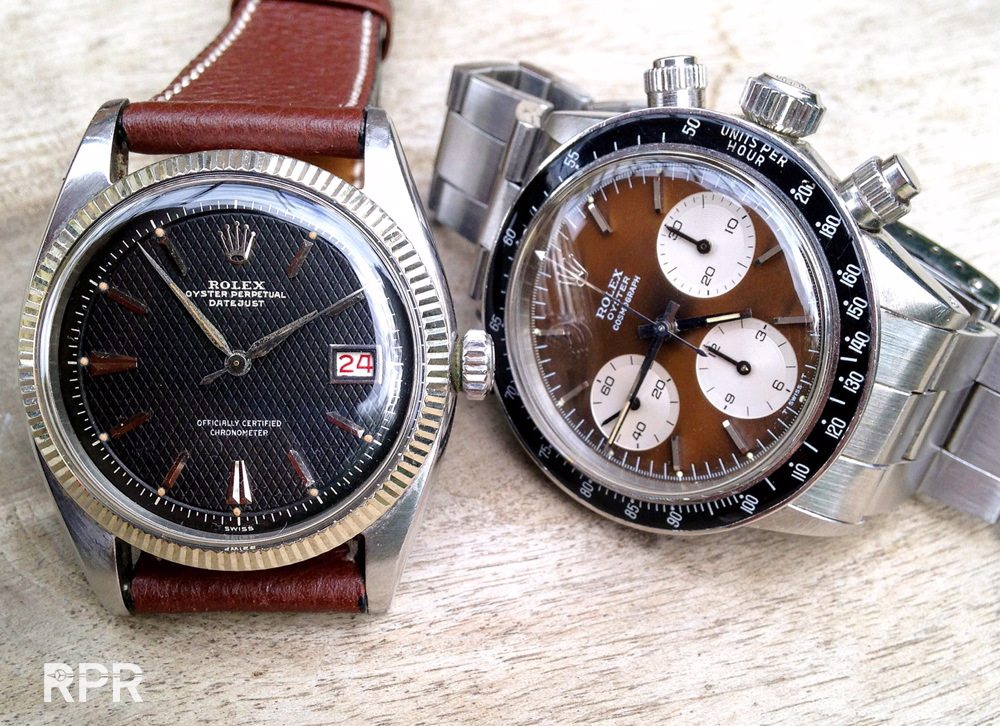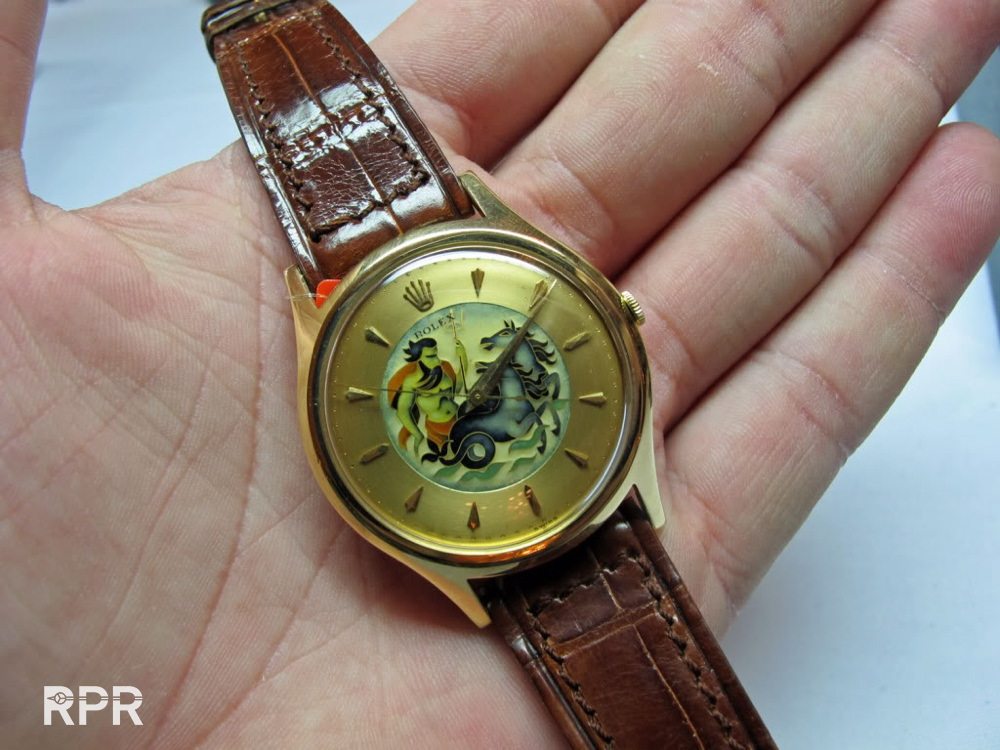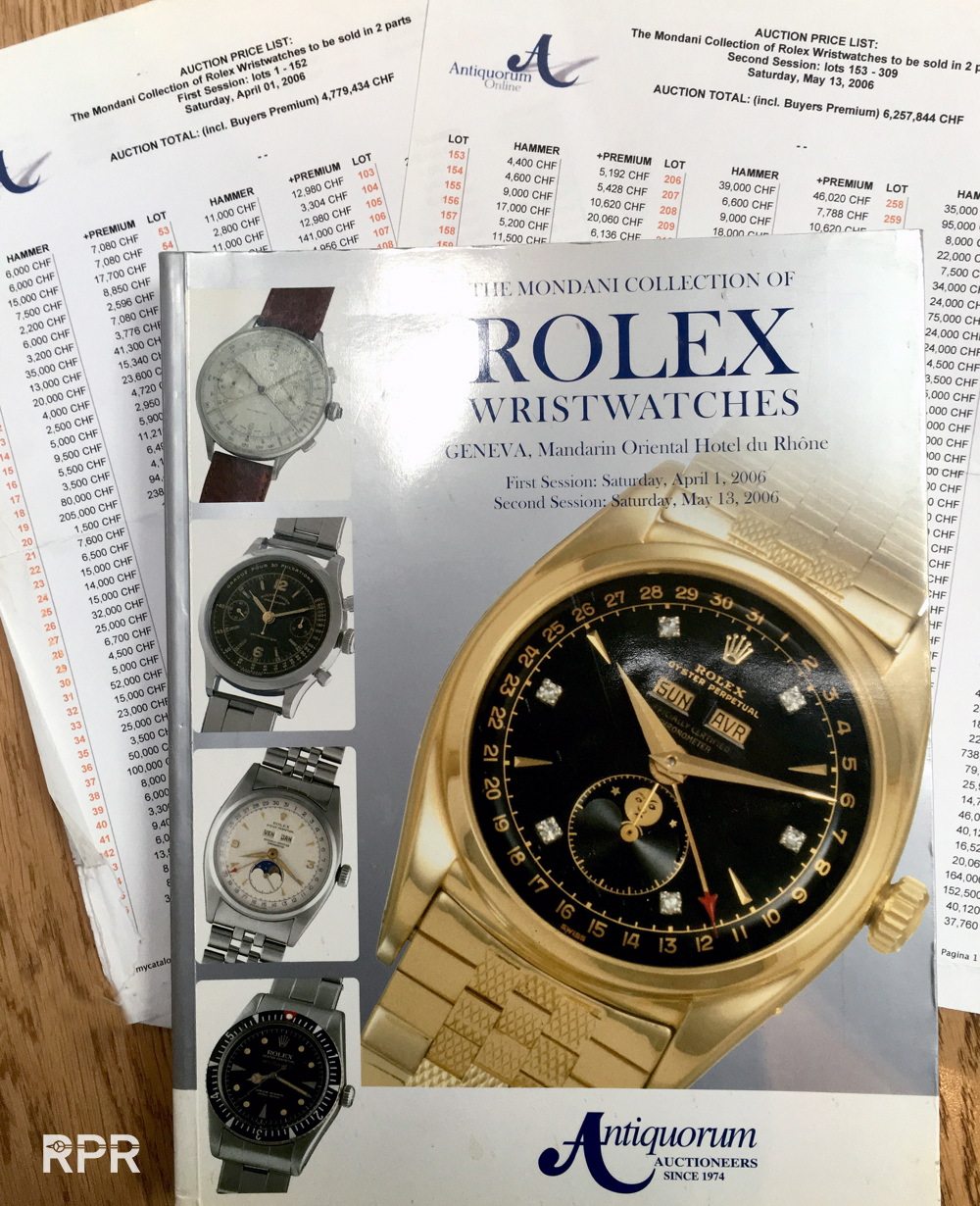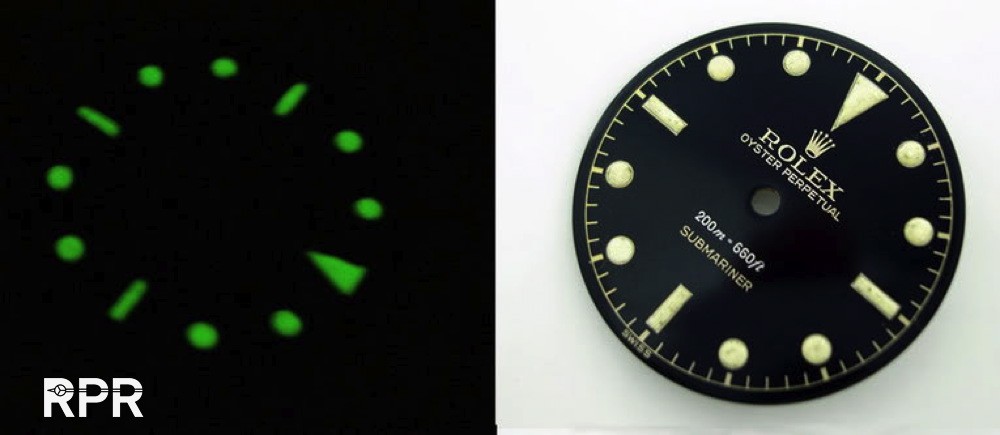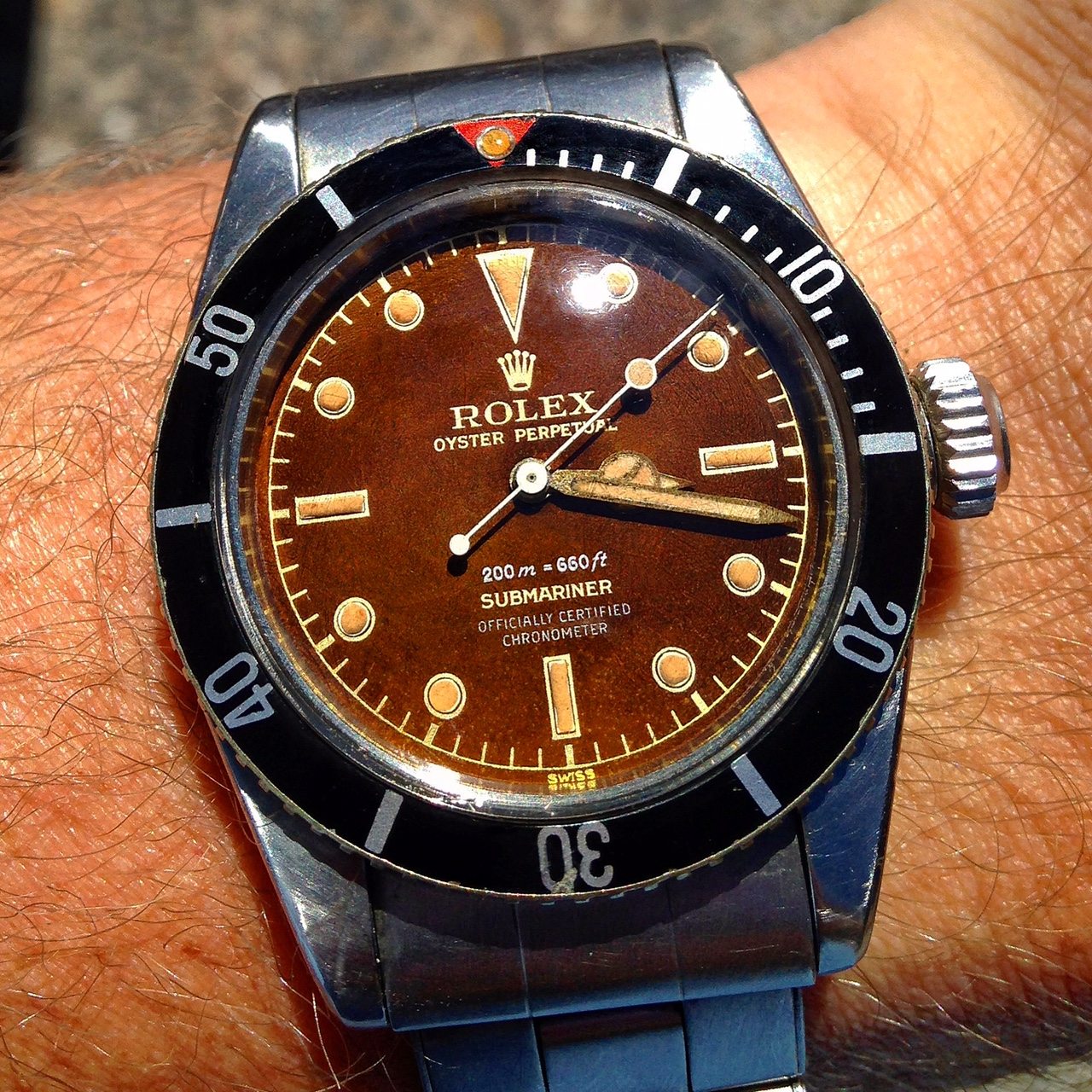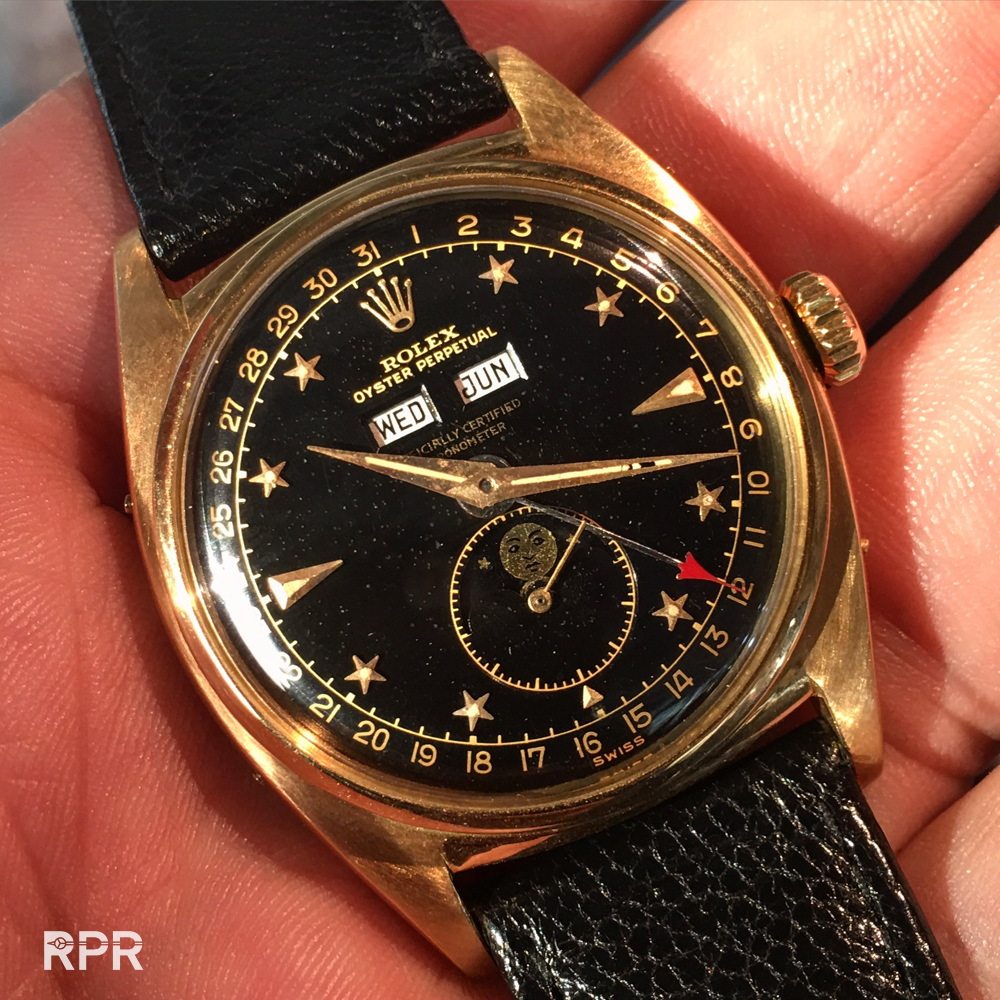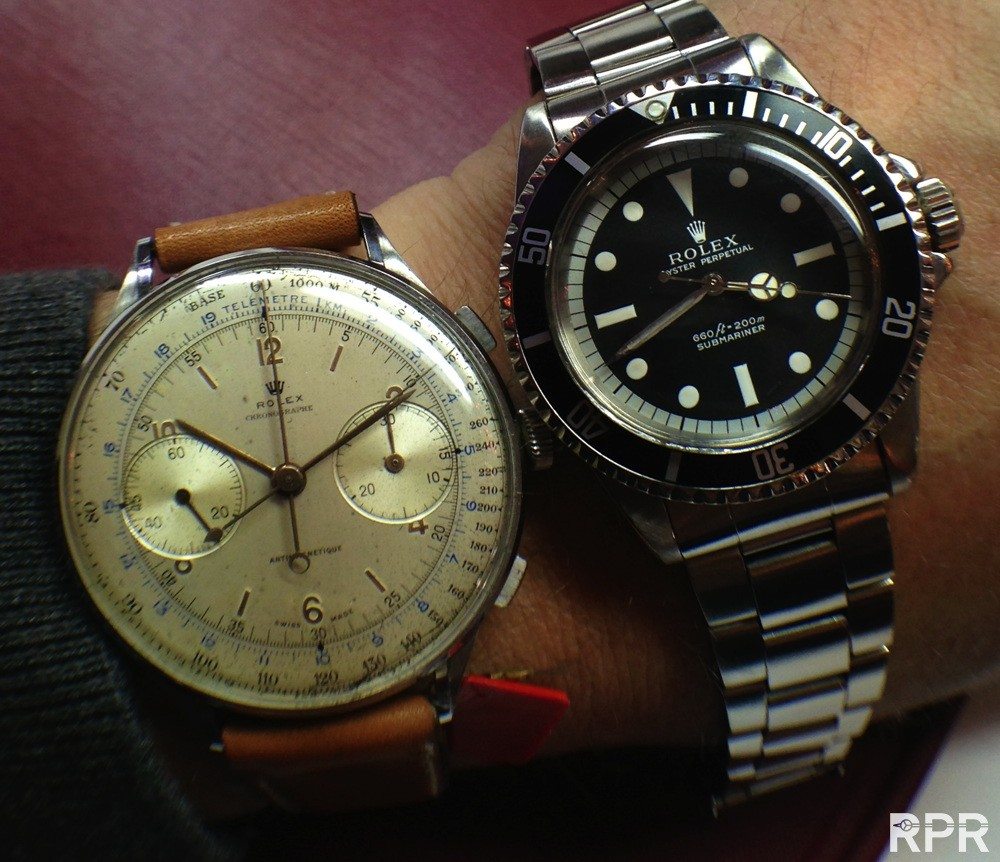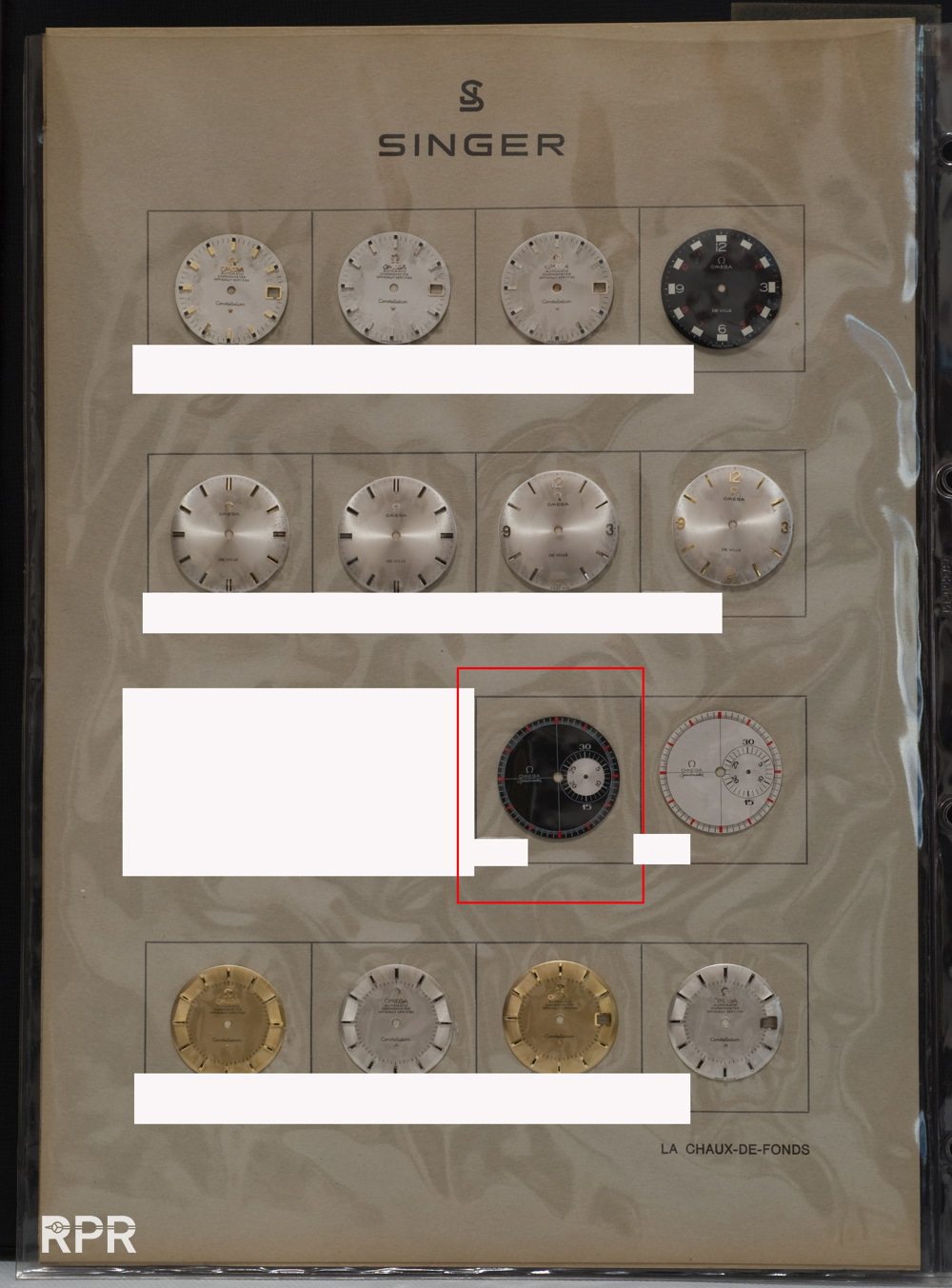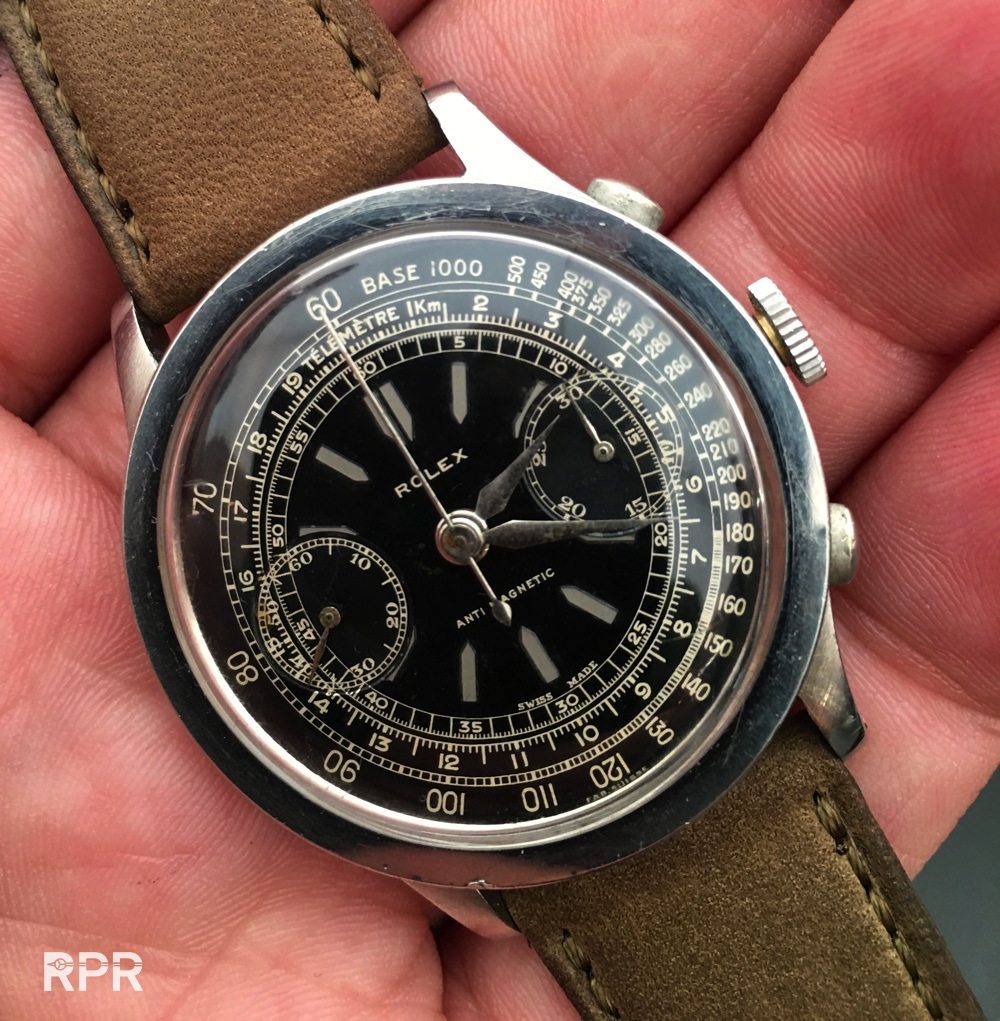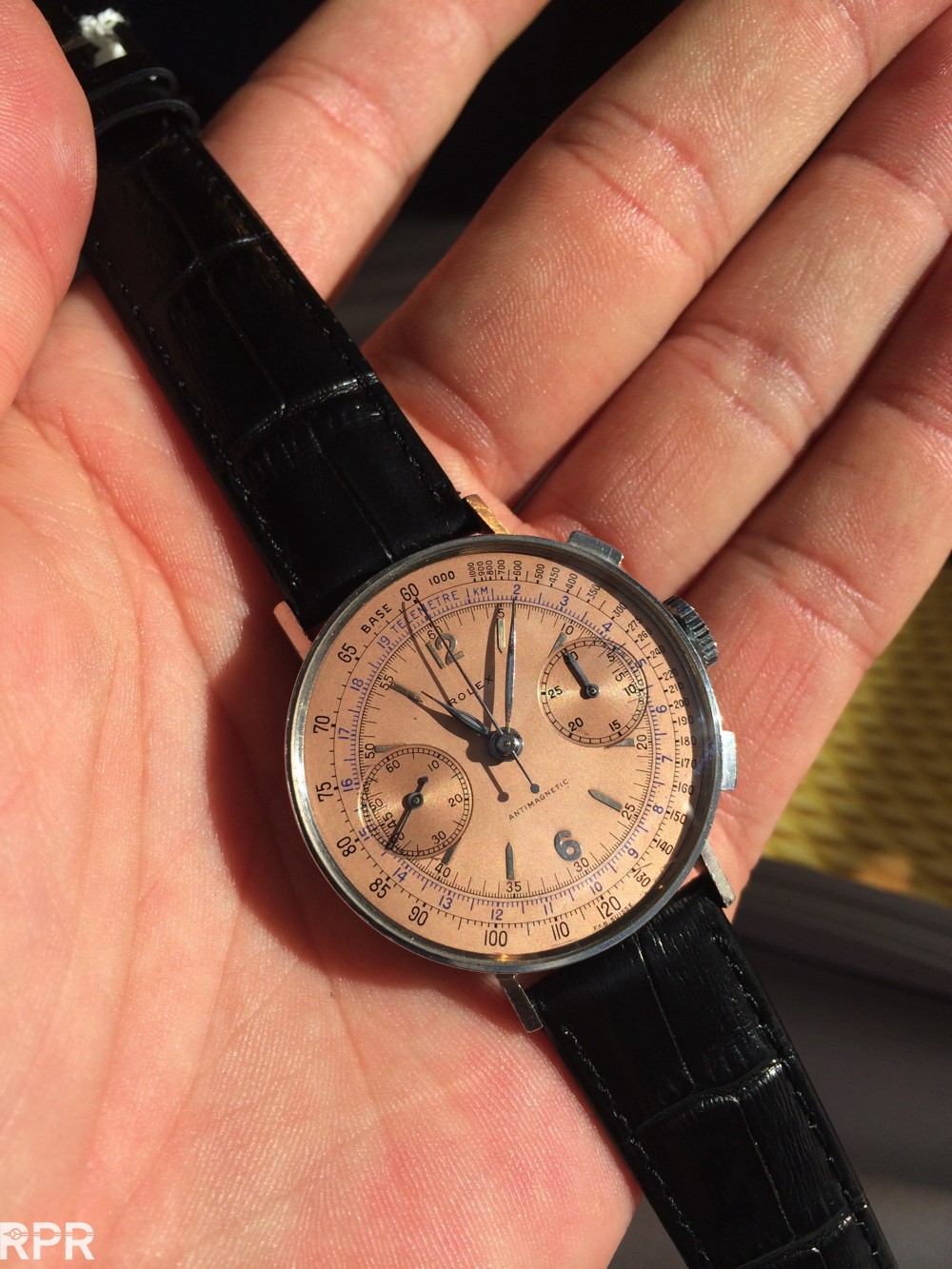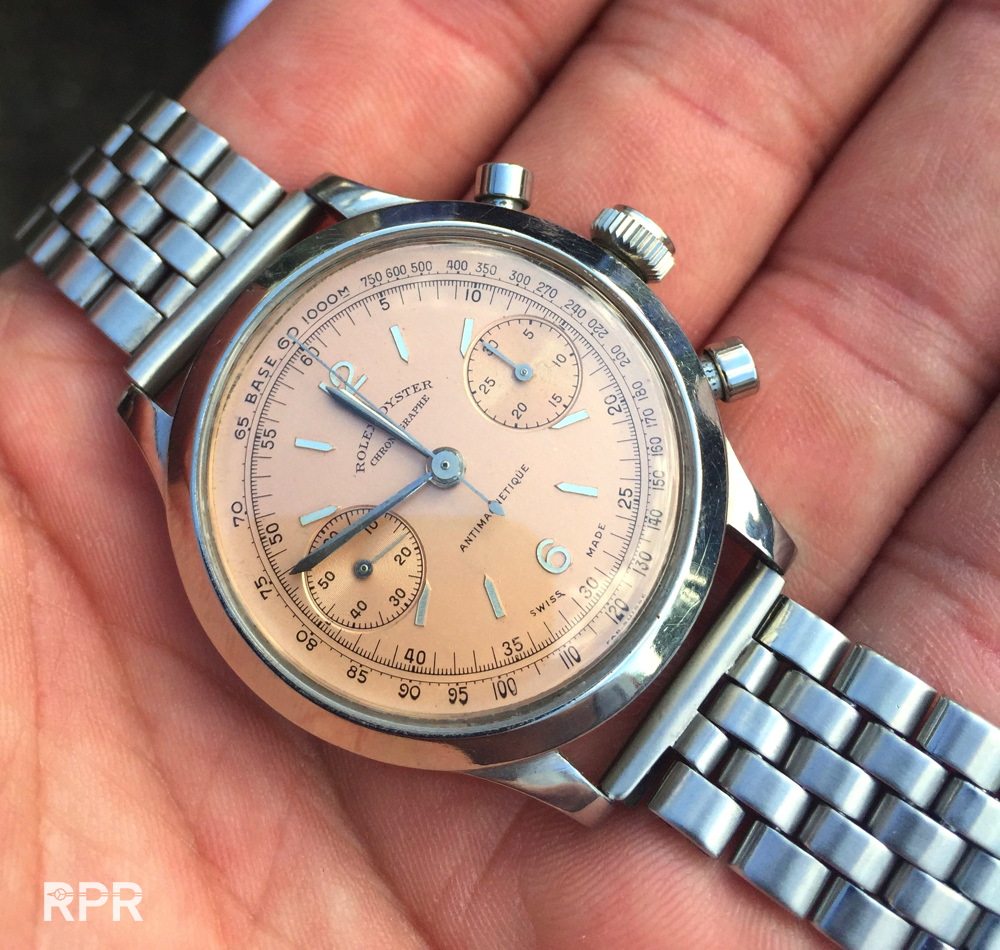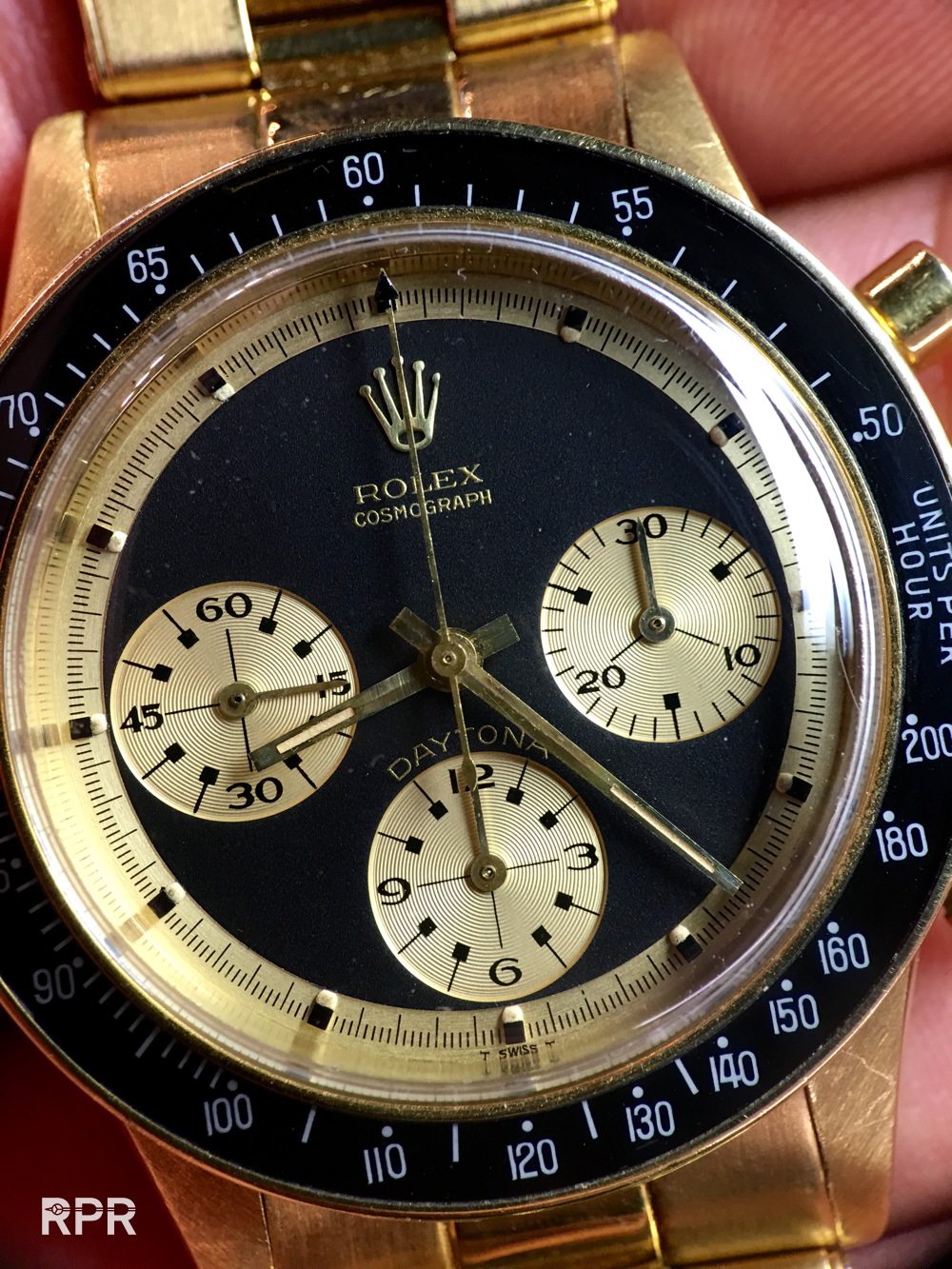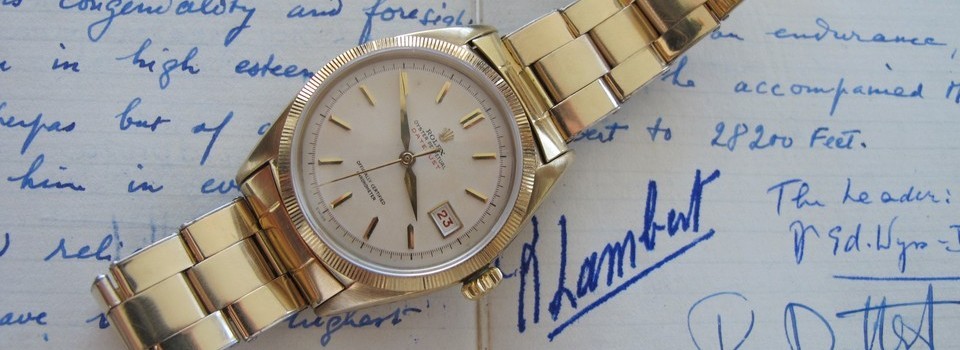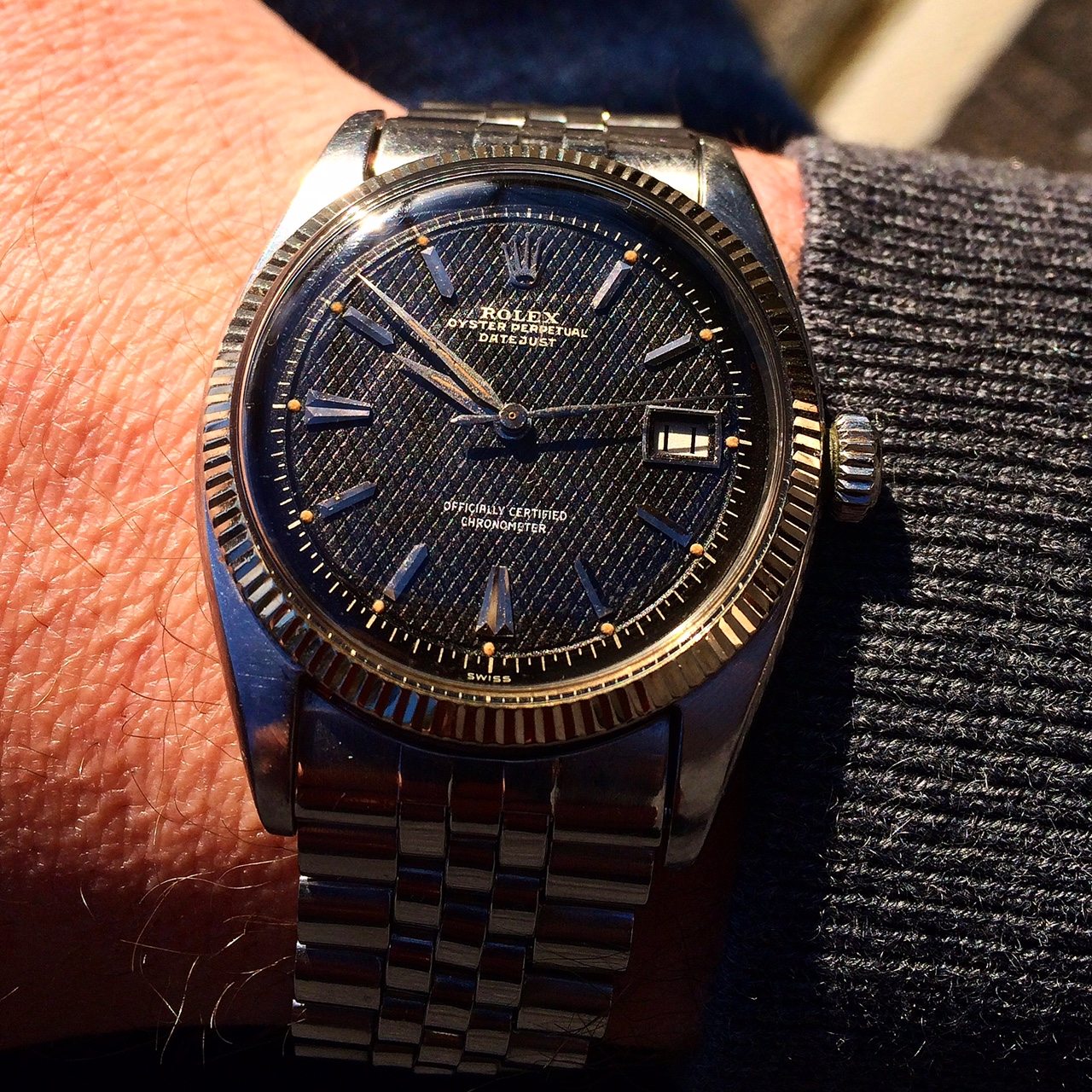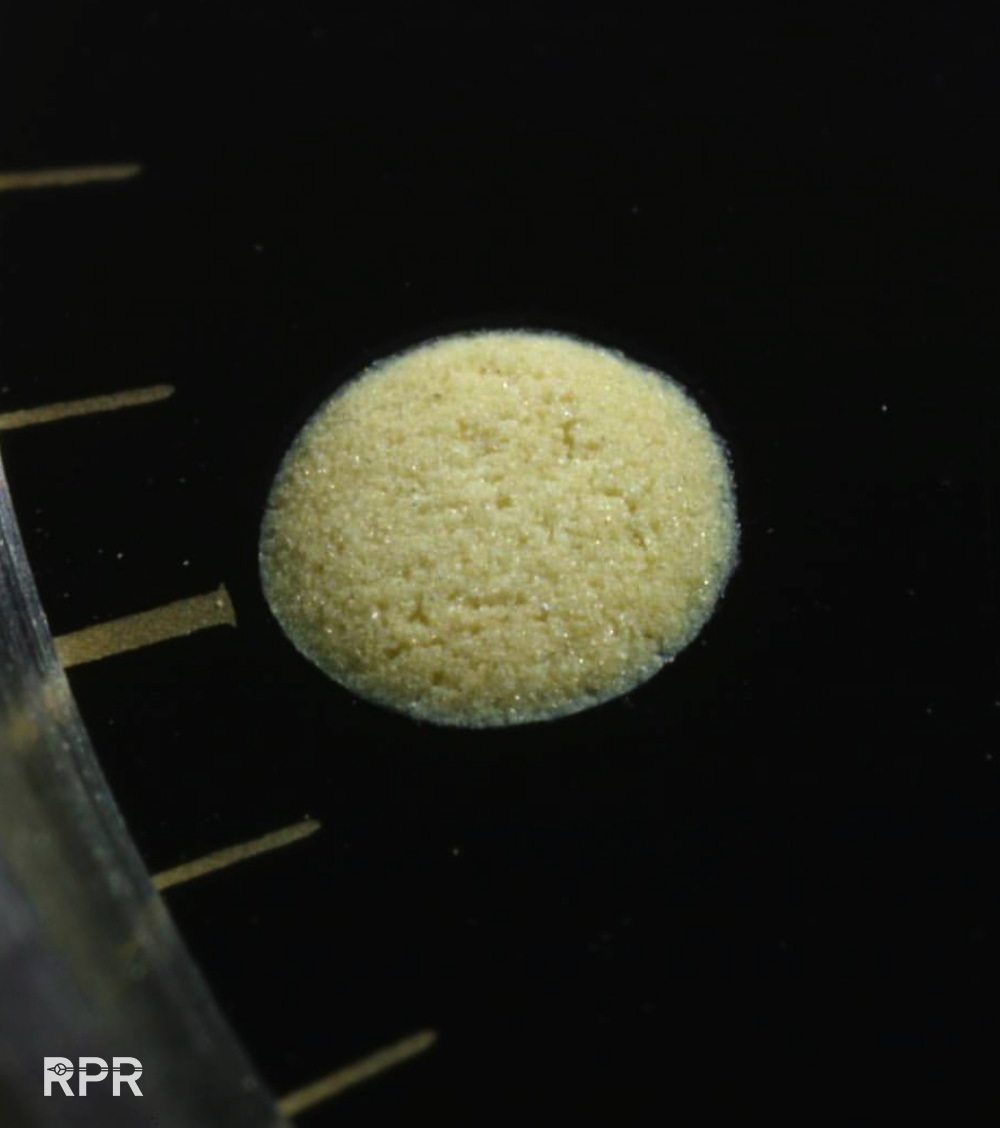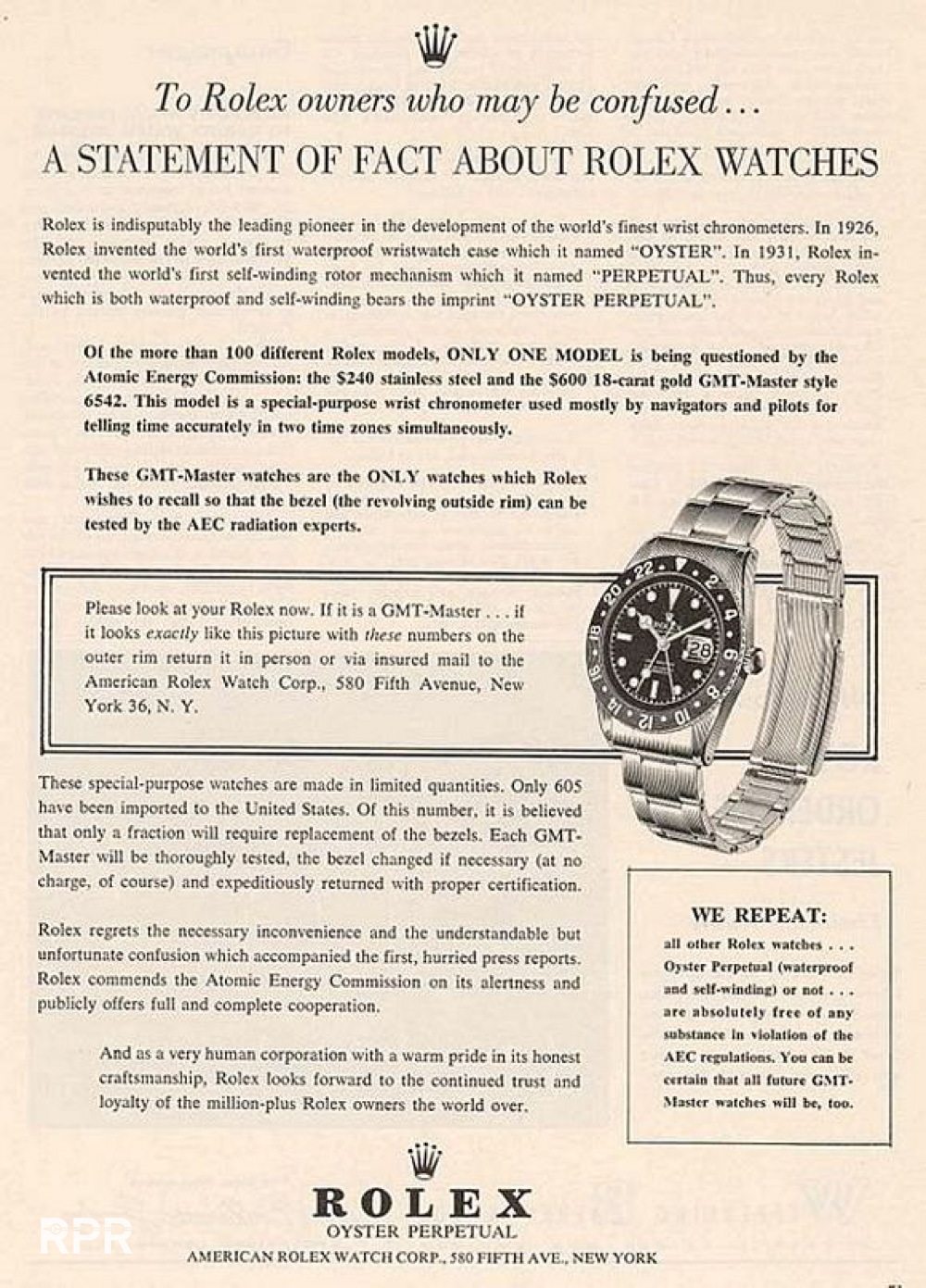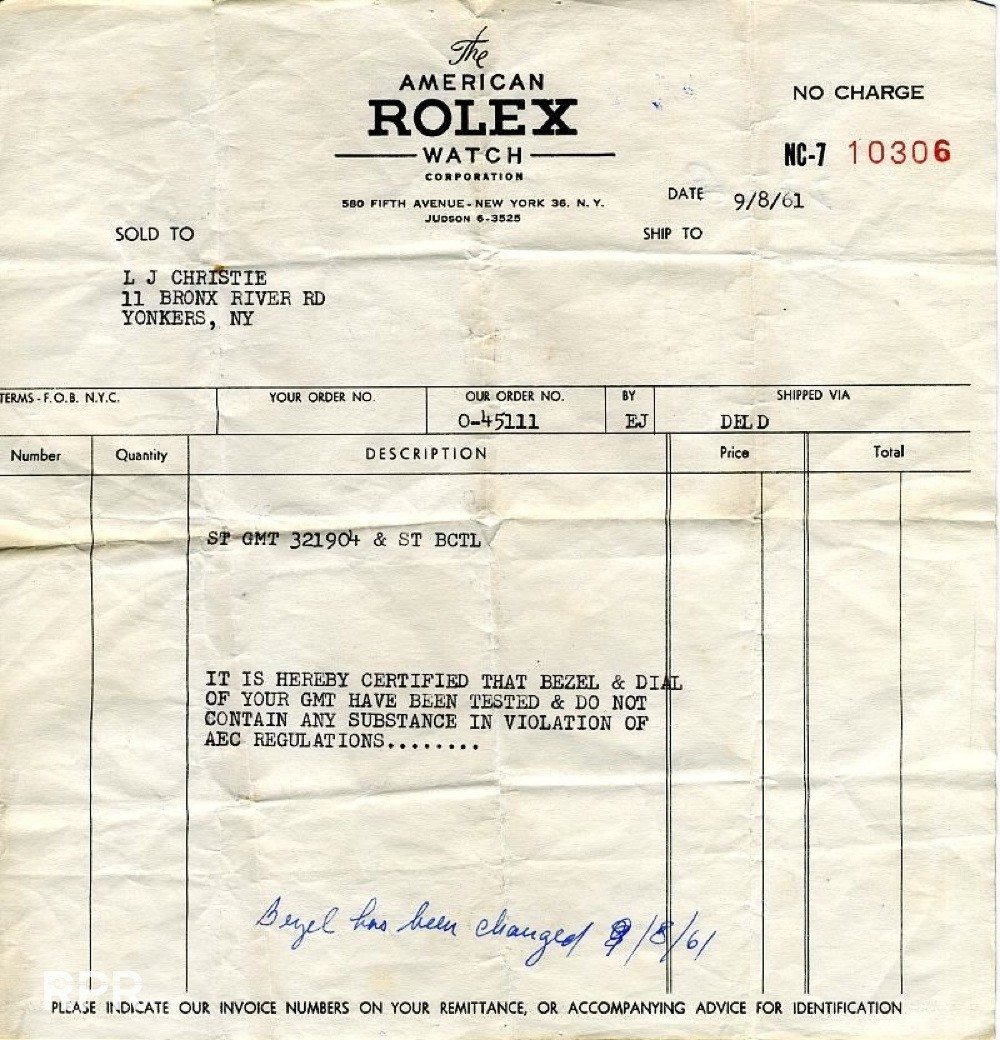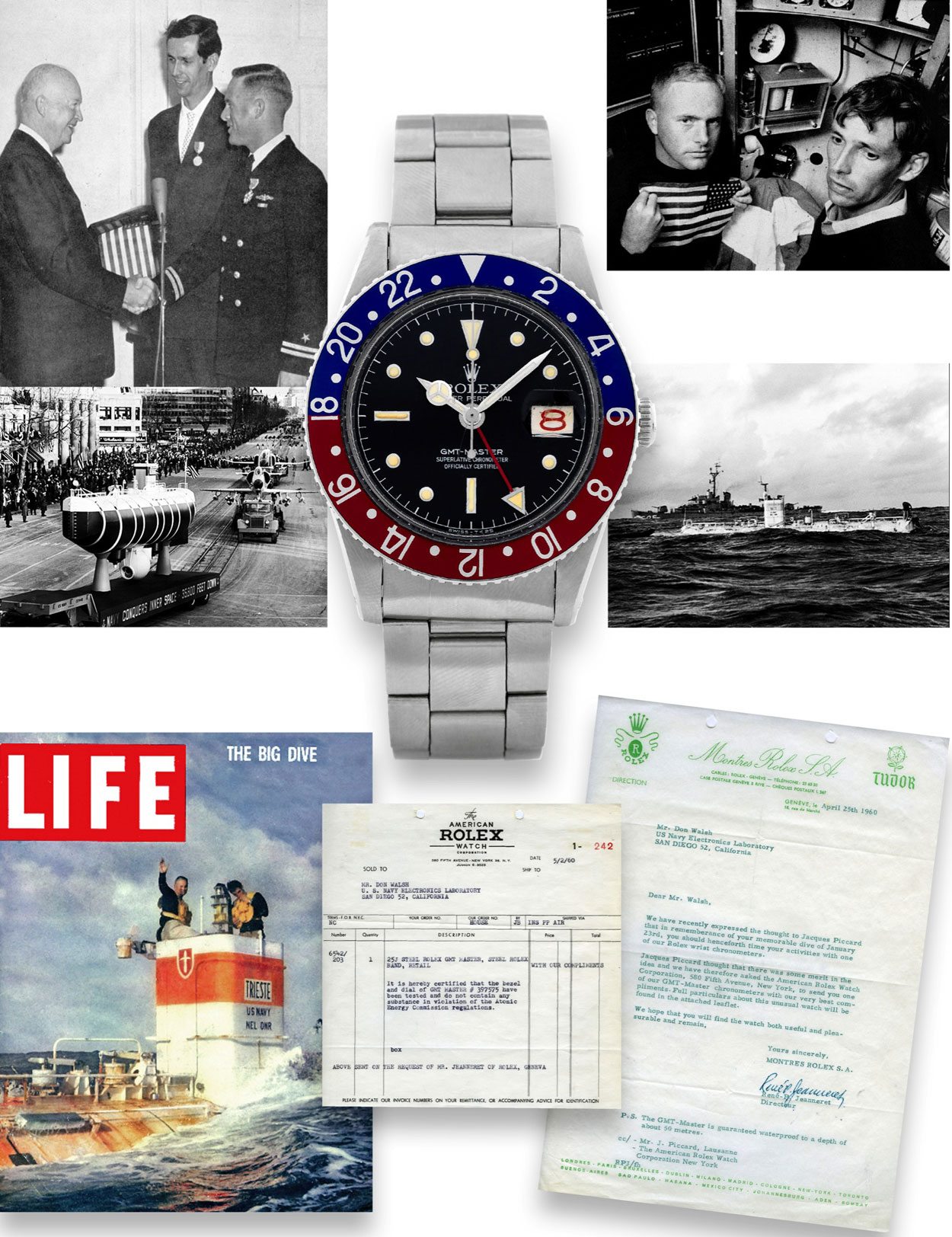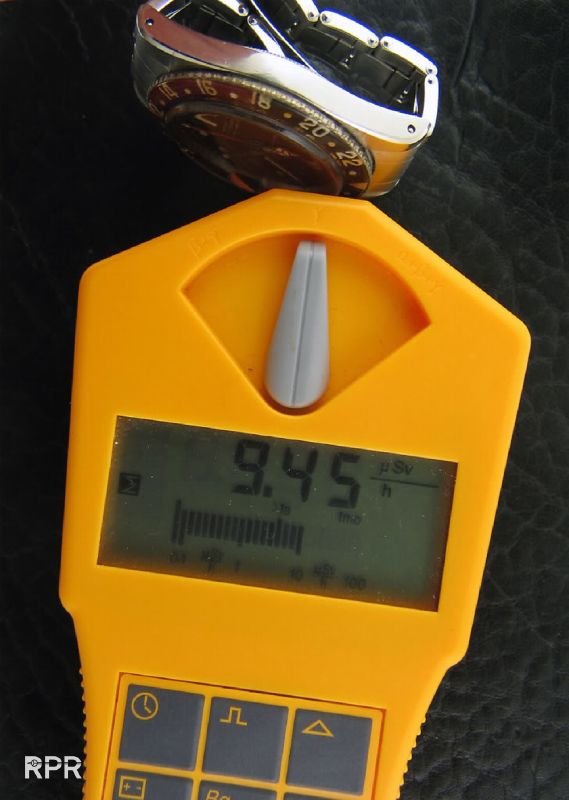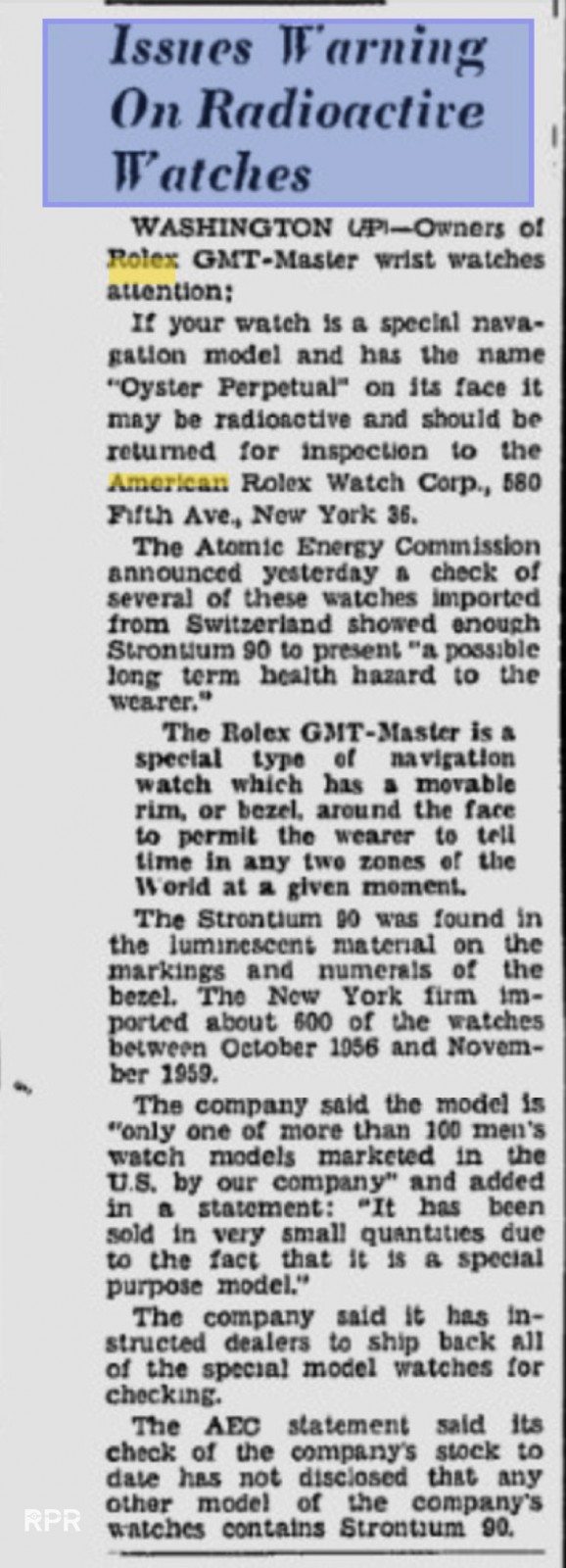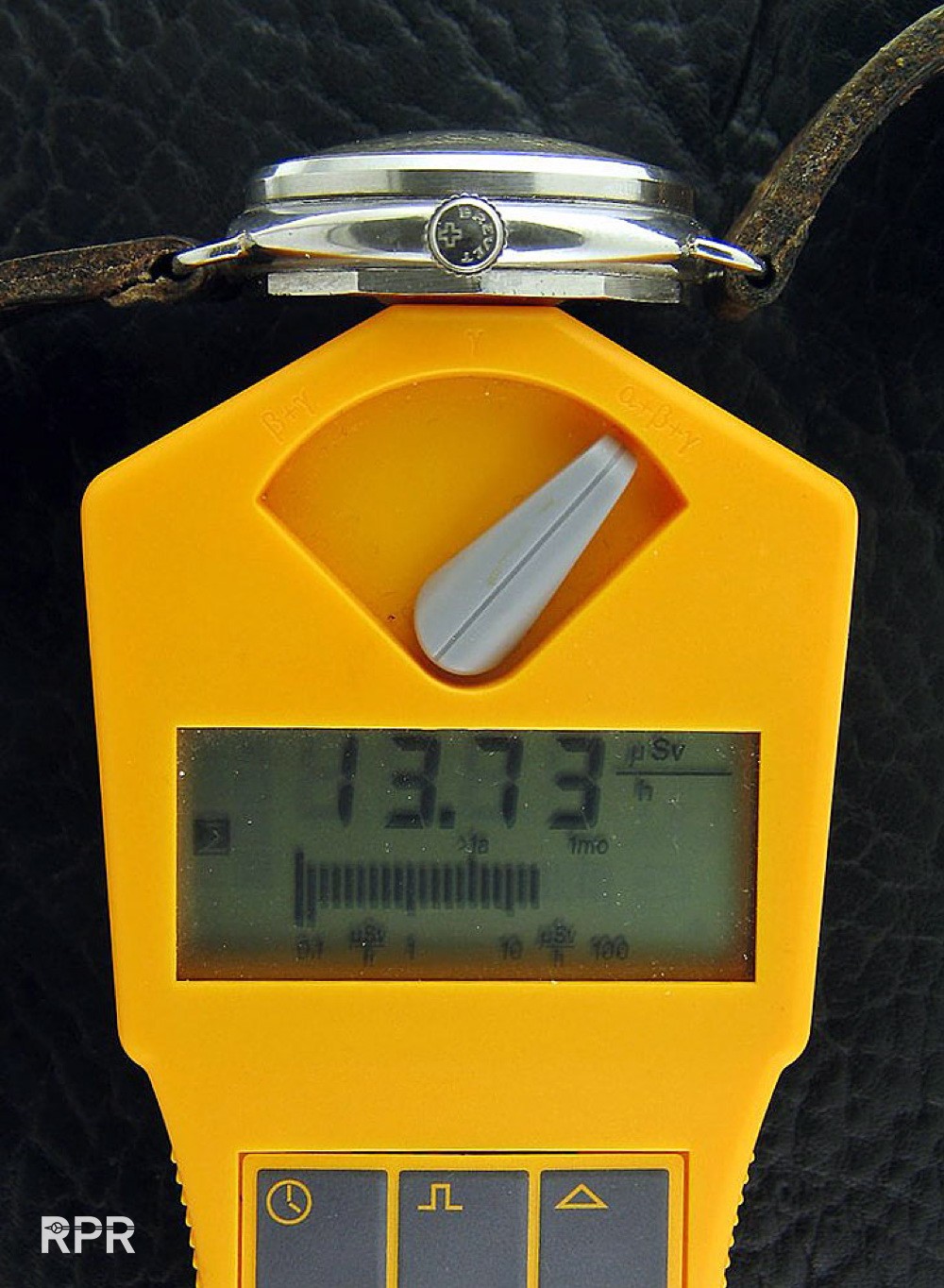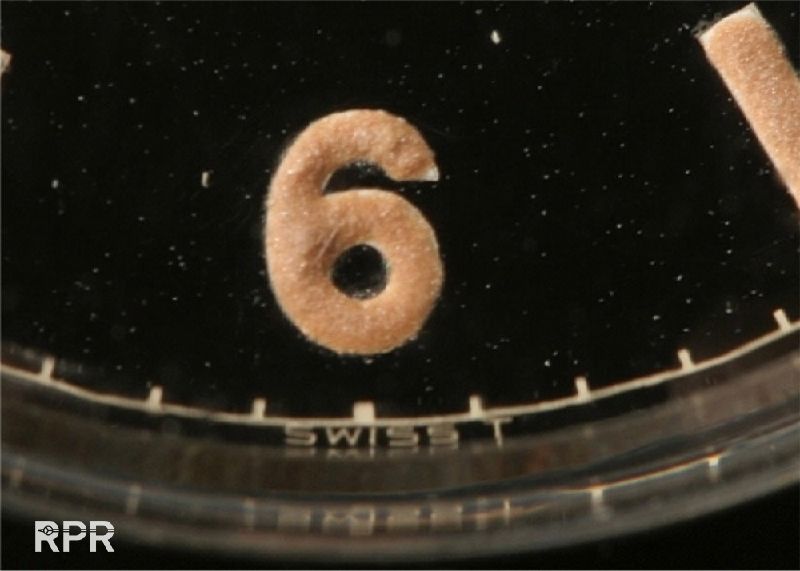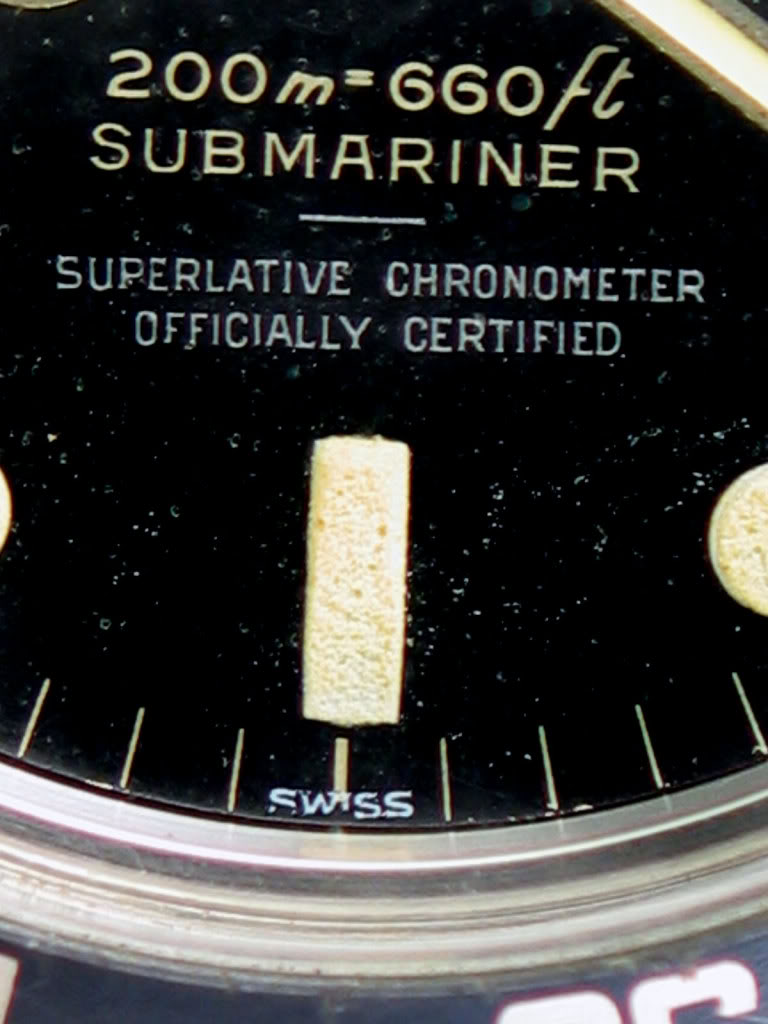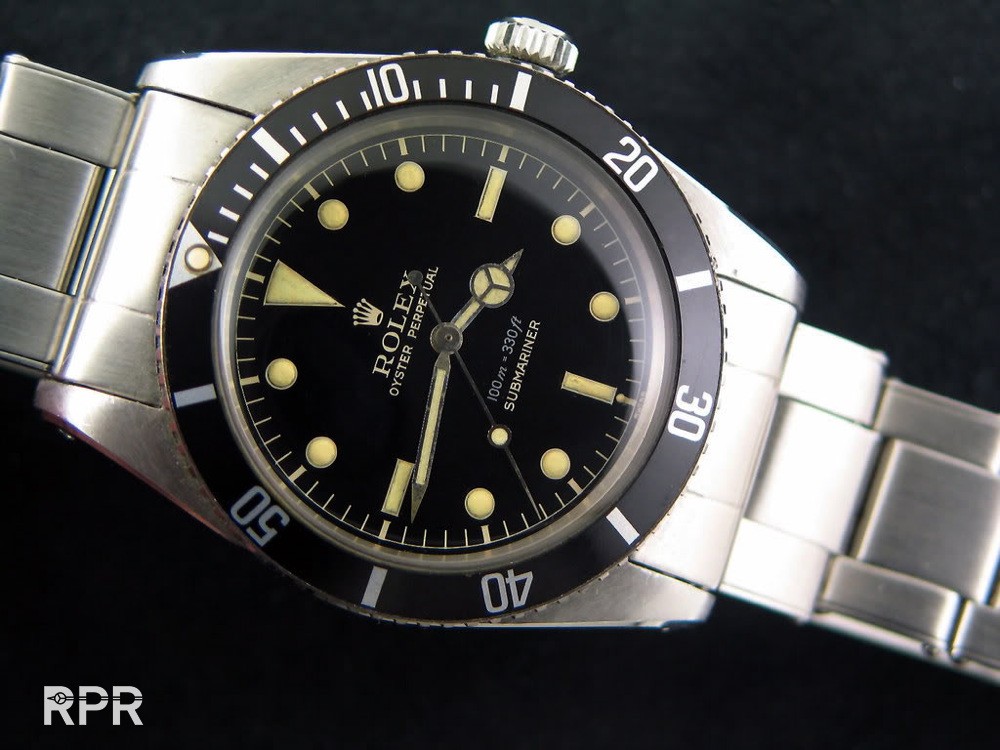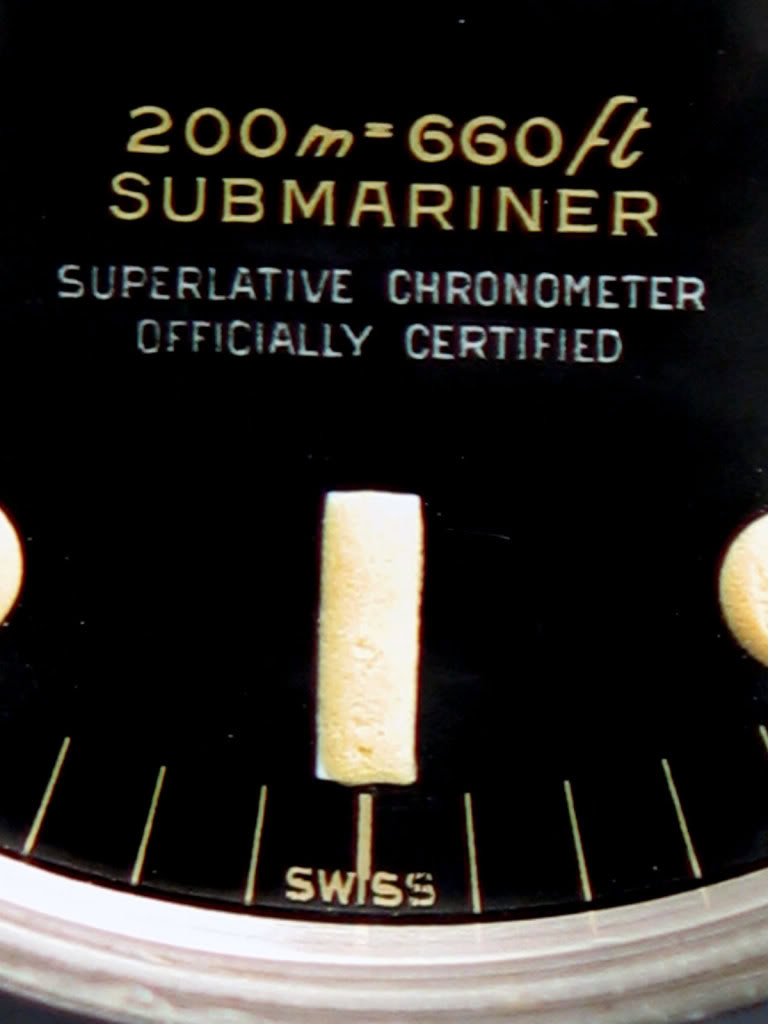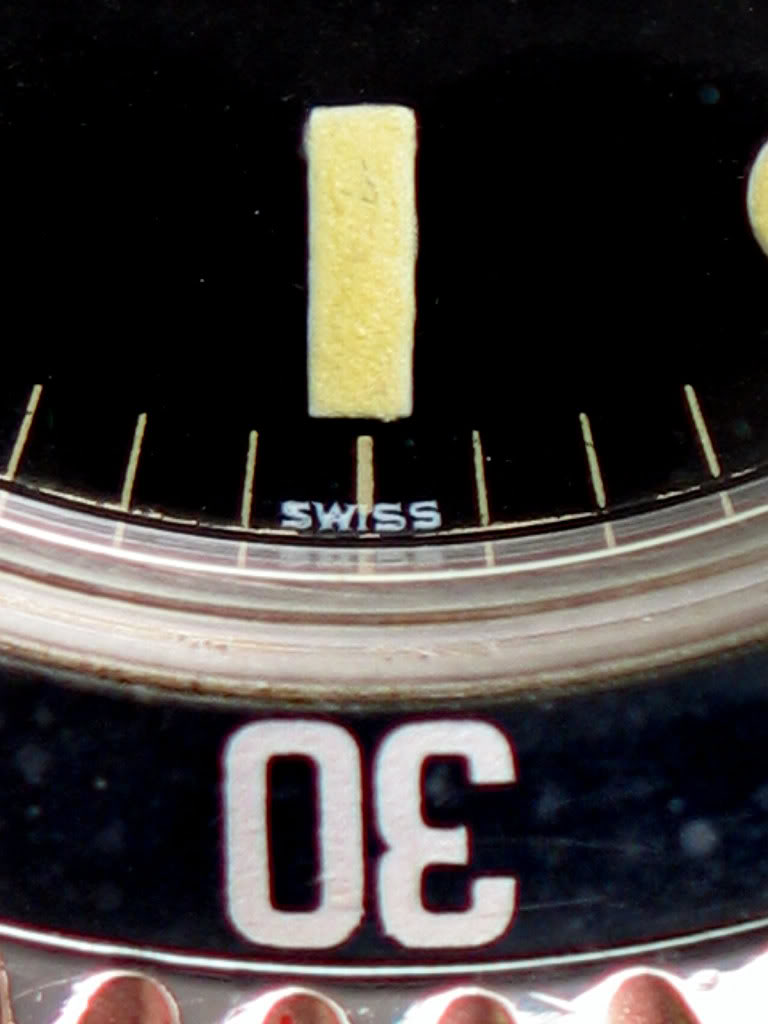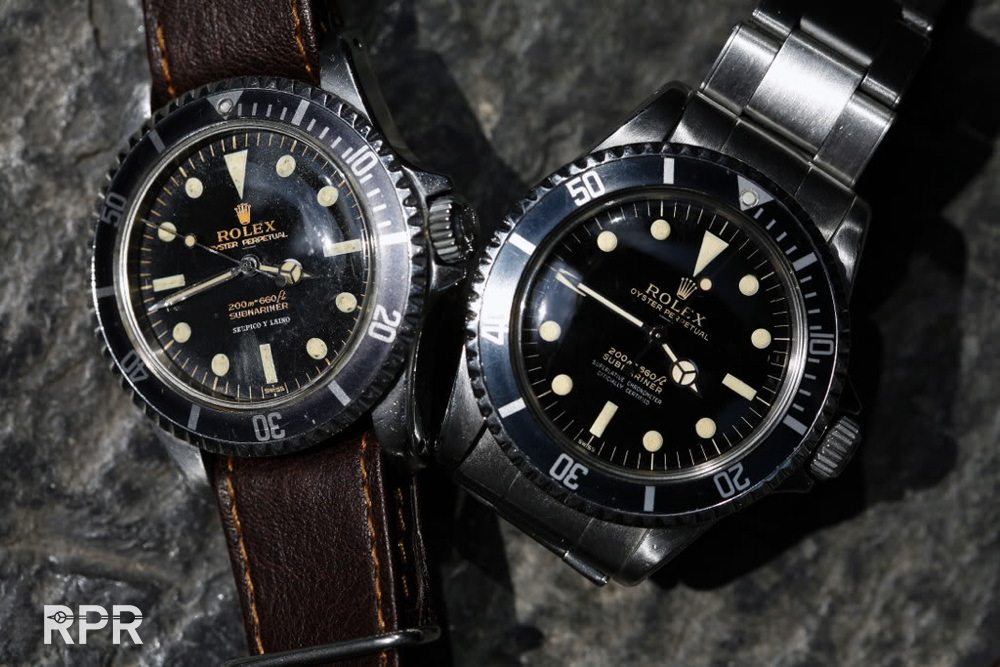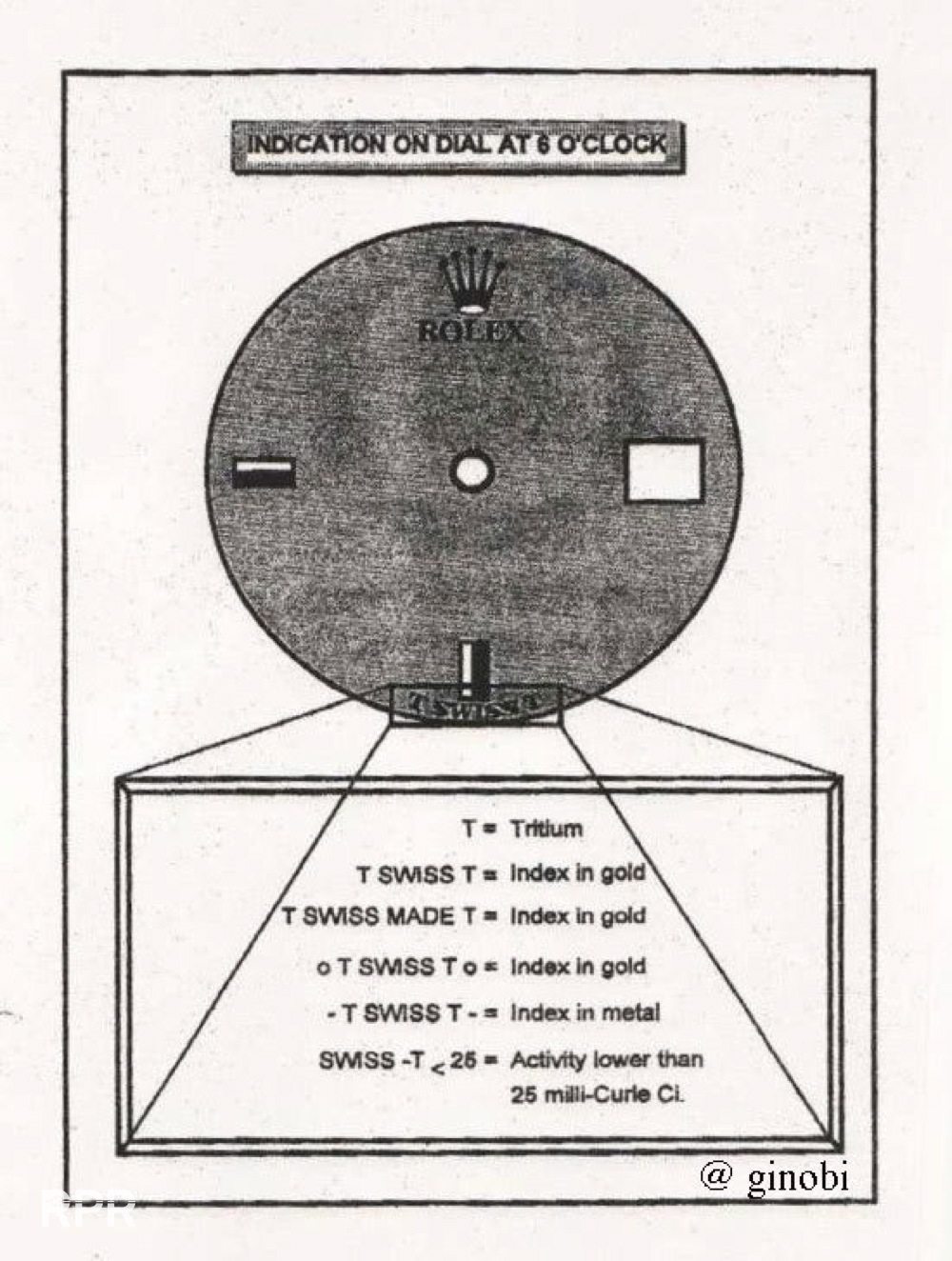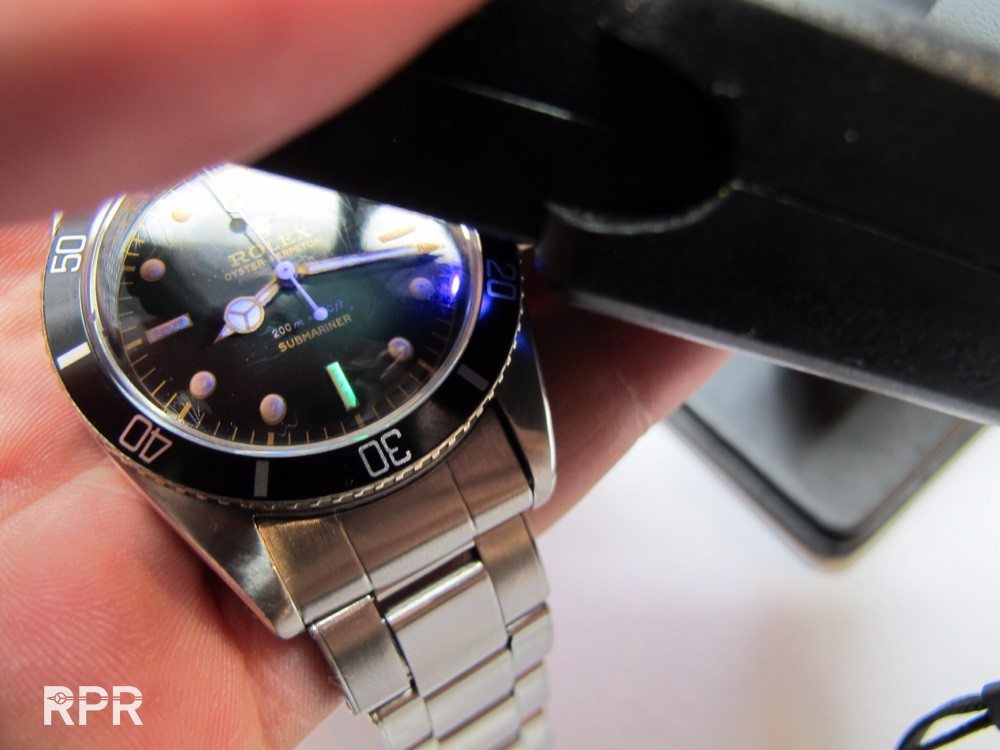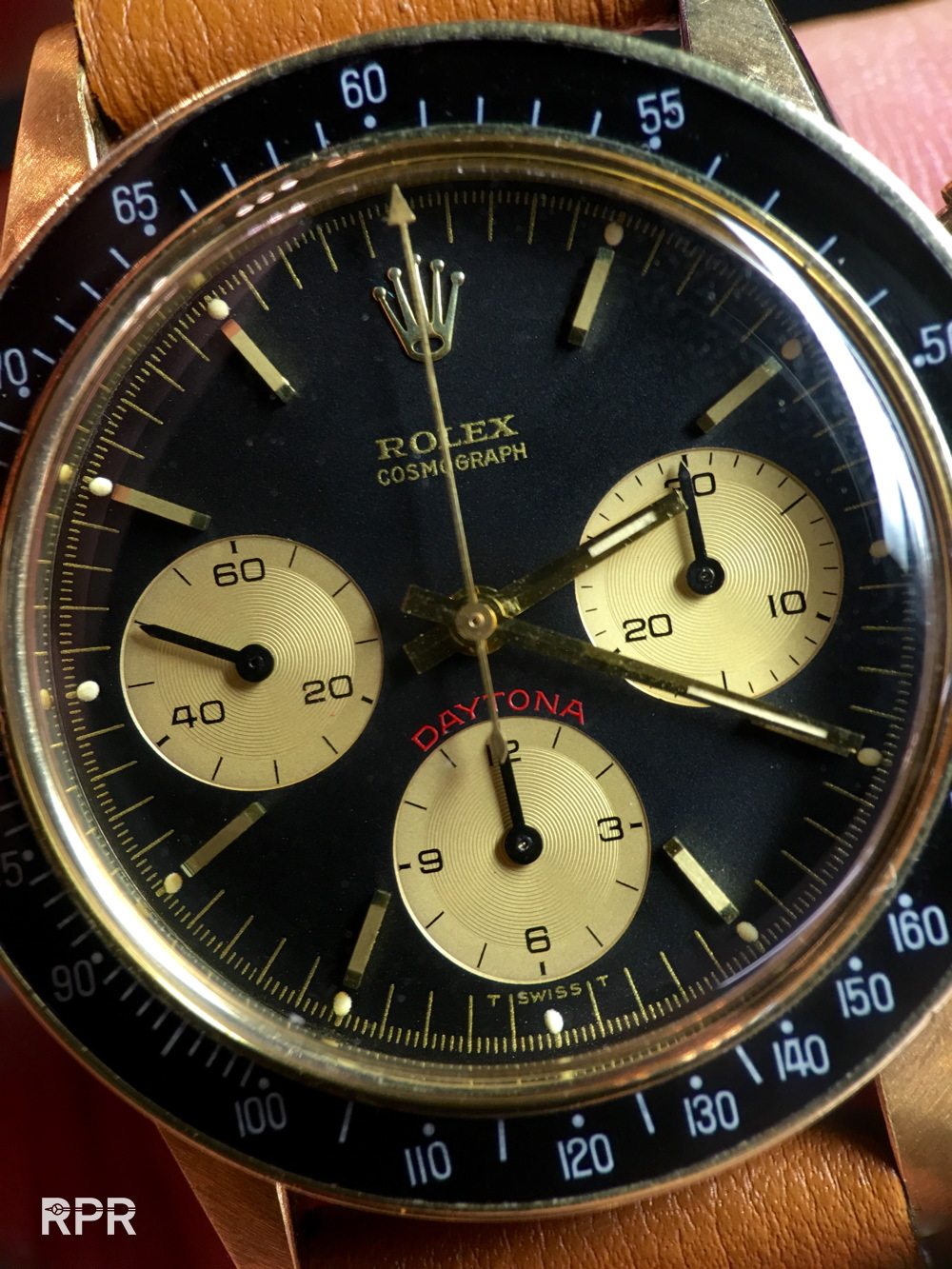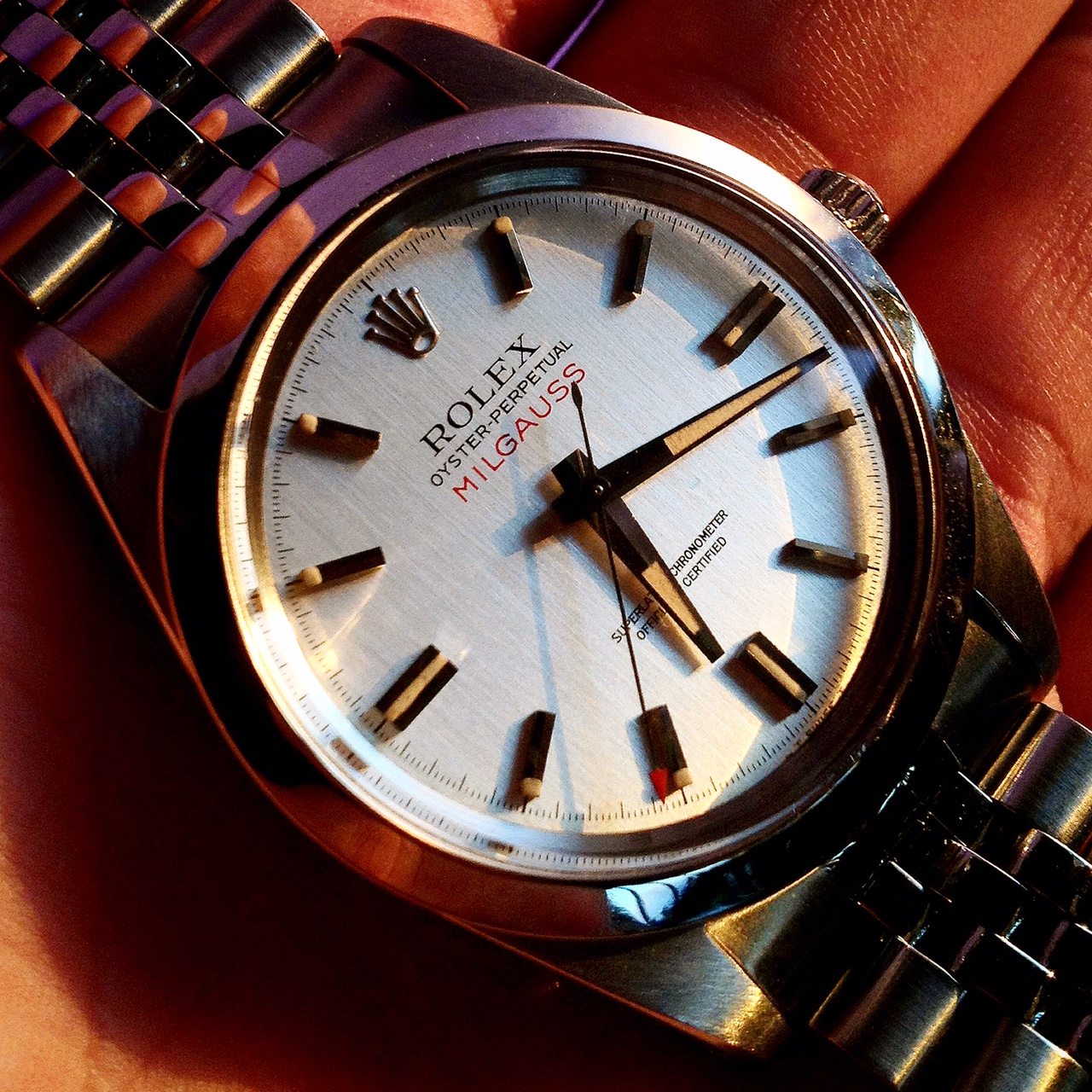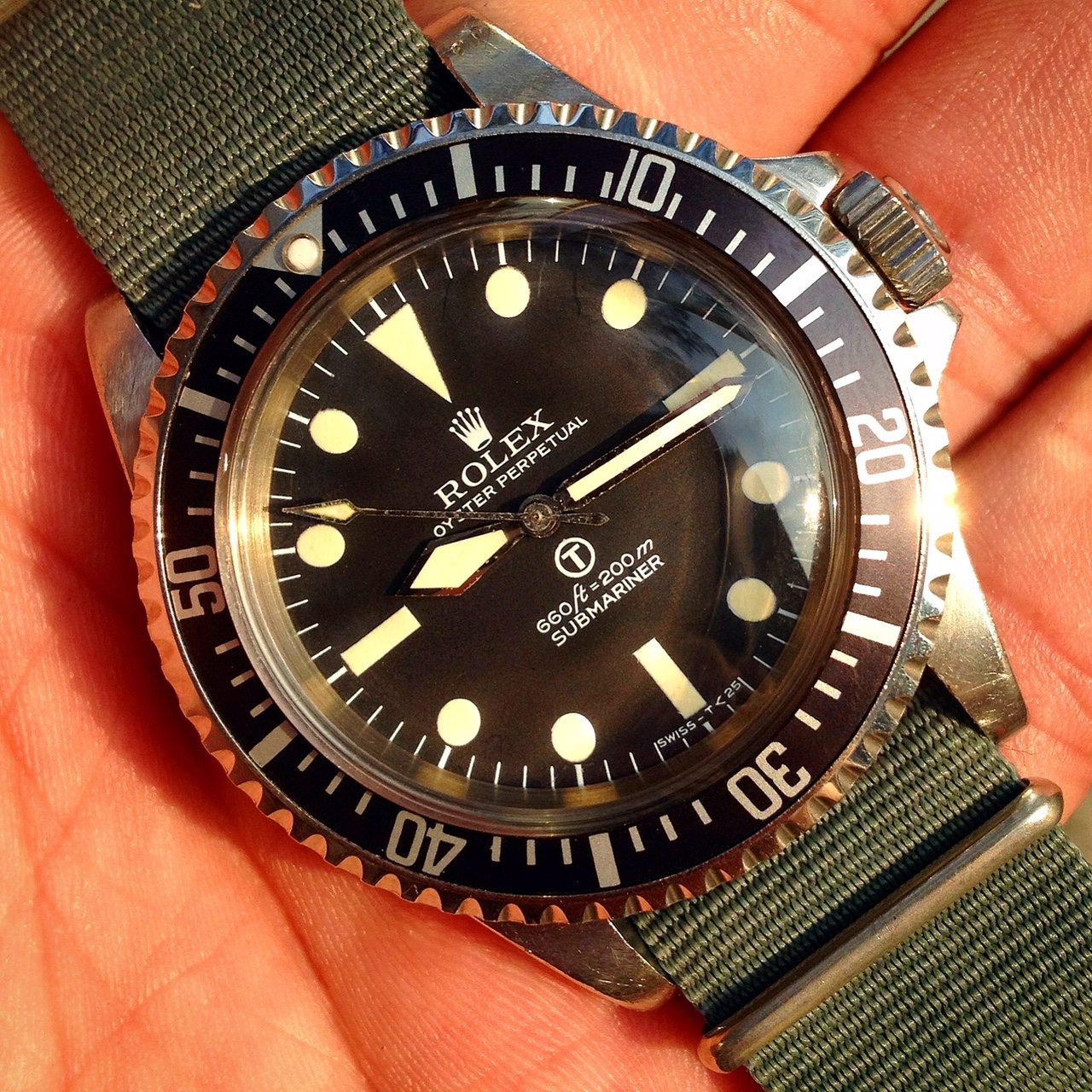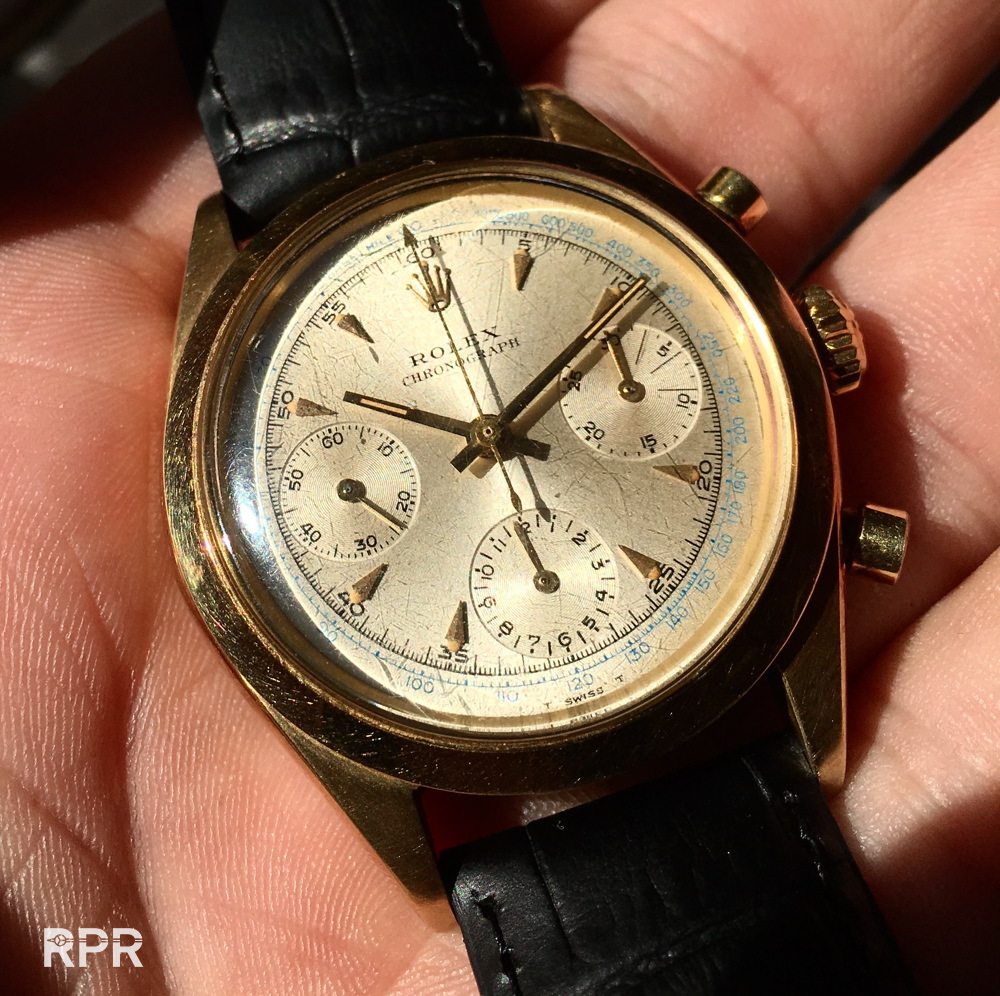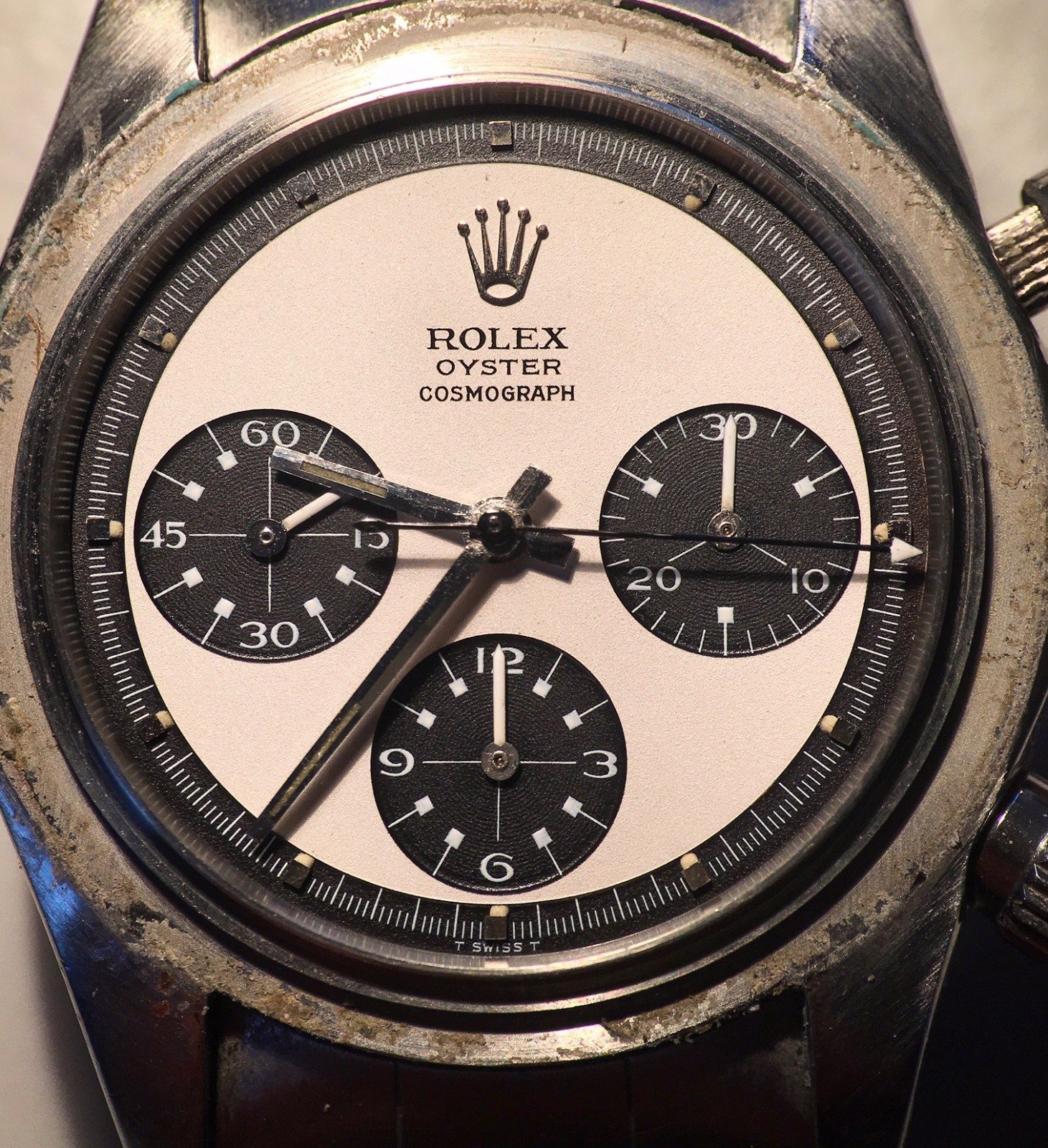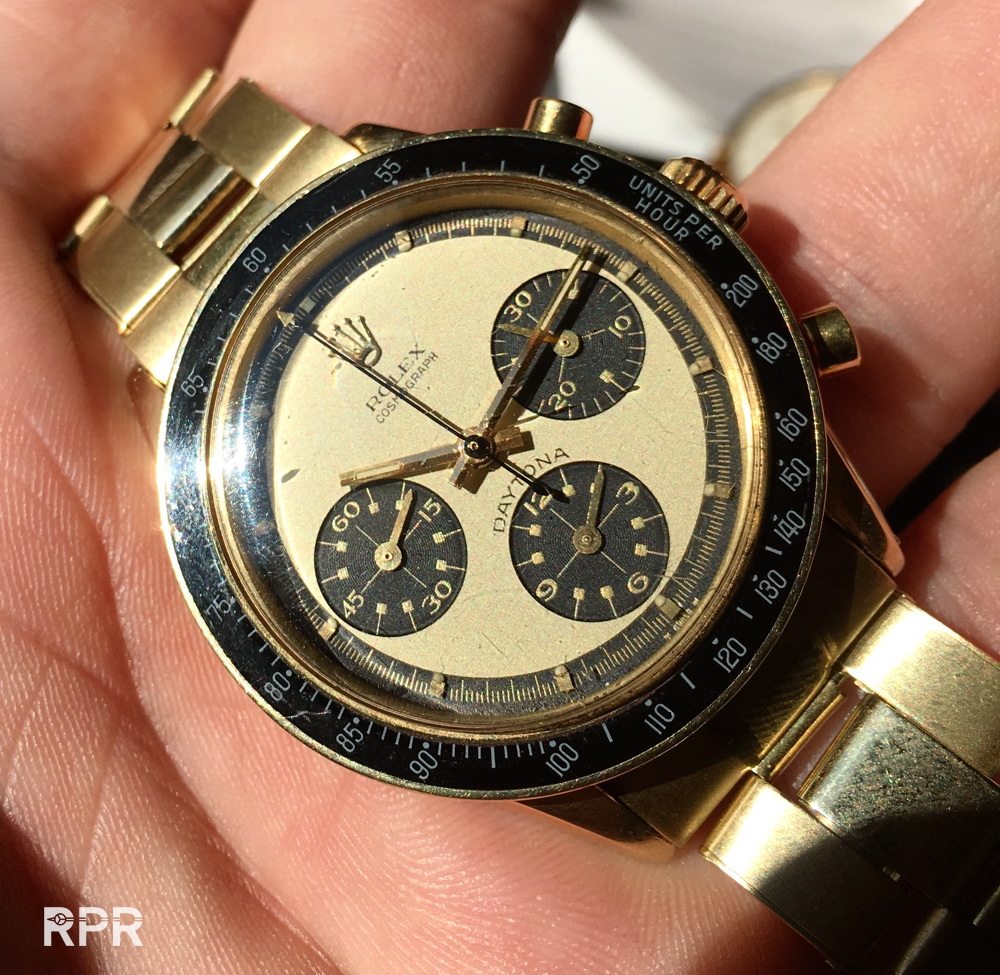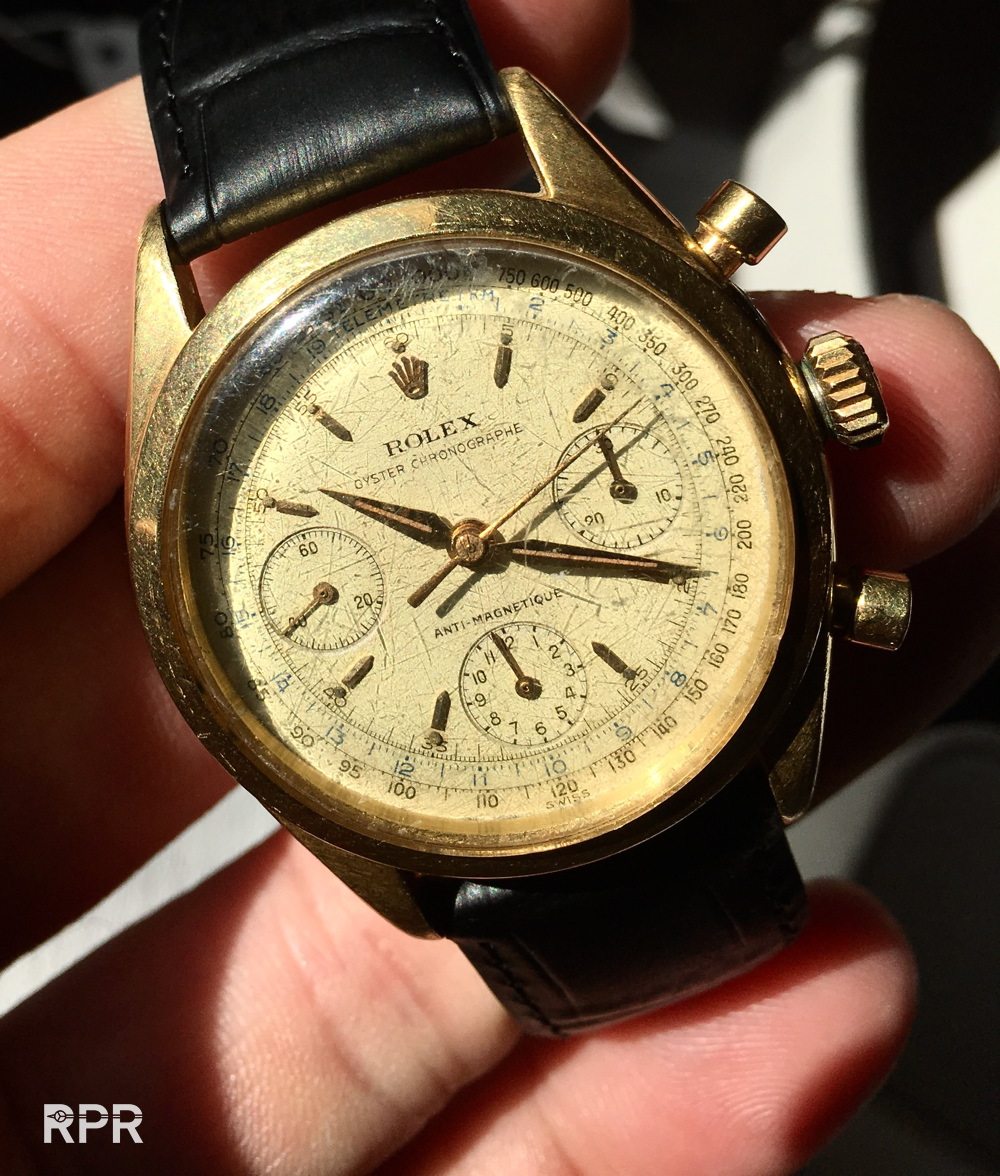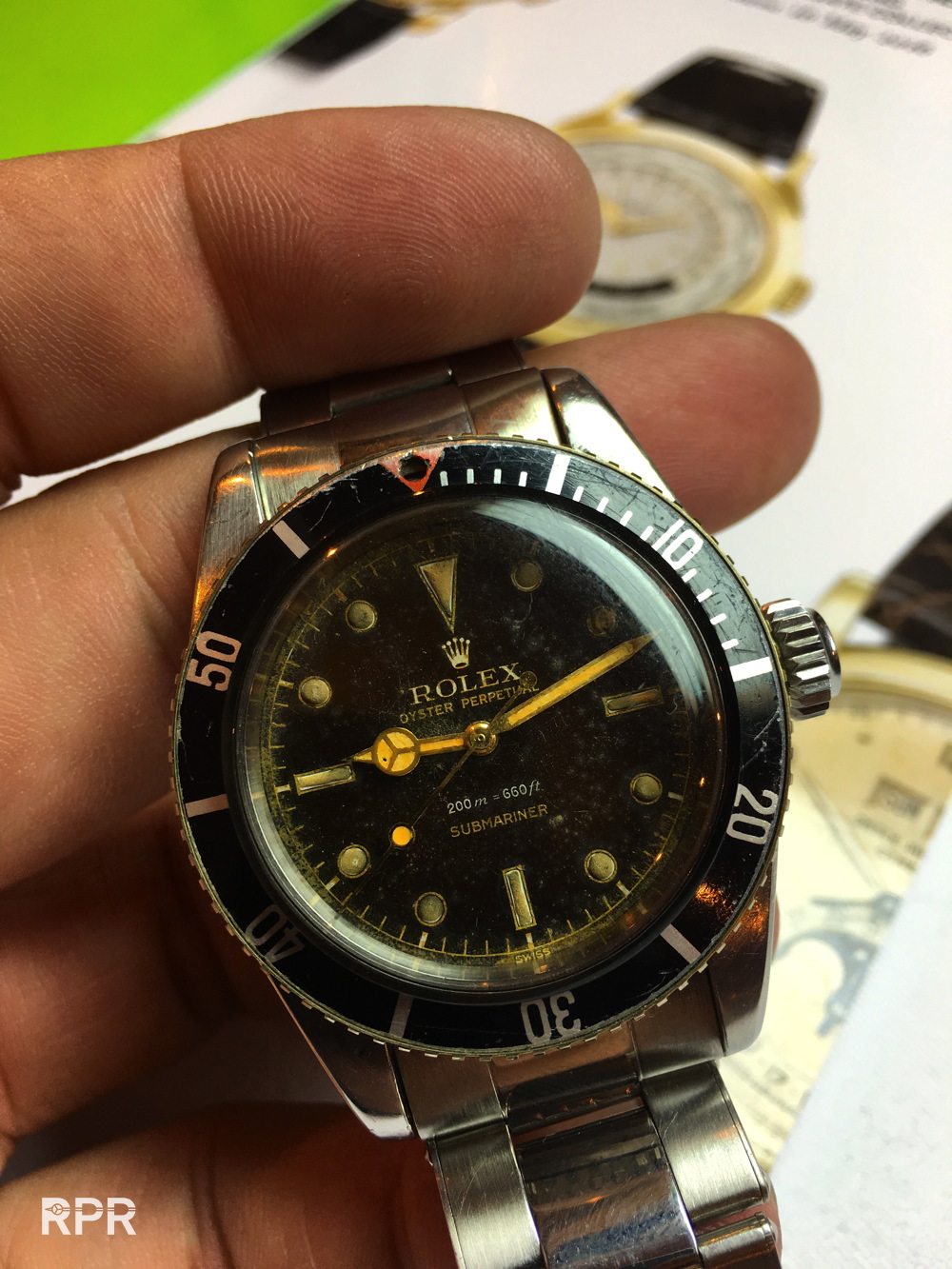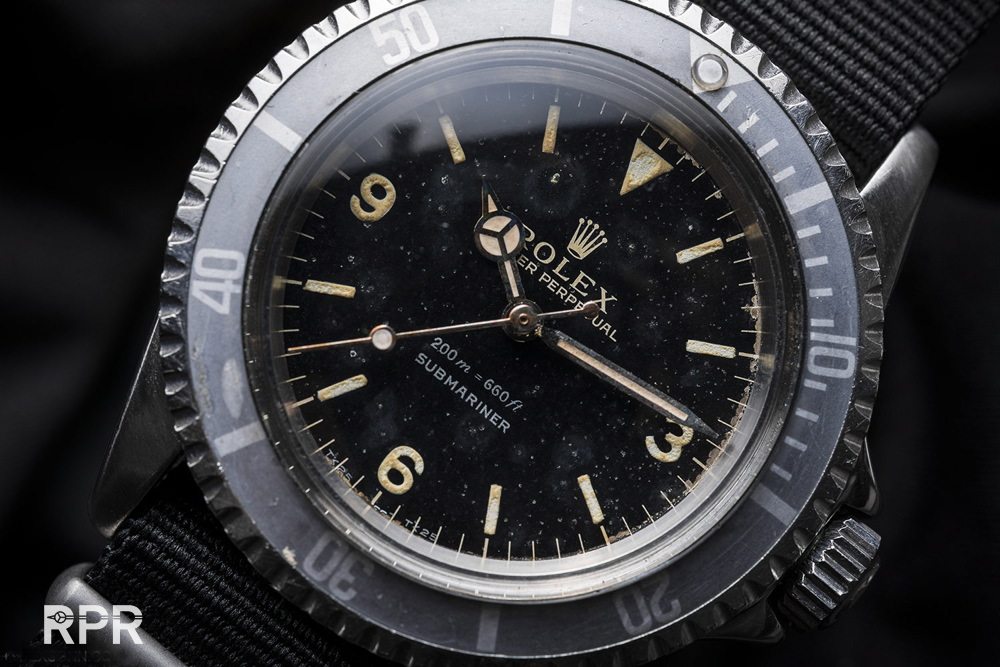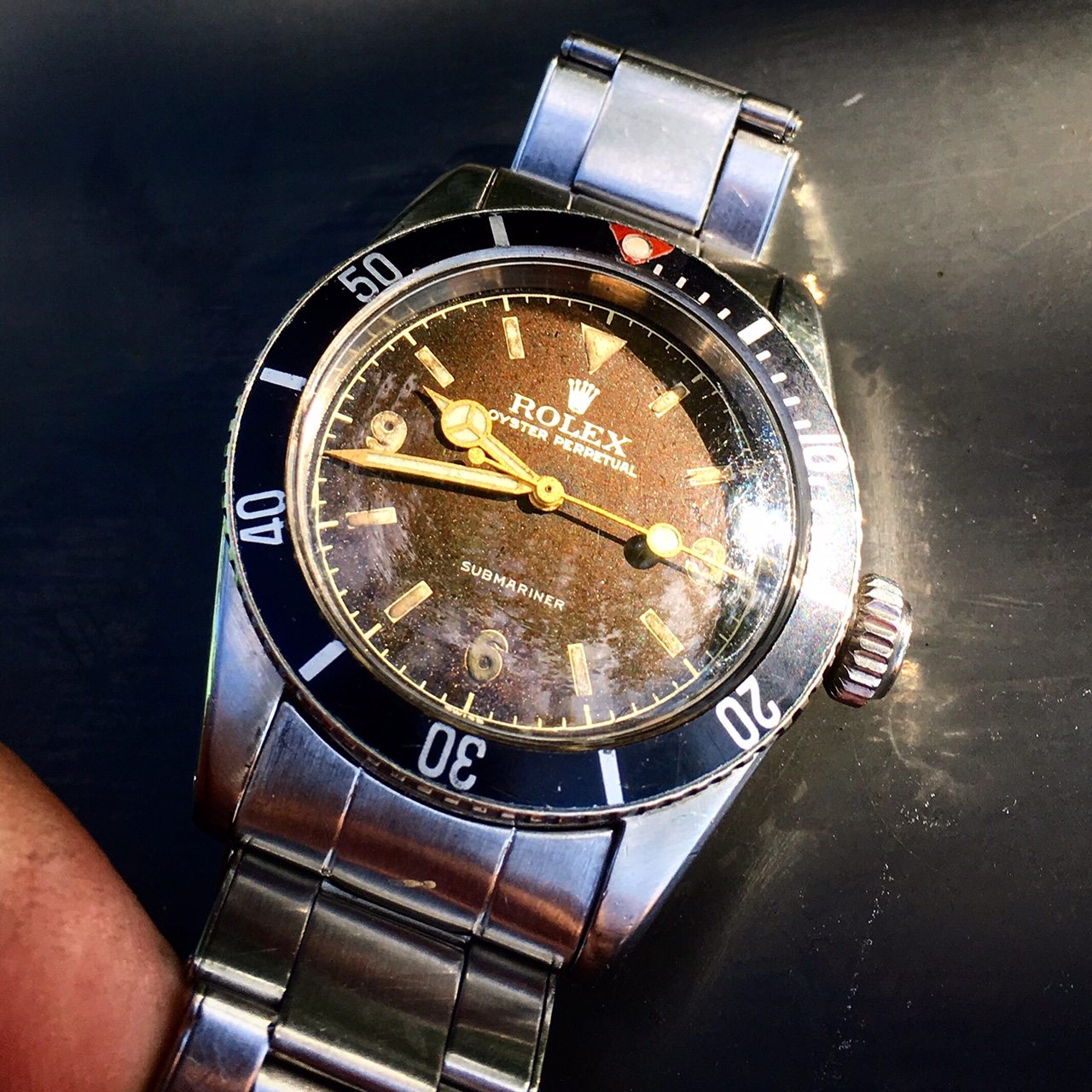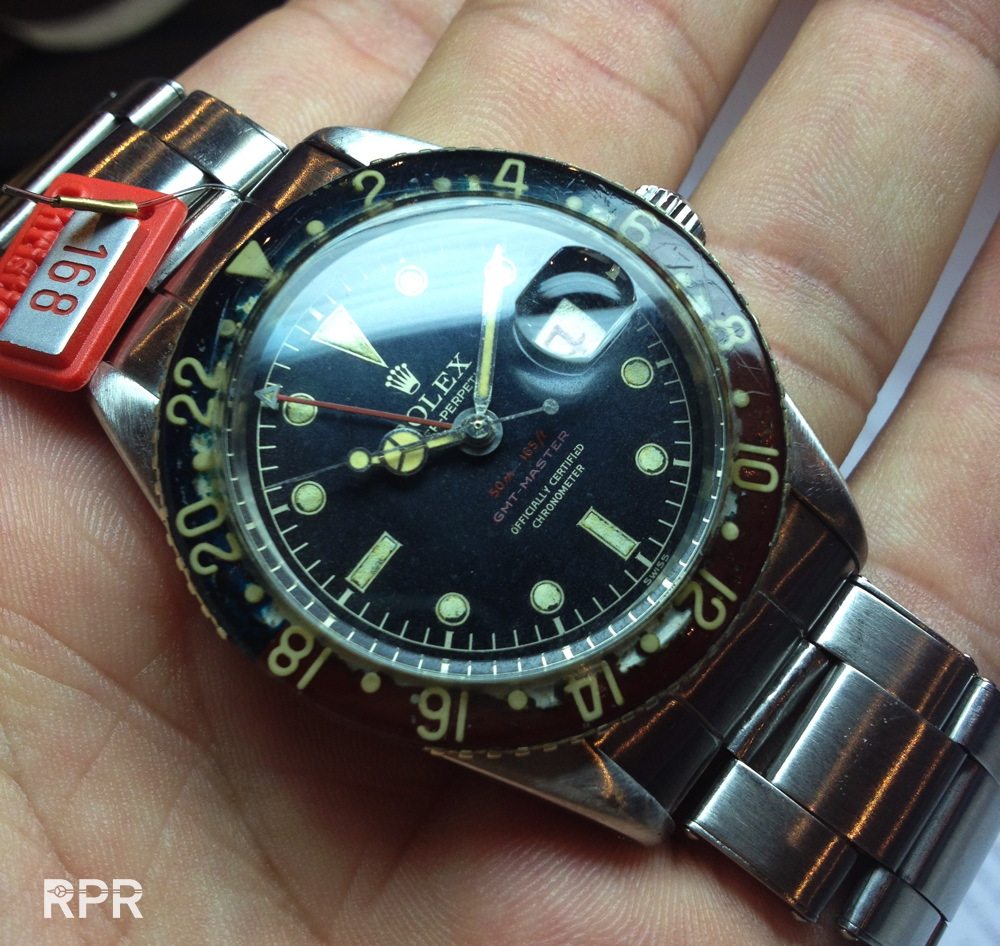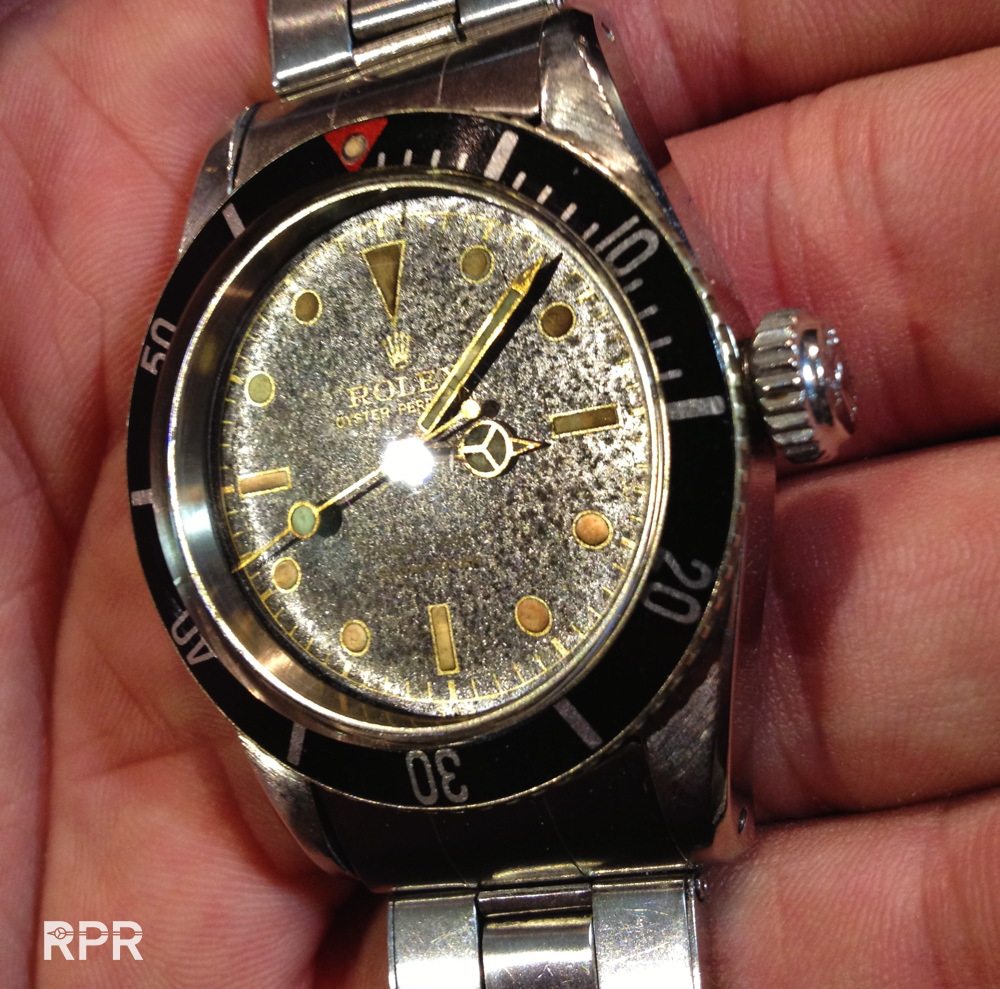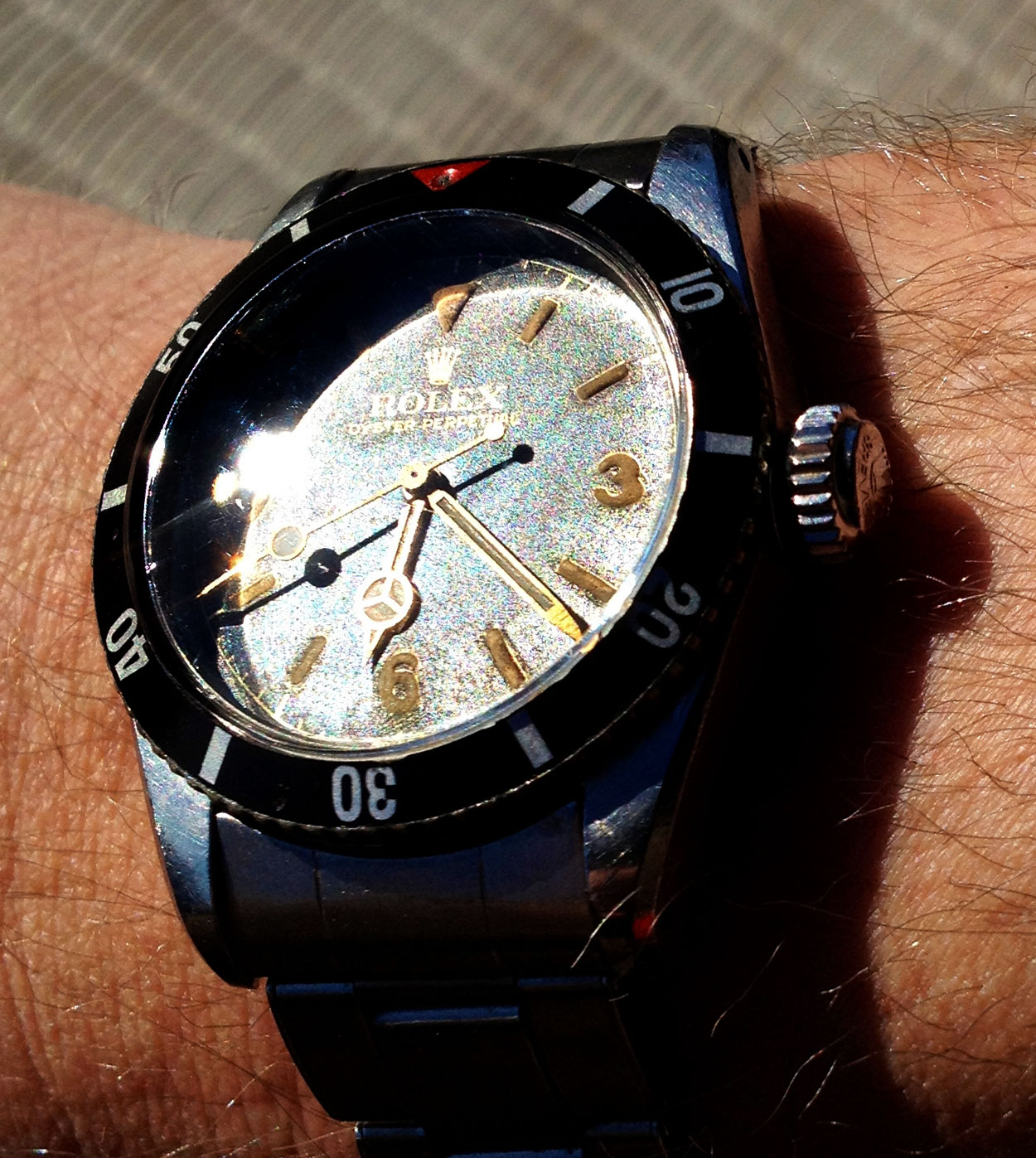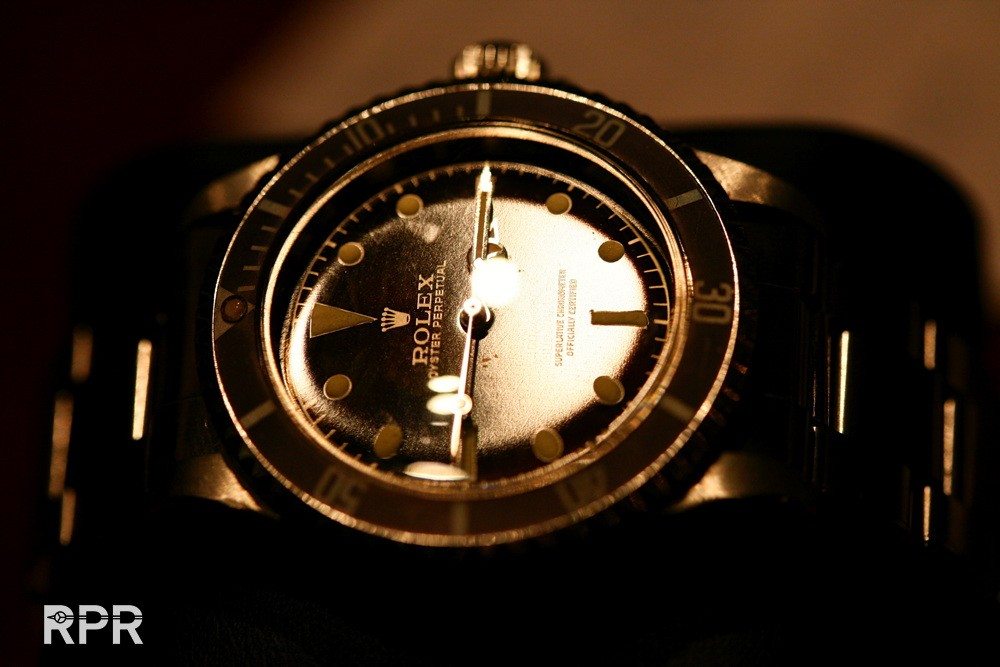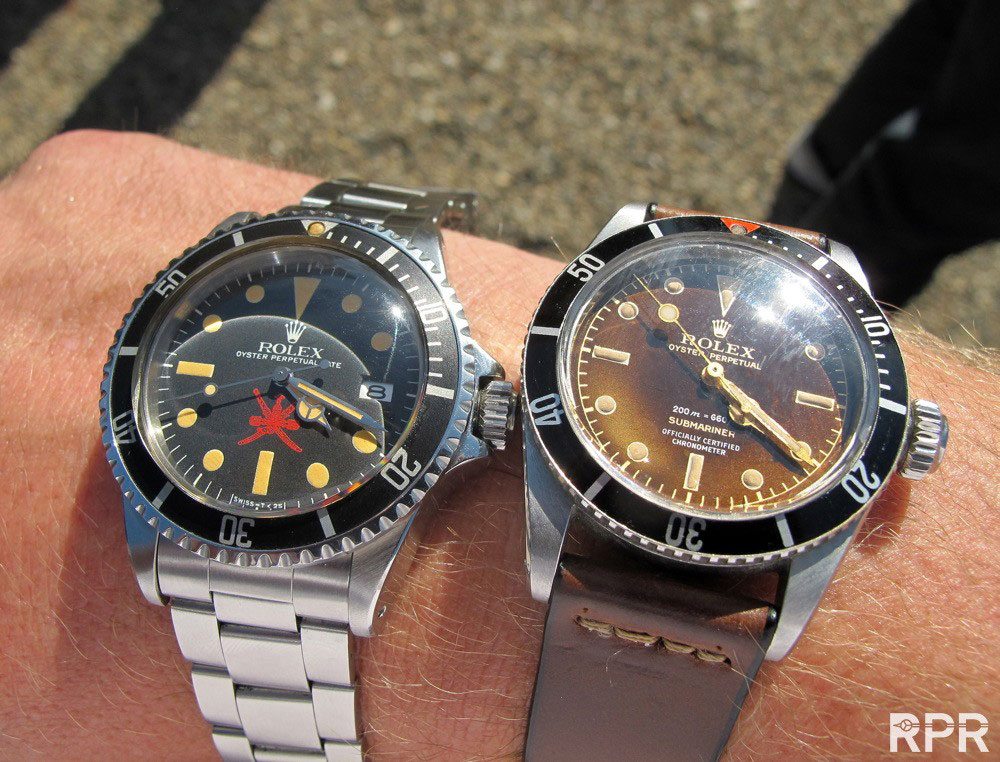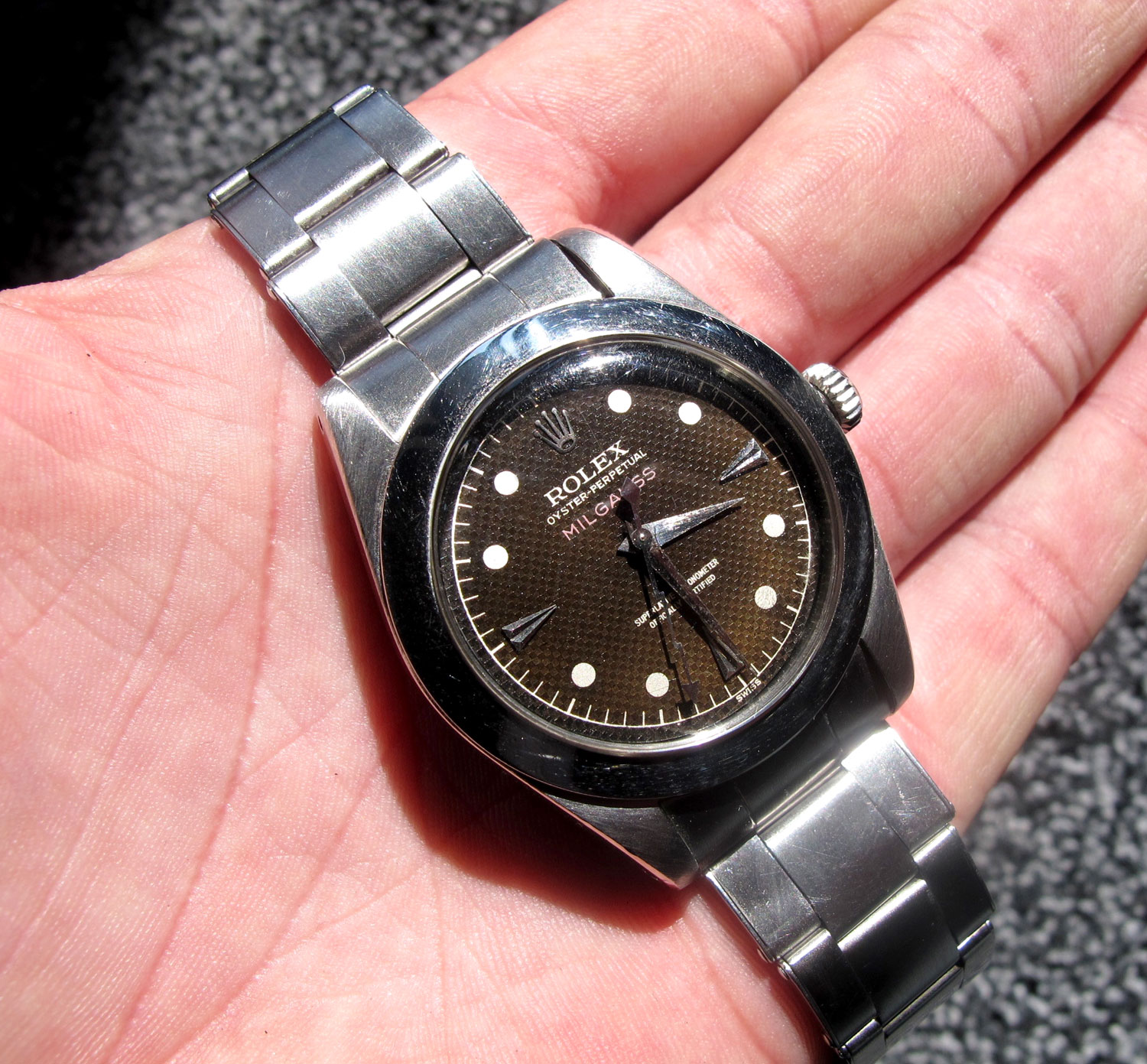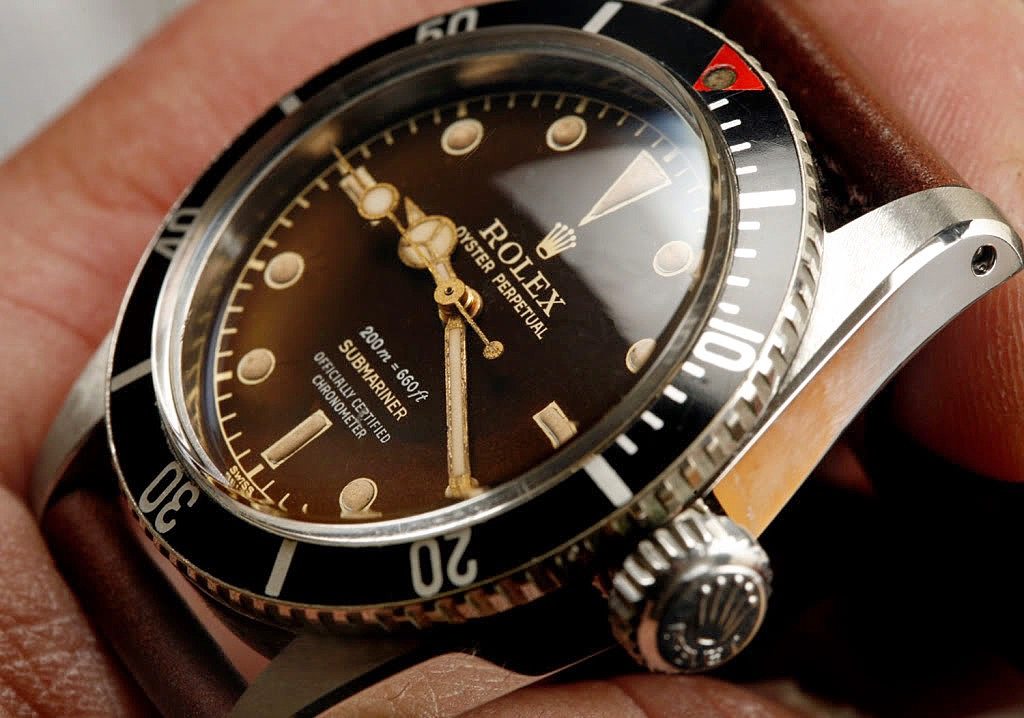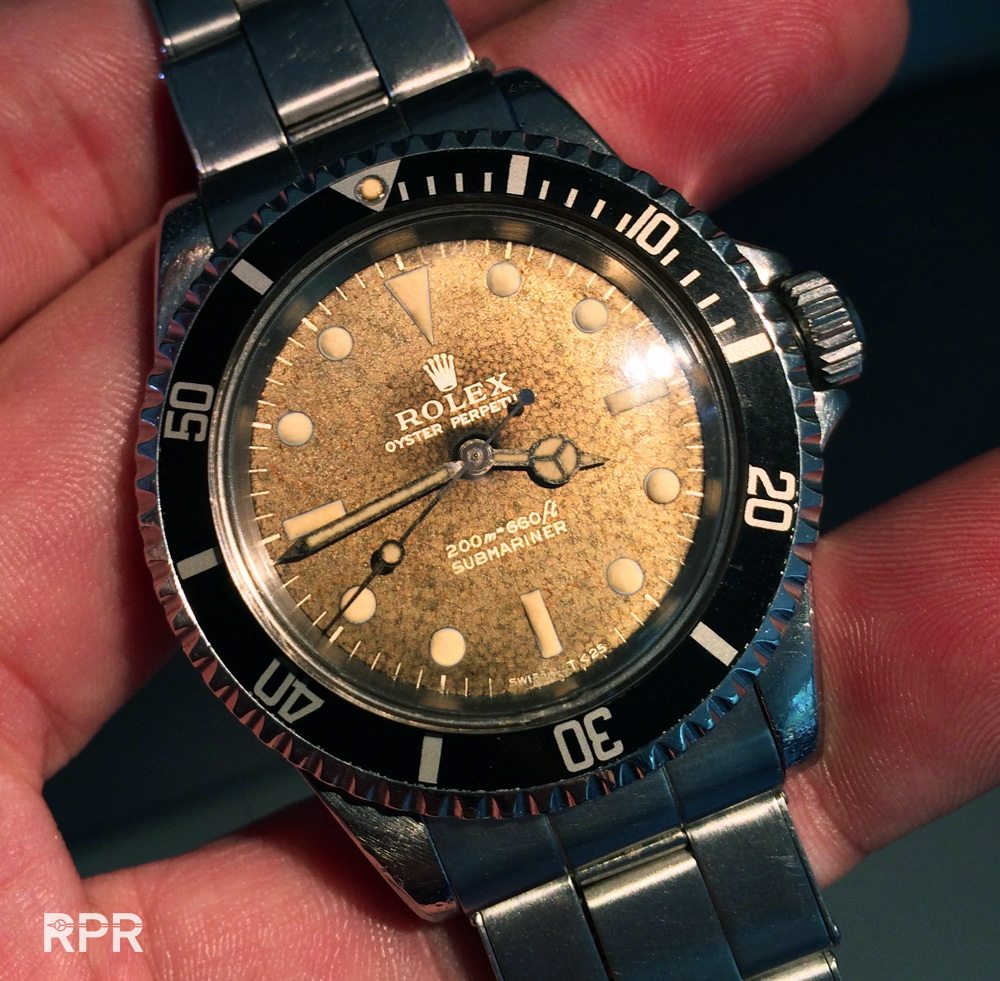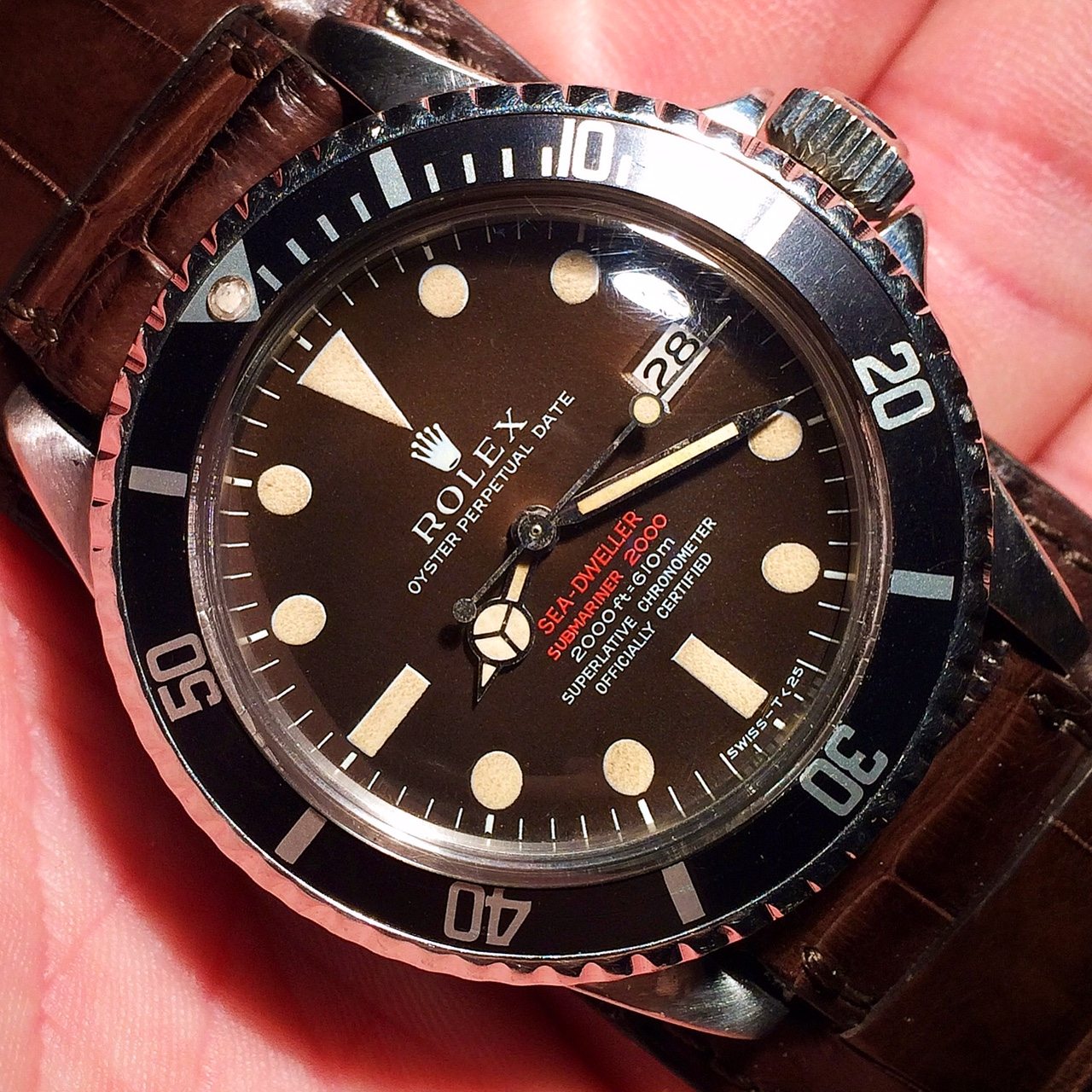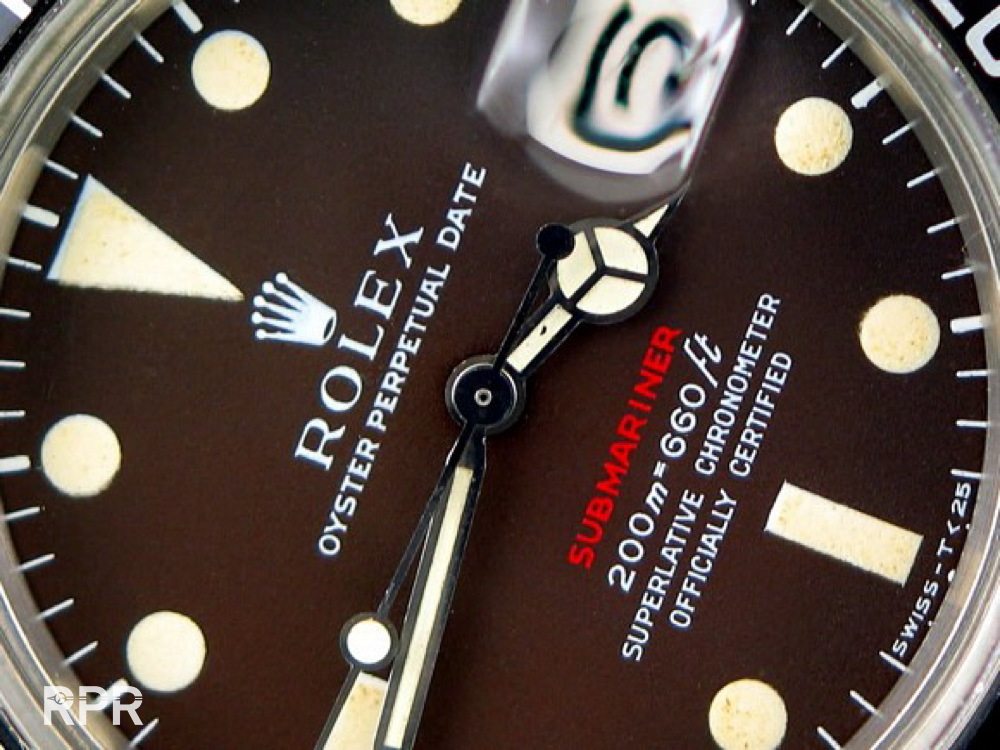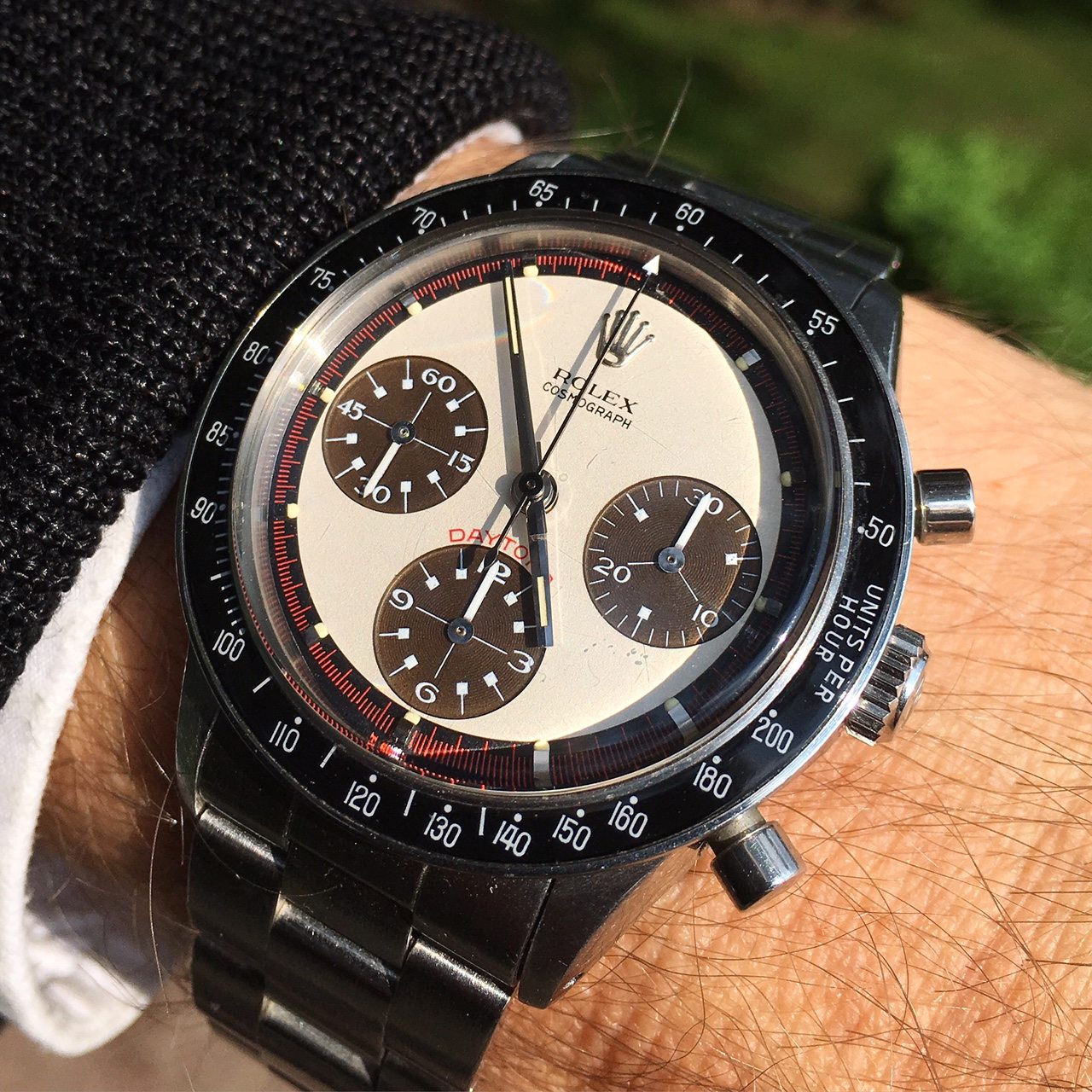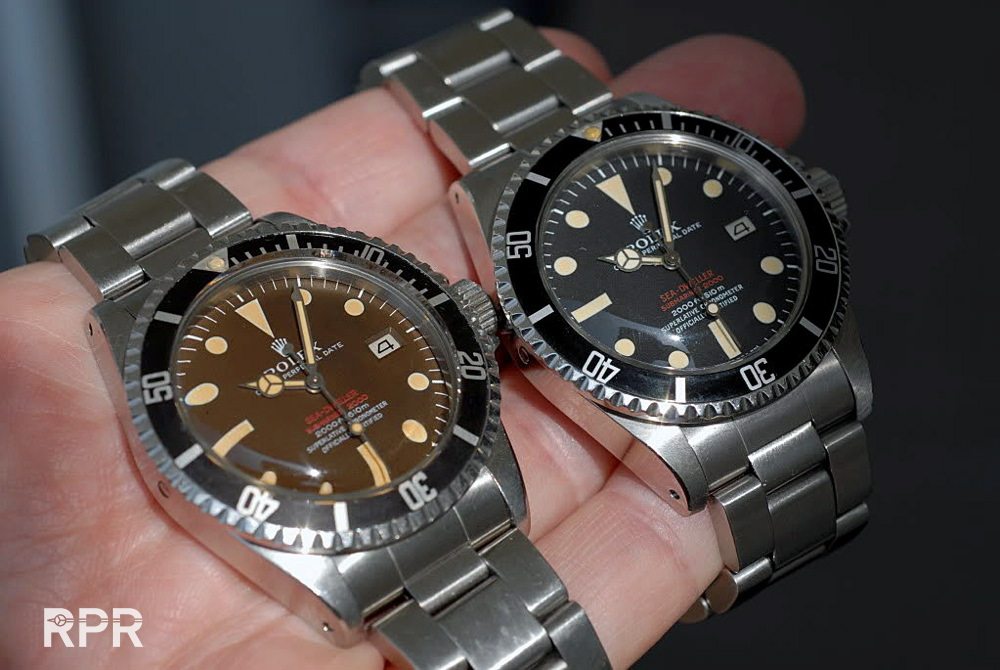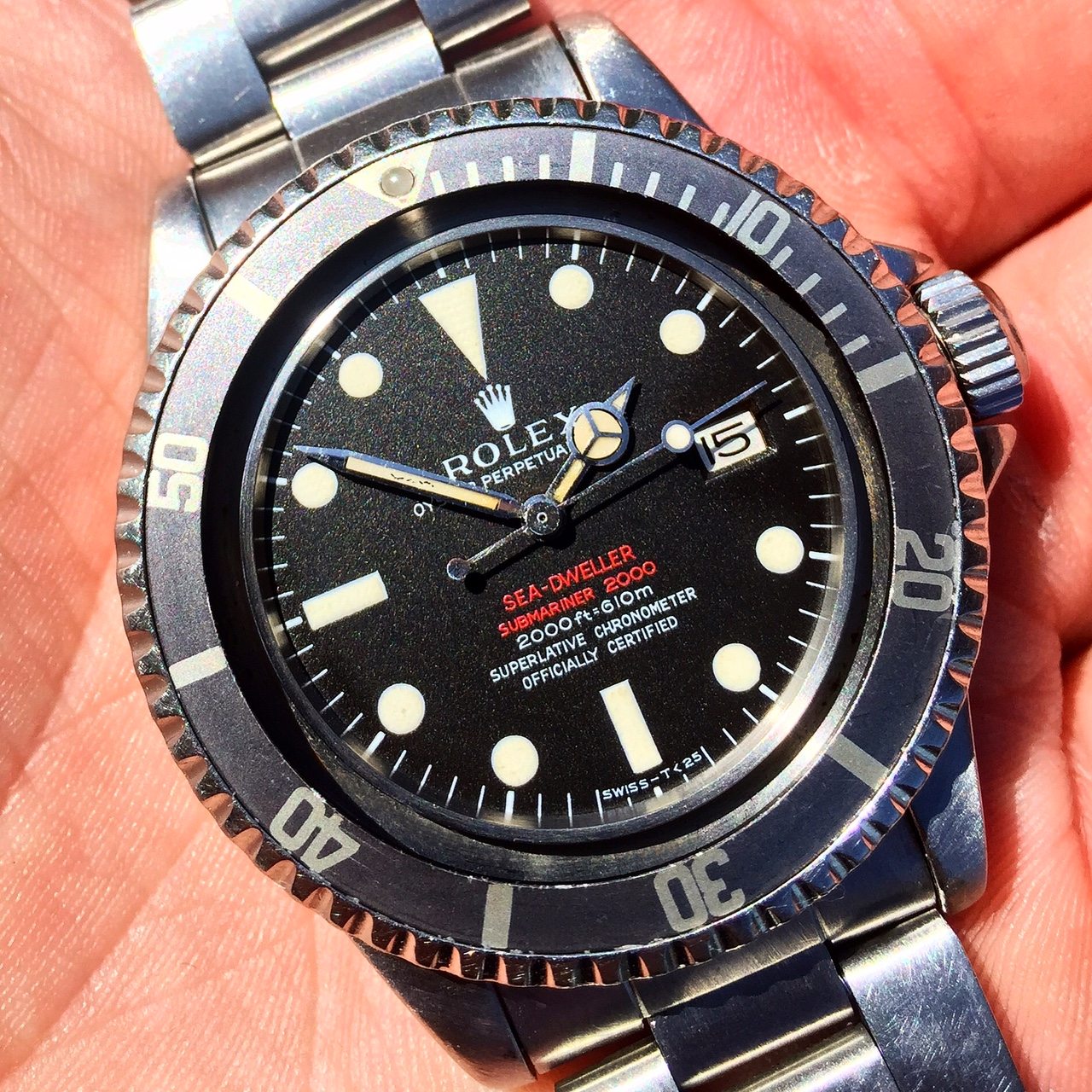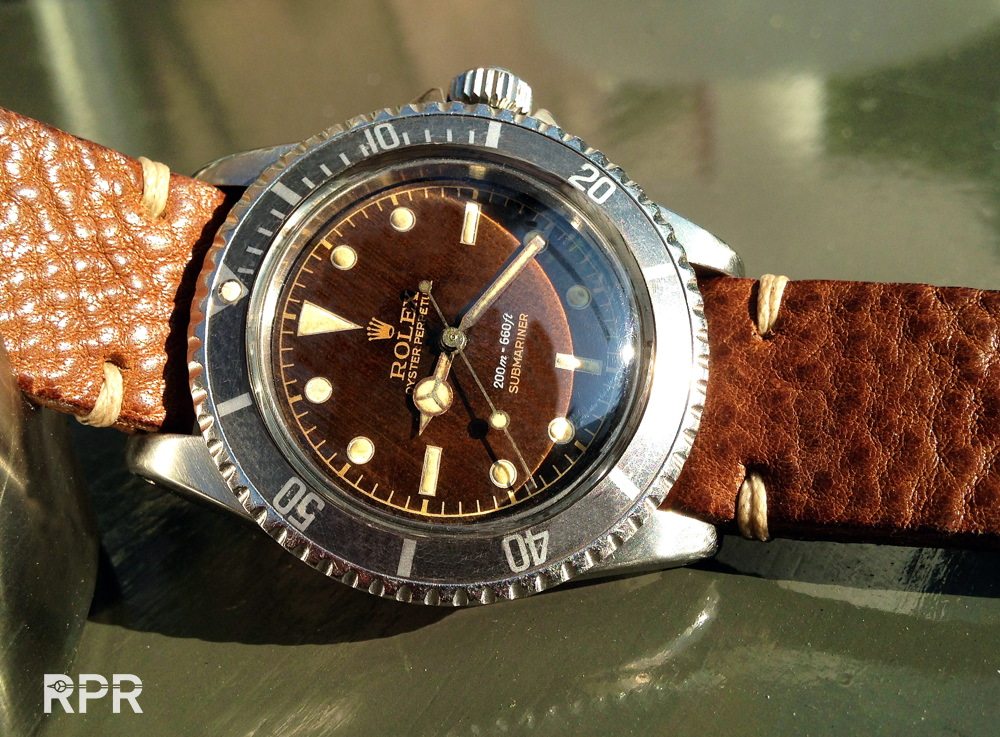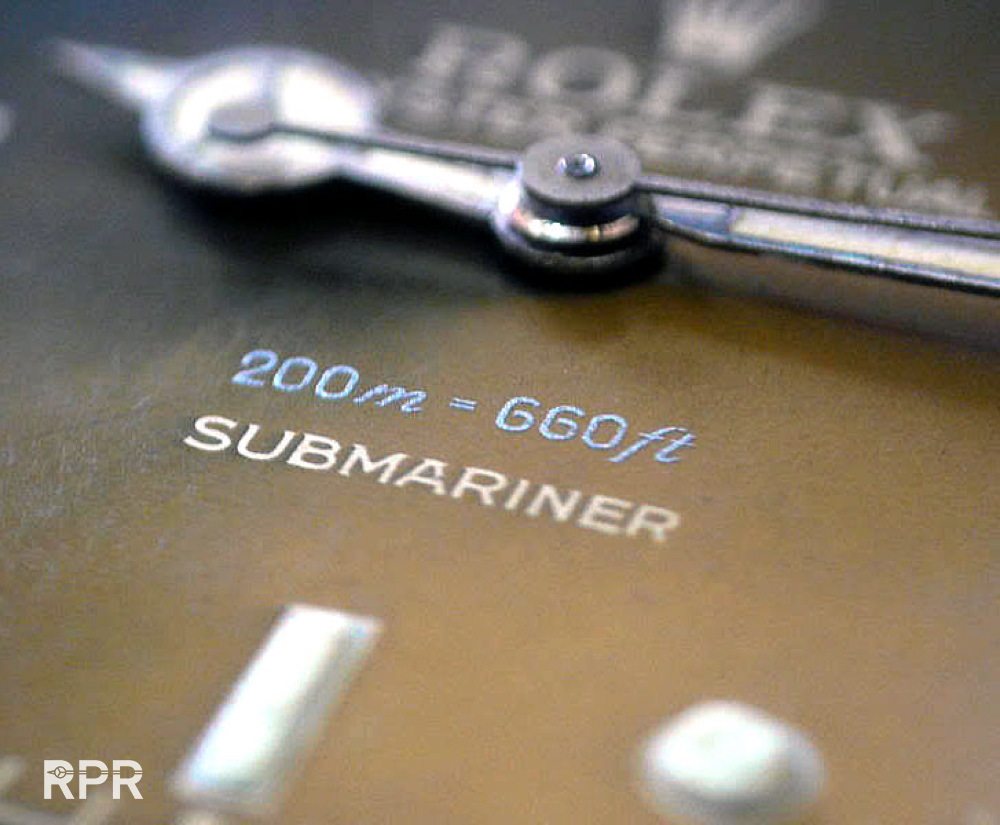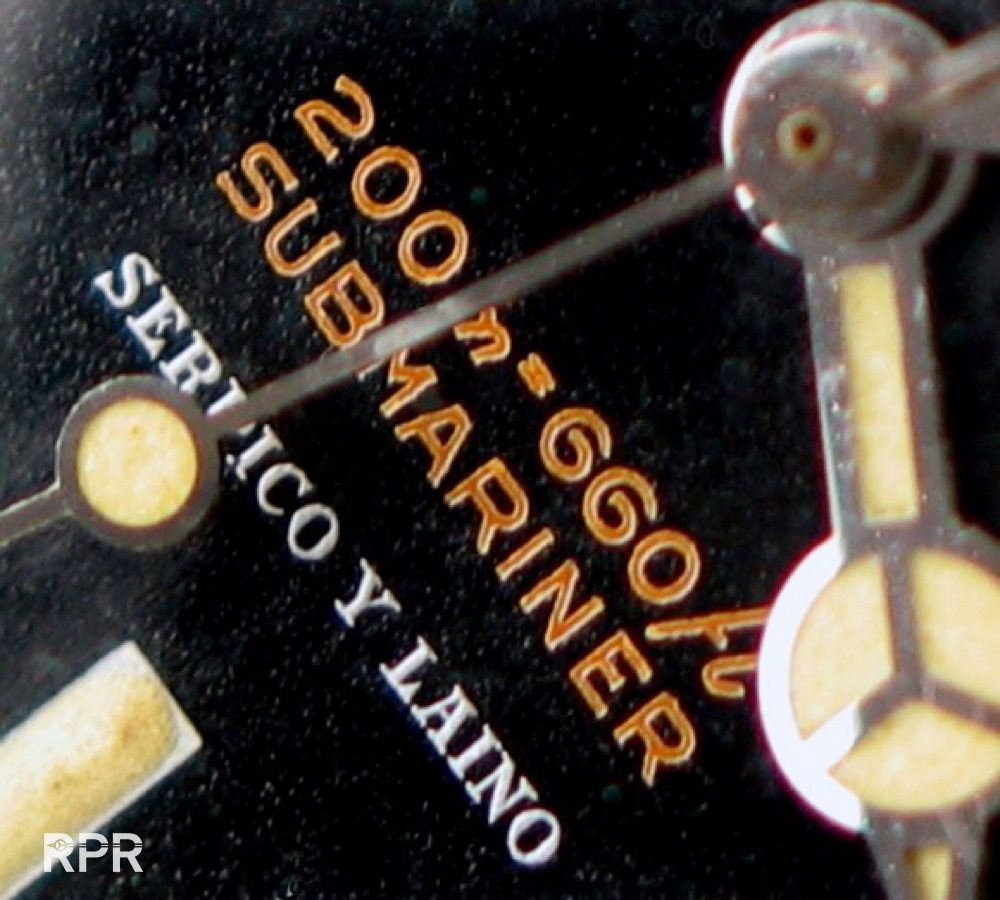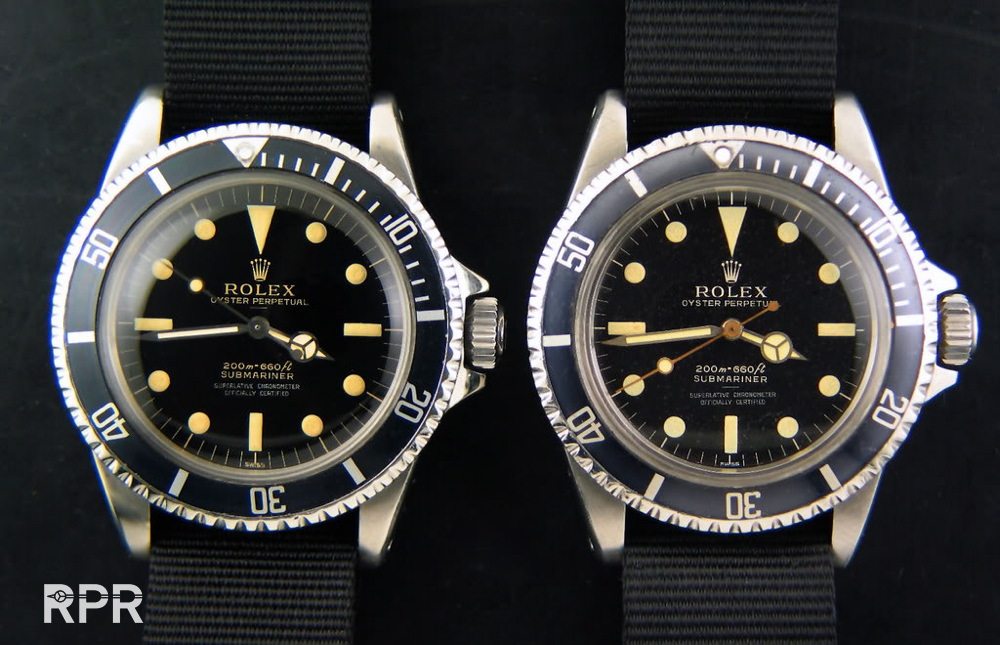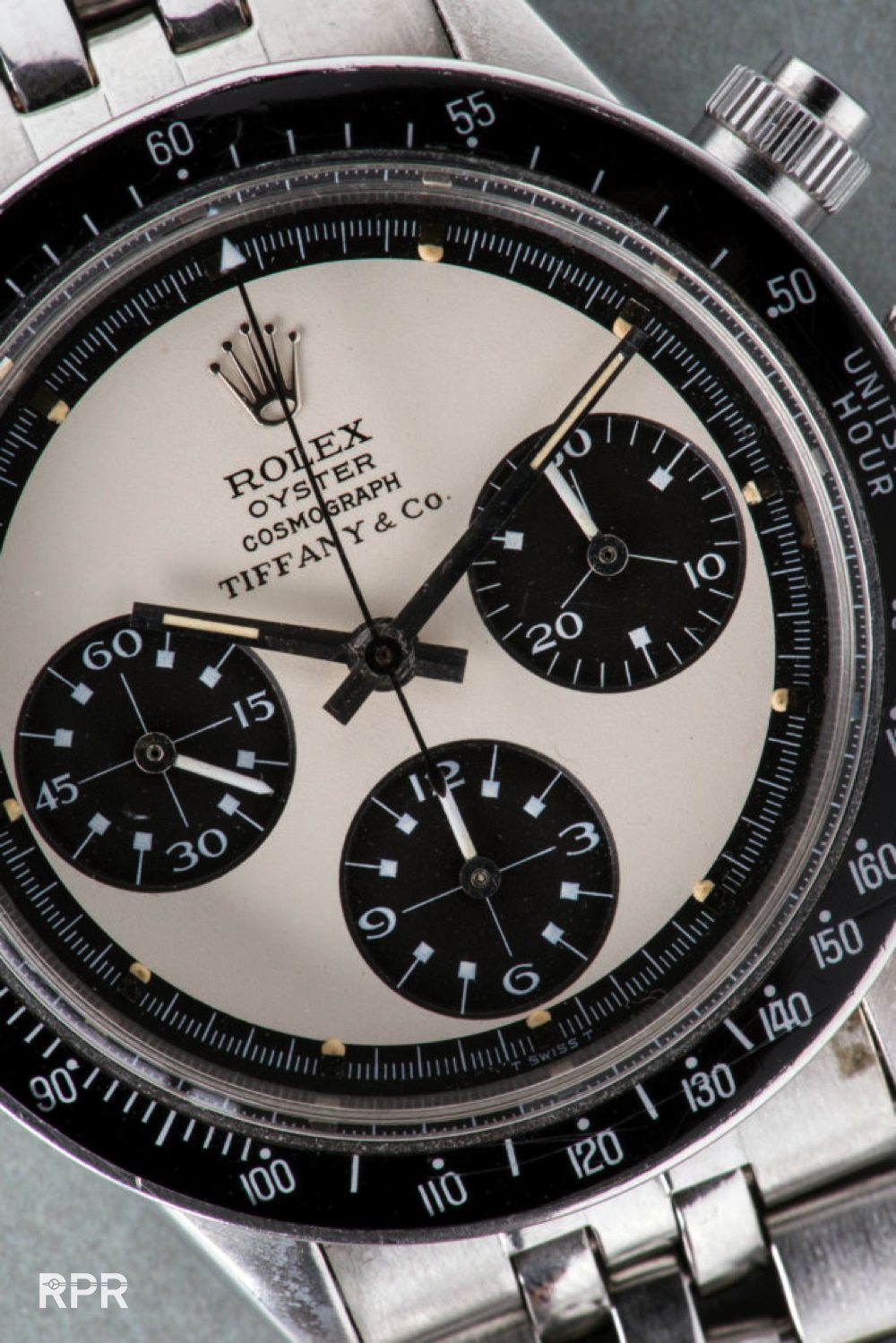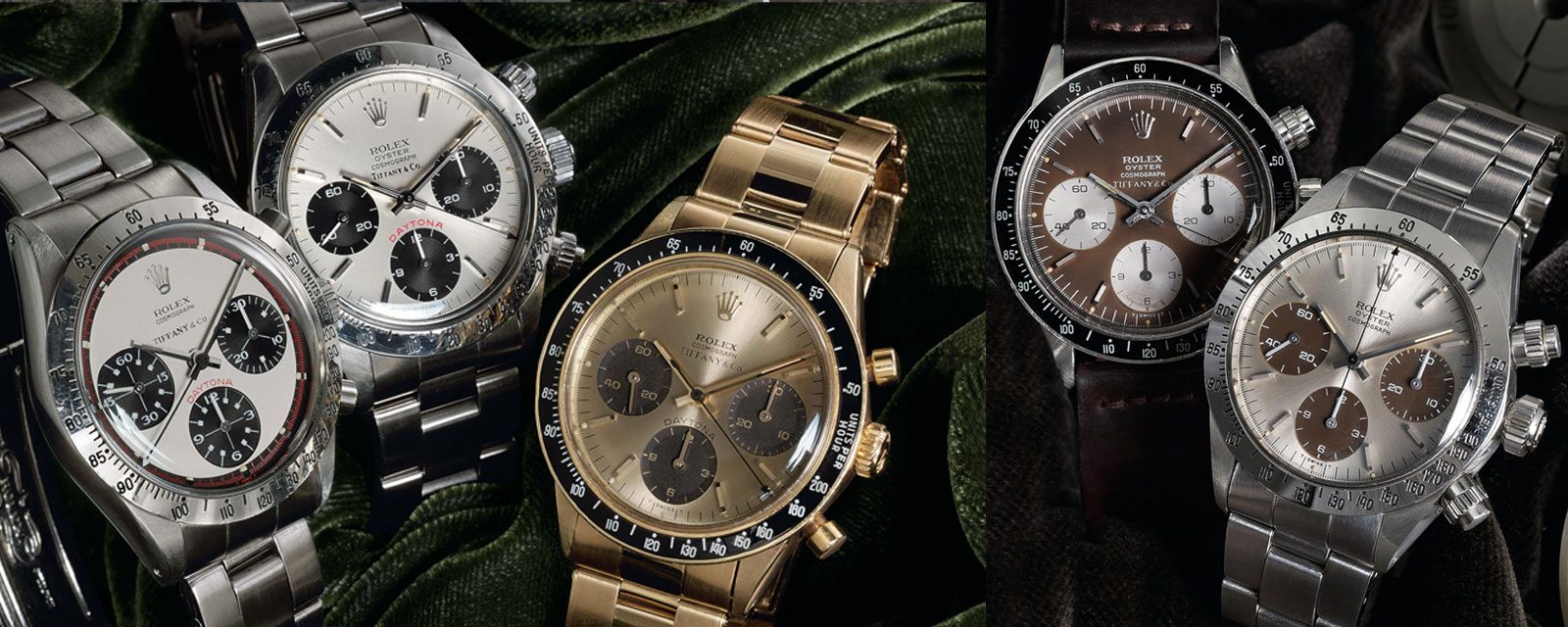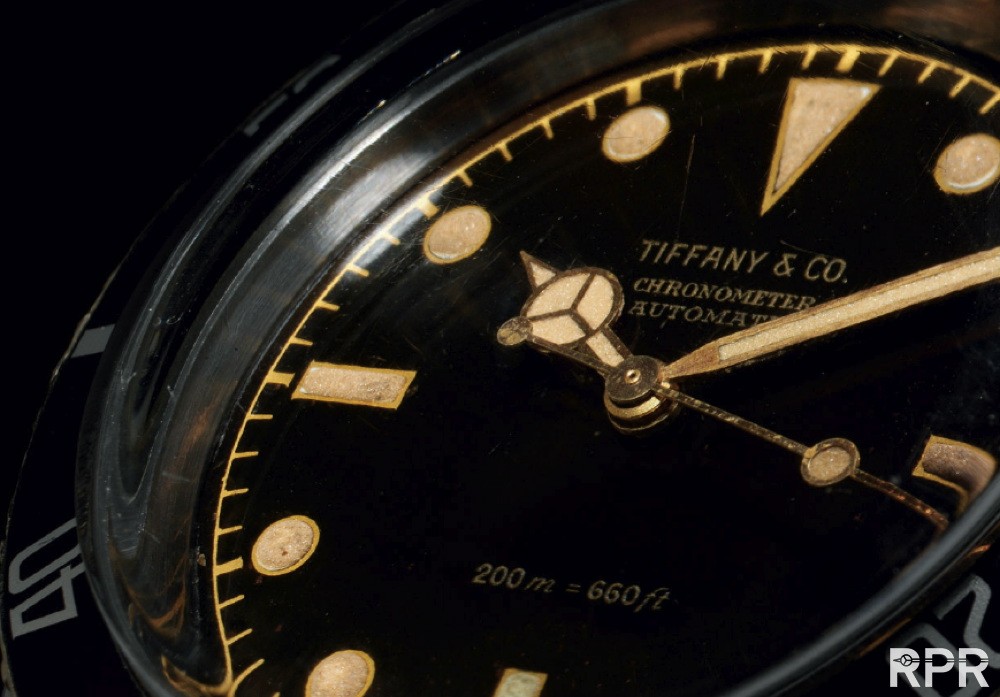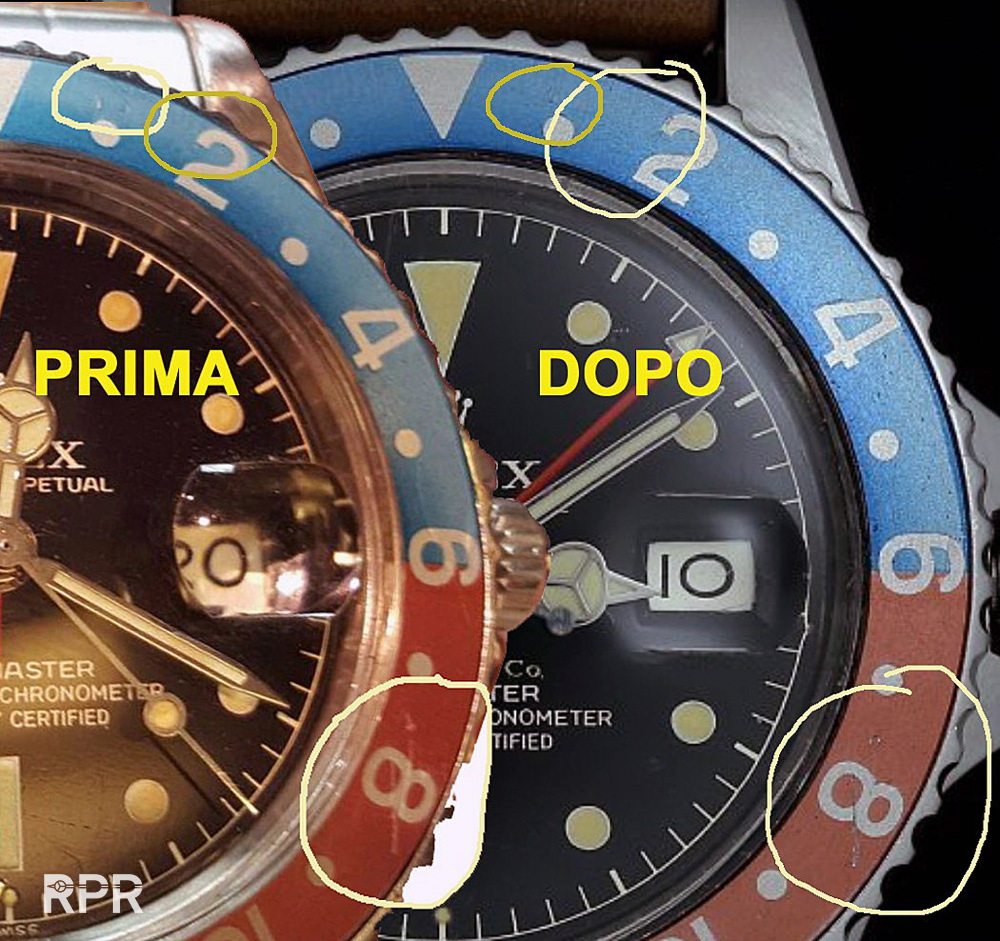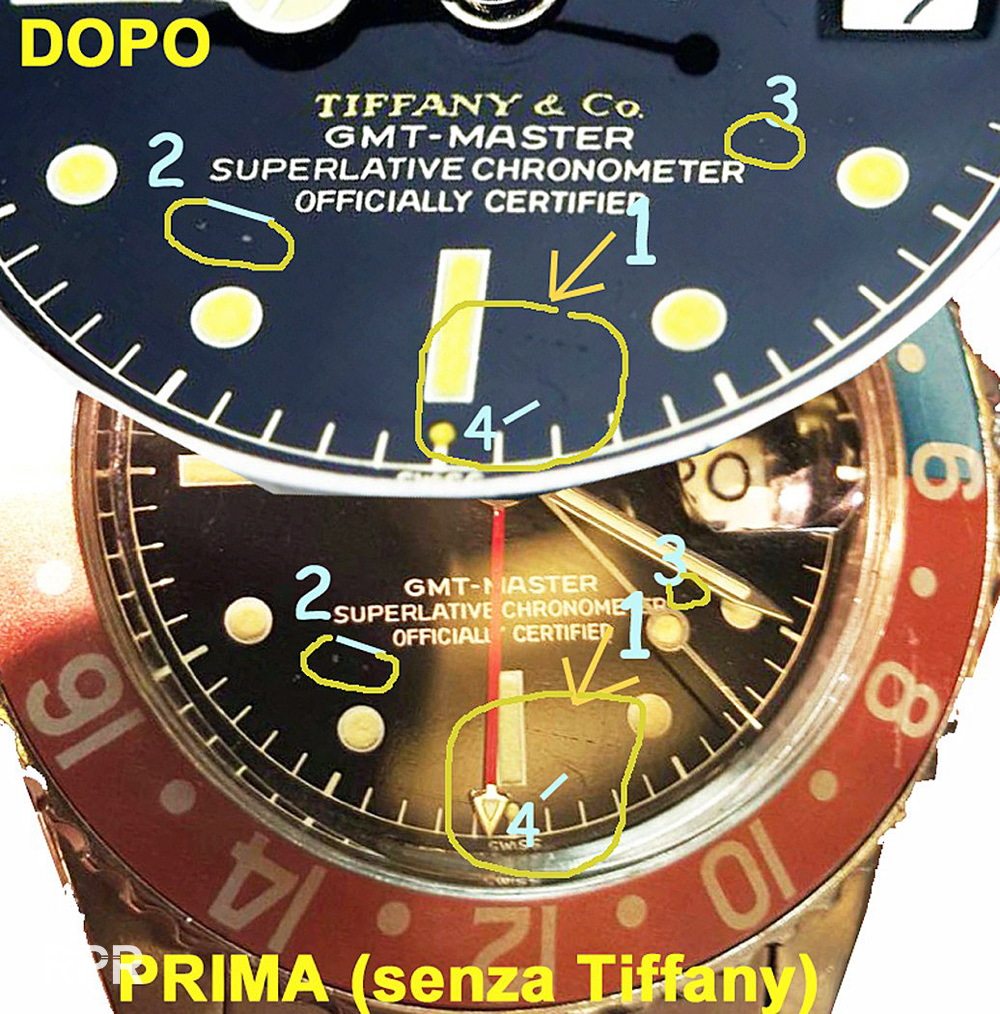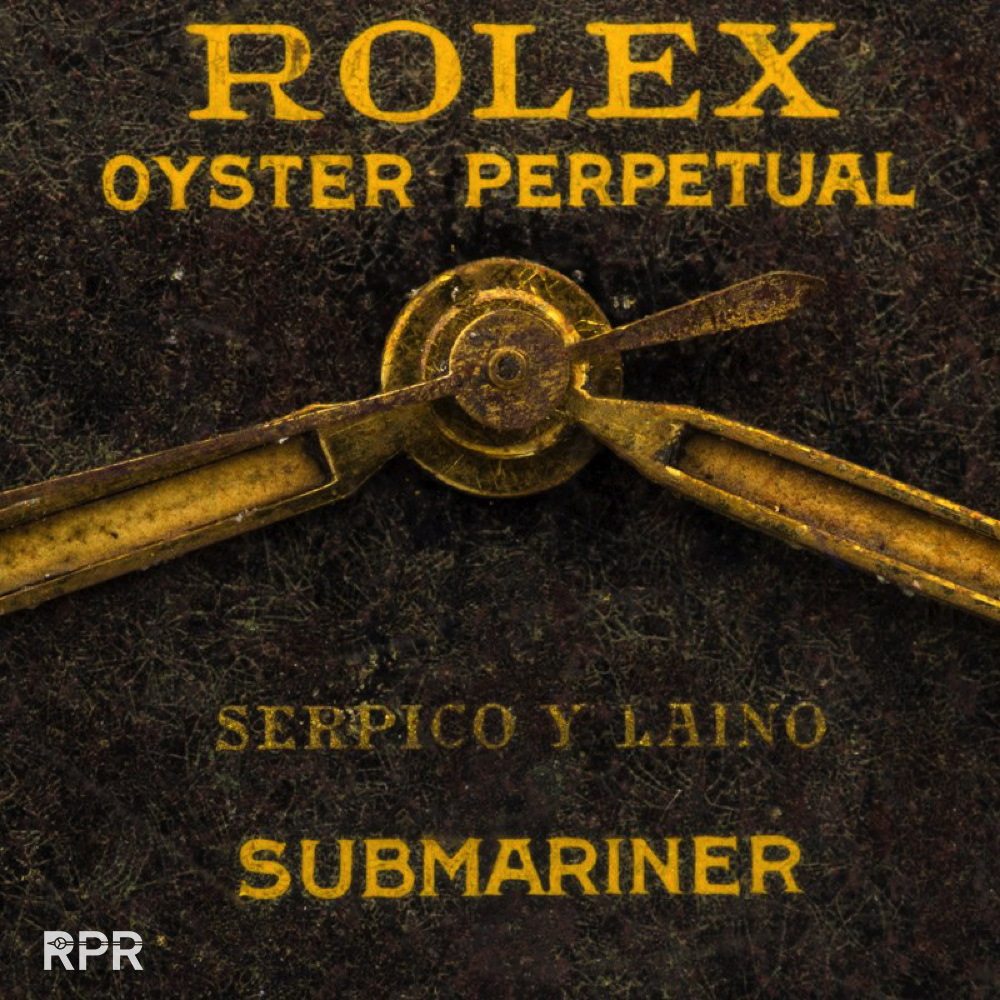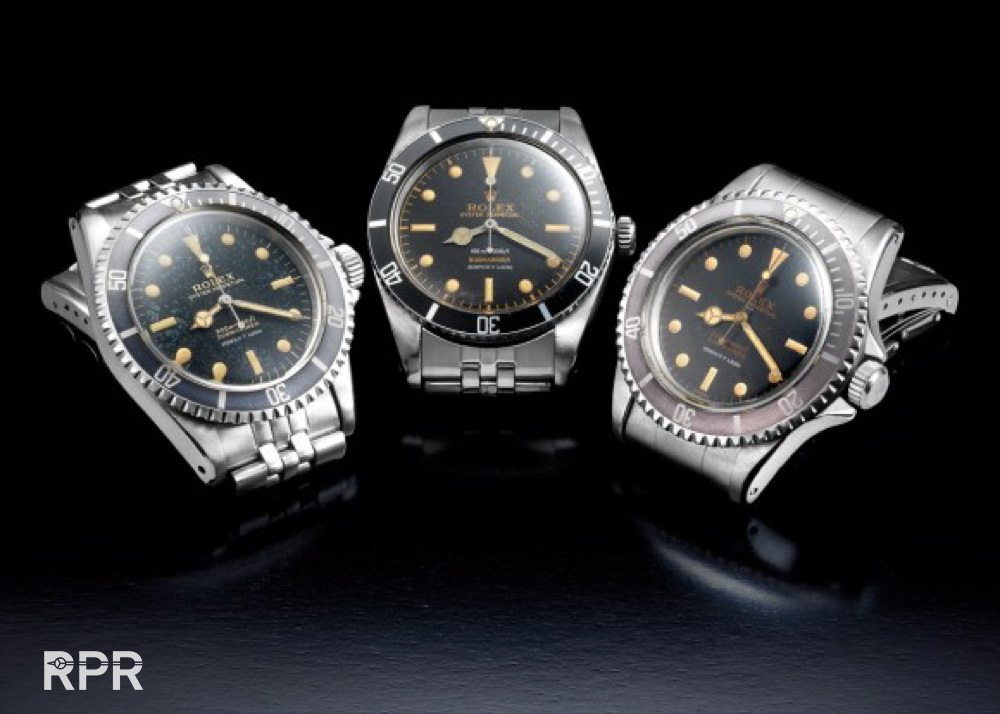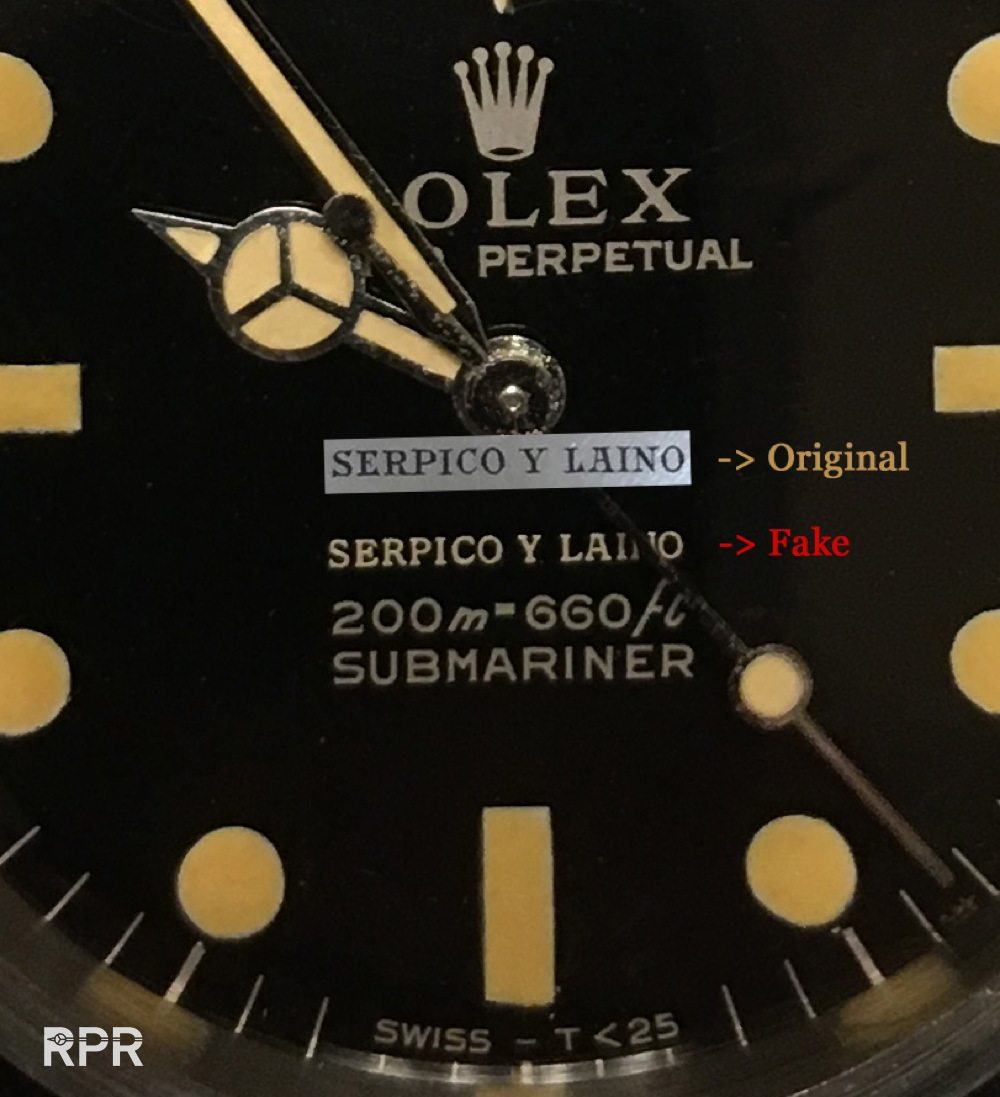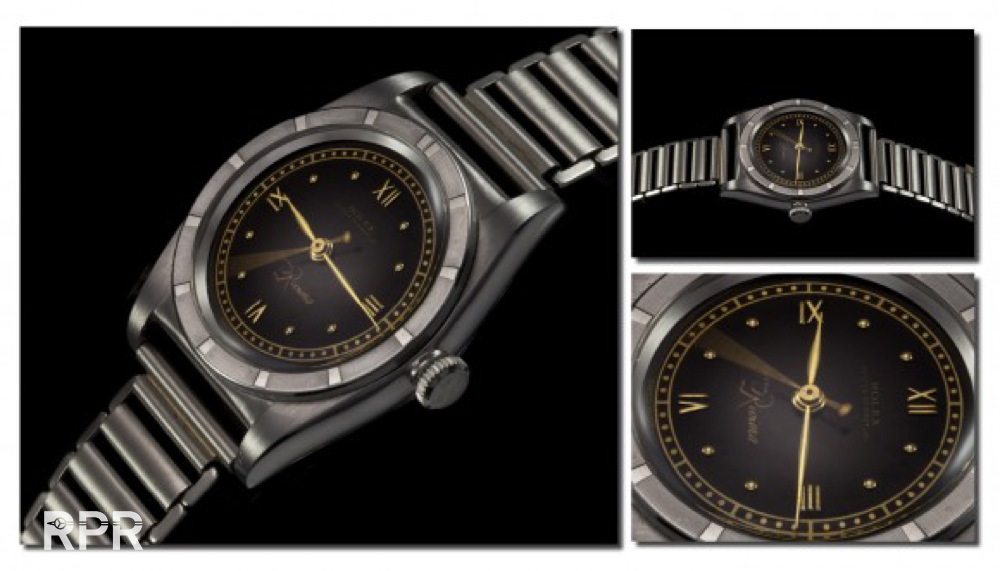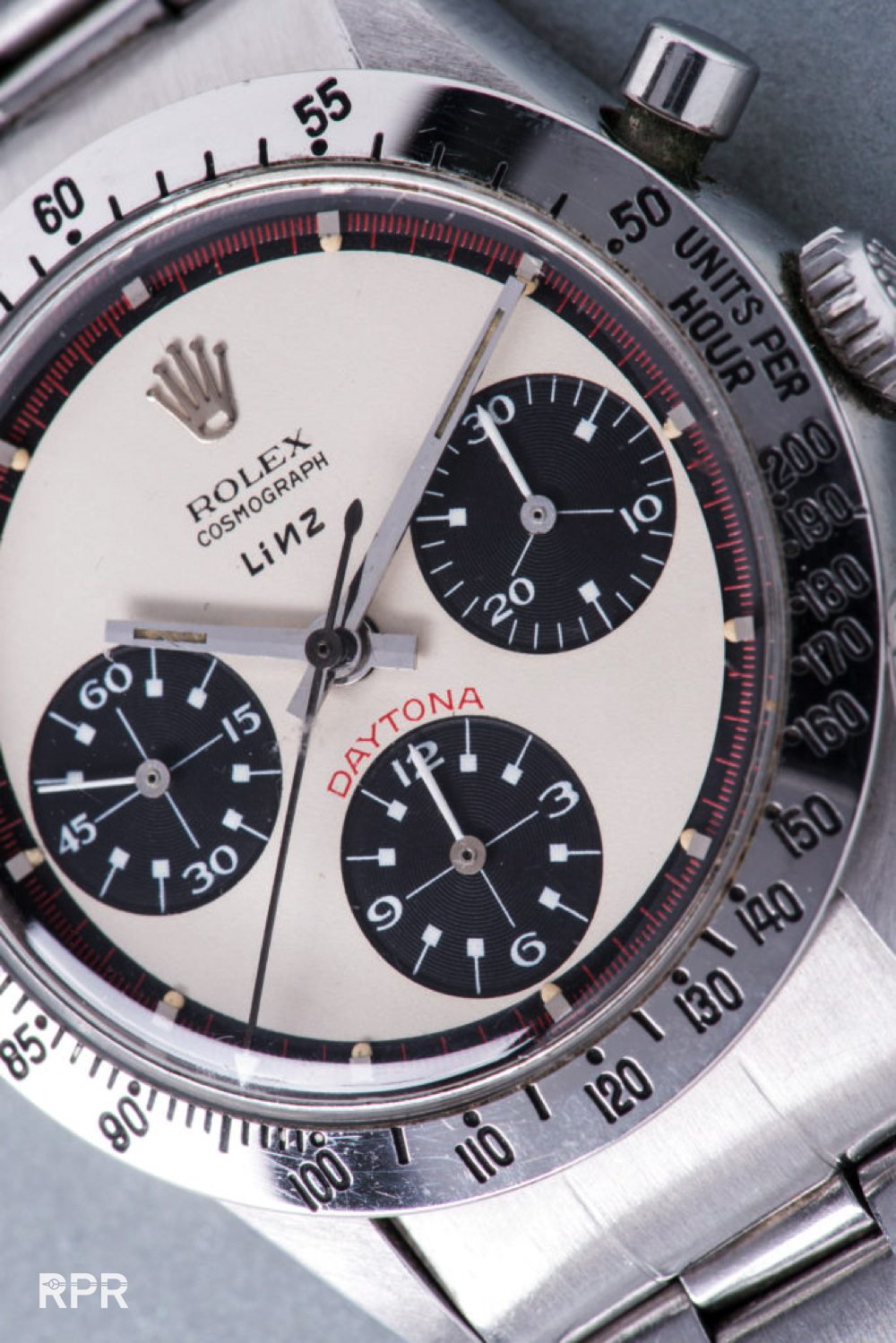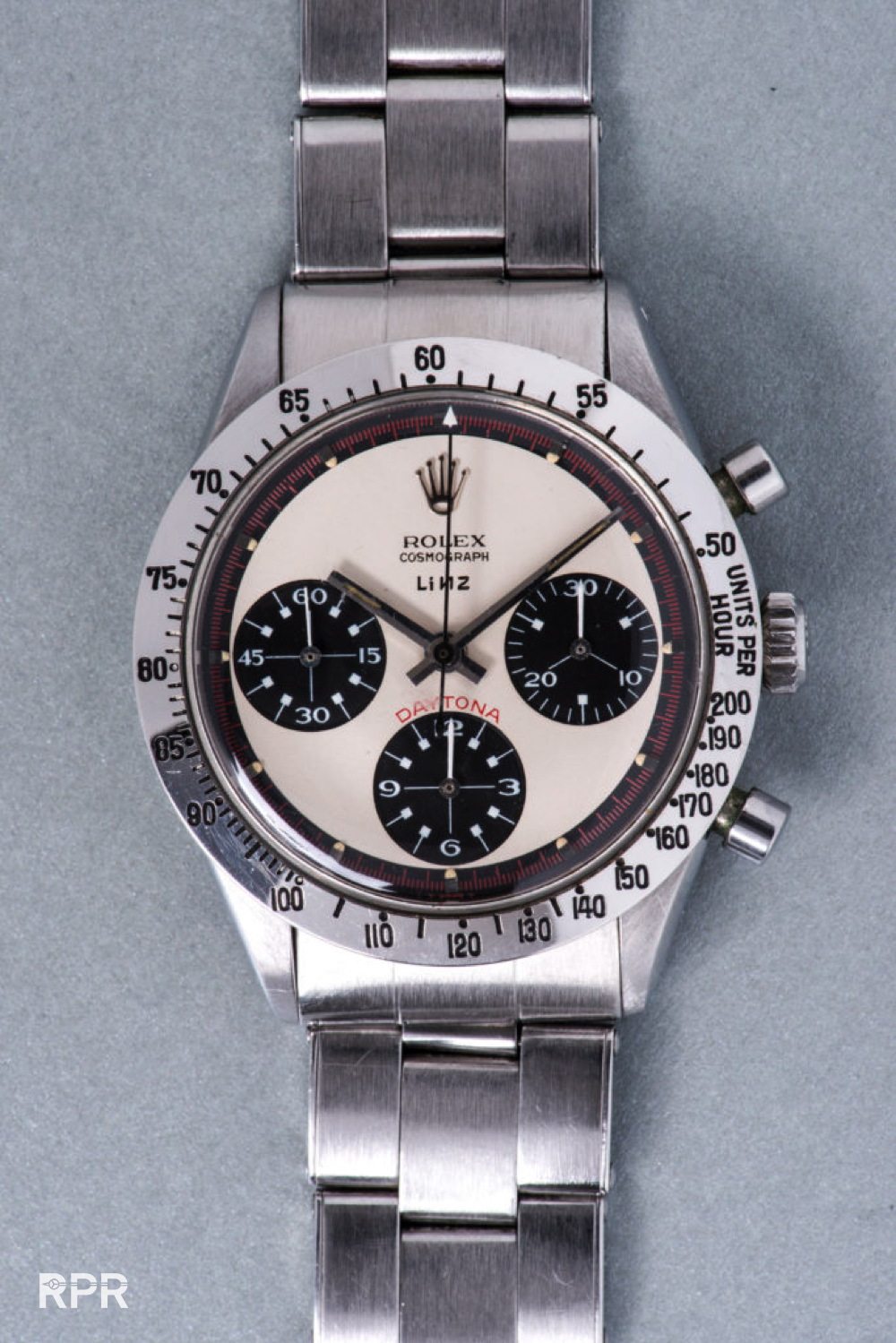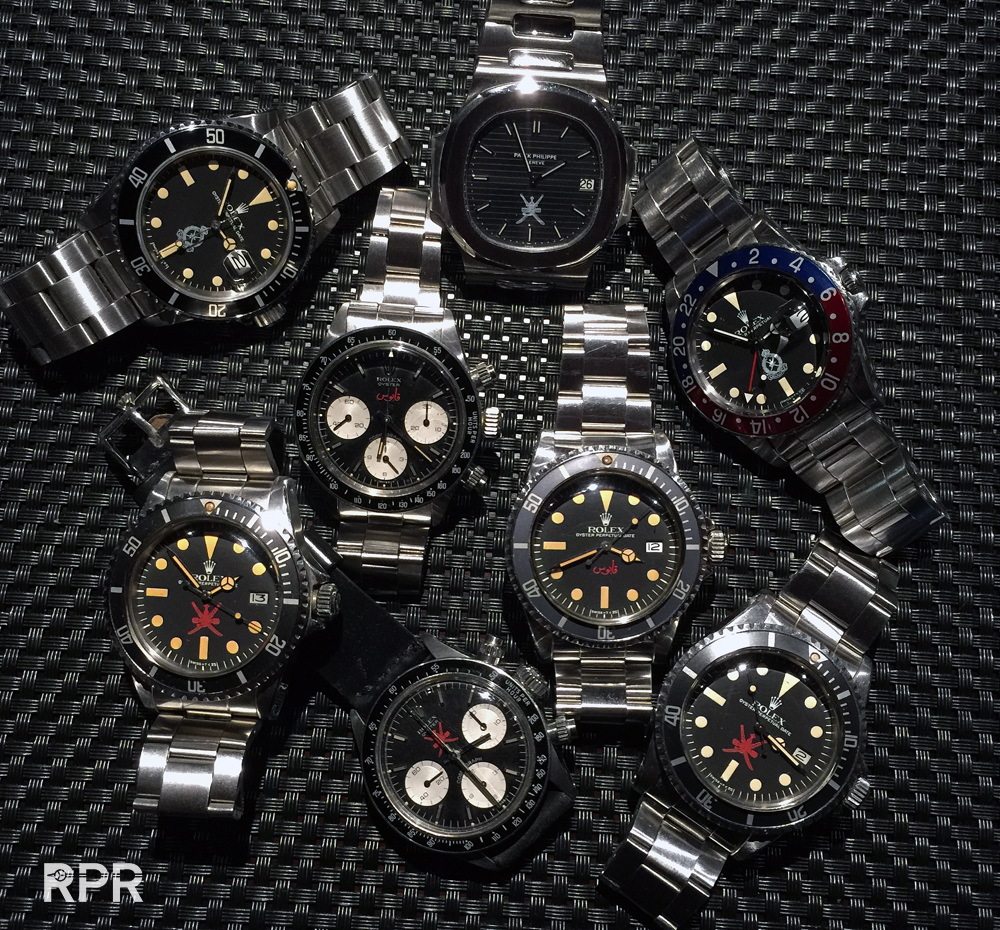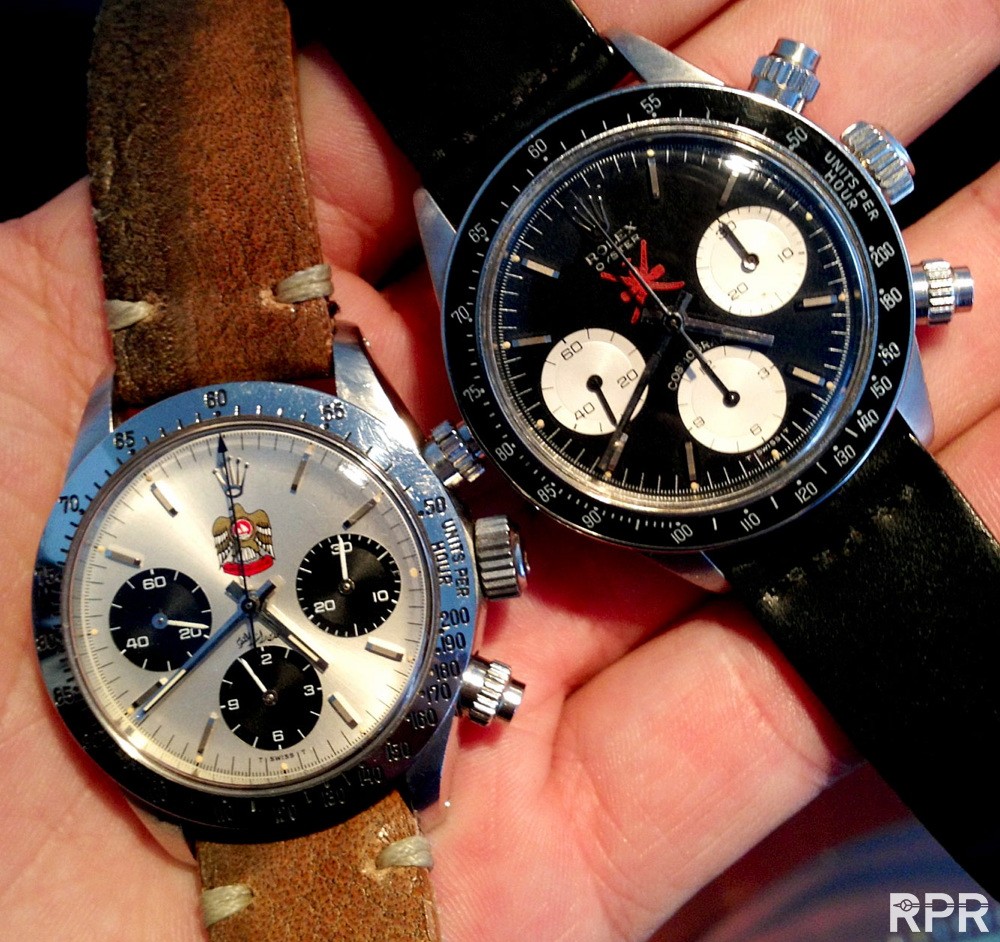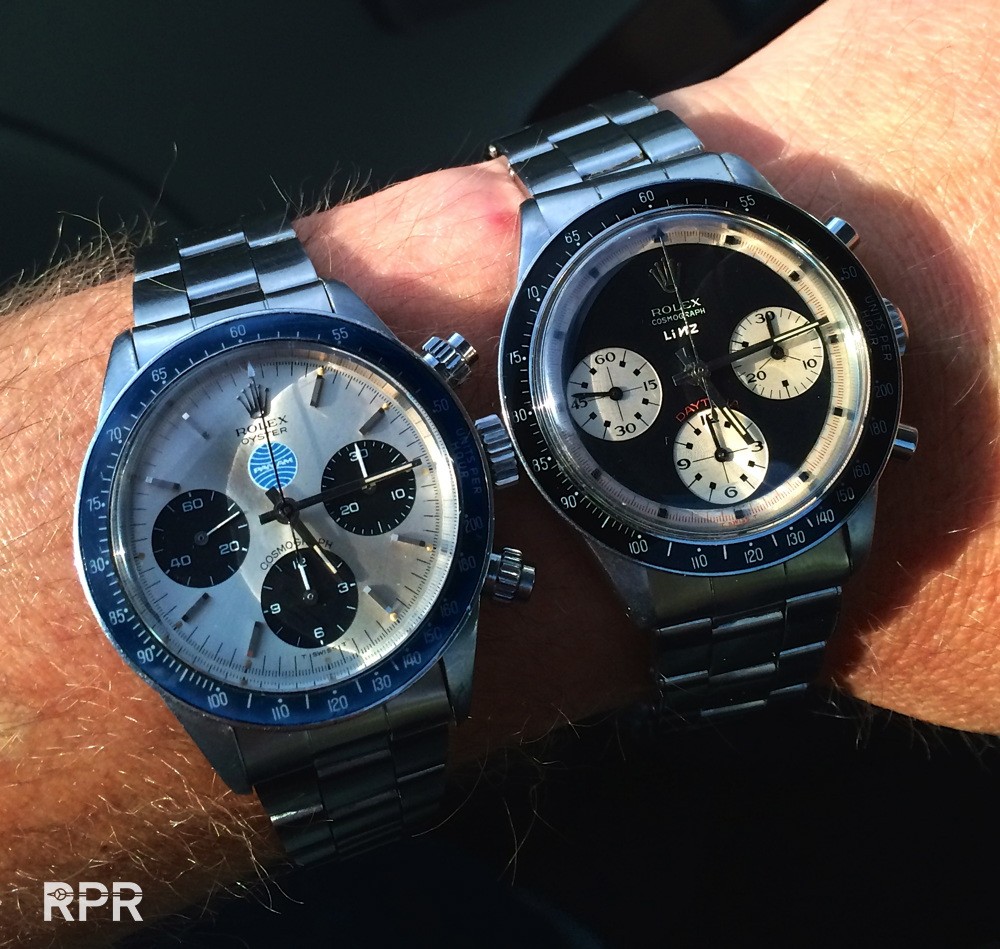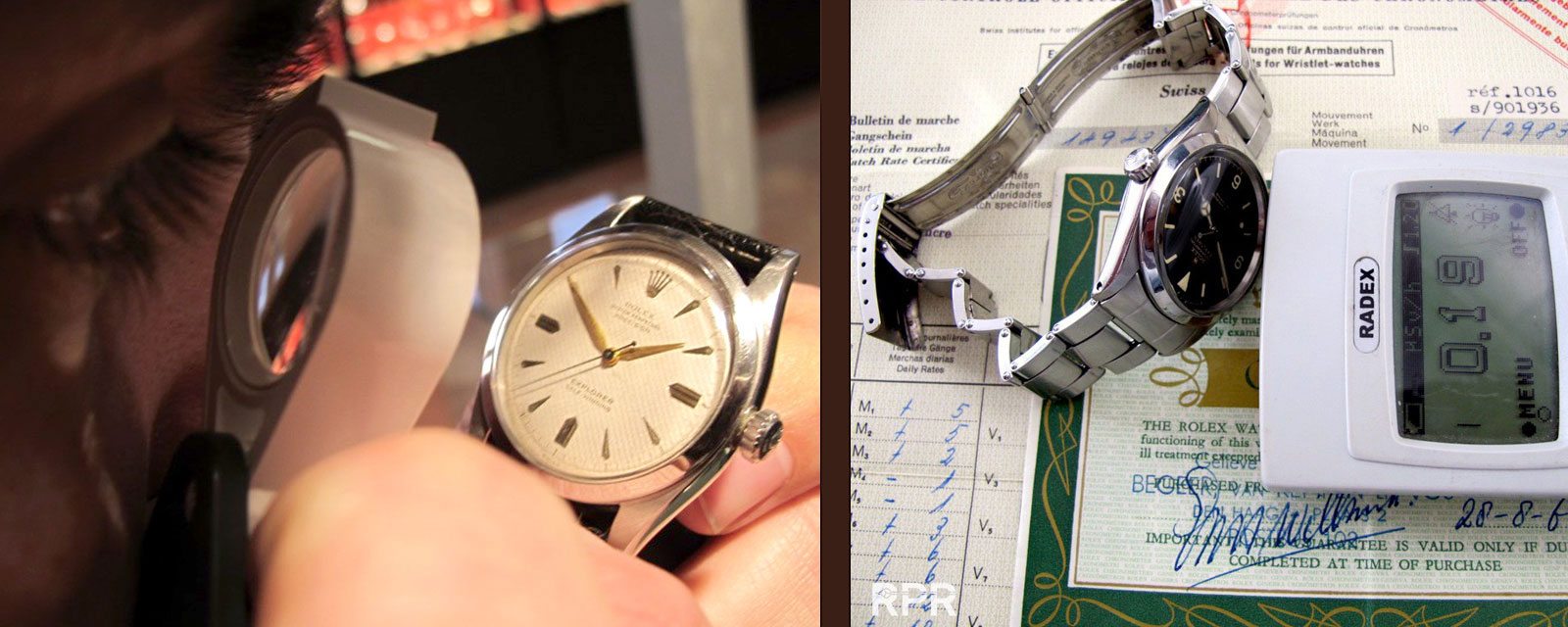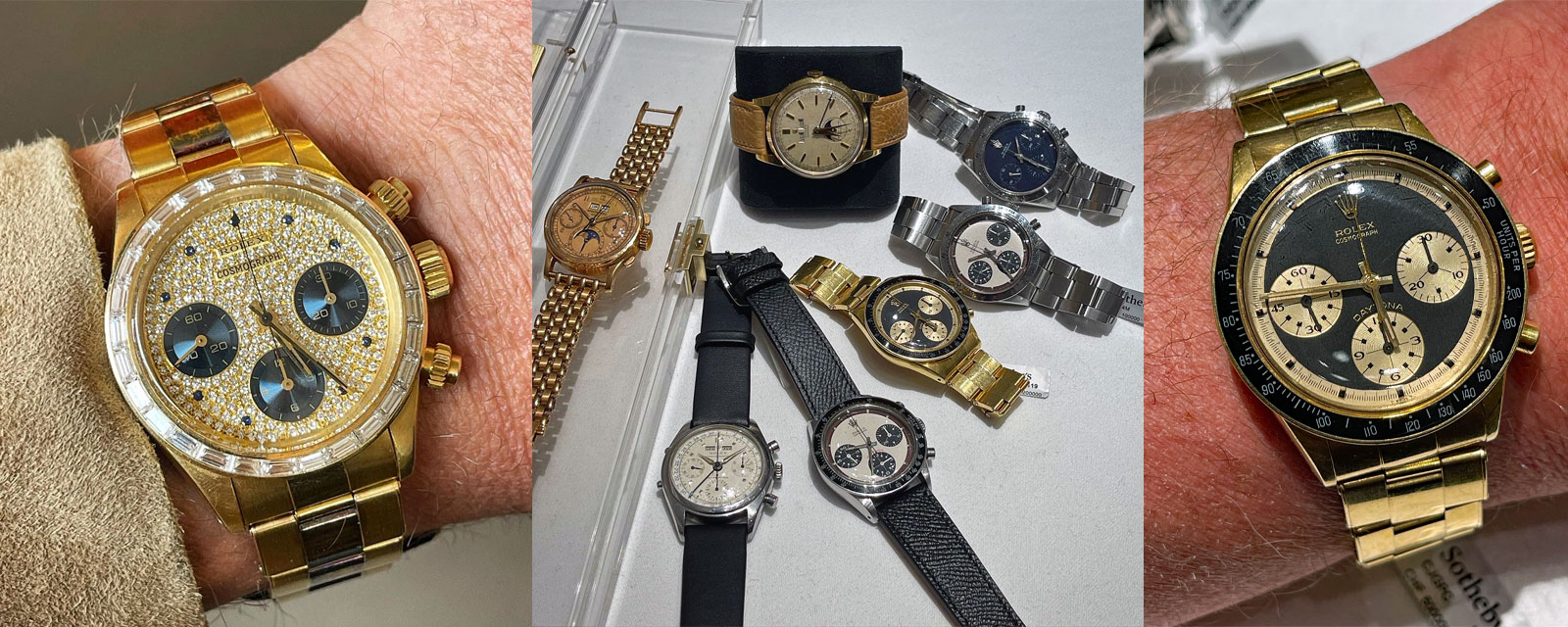The importance of the vintage Rolex dial in watch collecting.
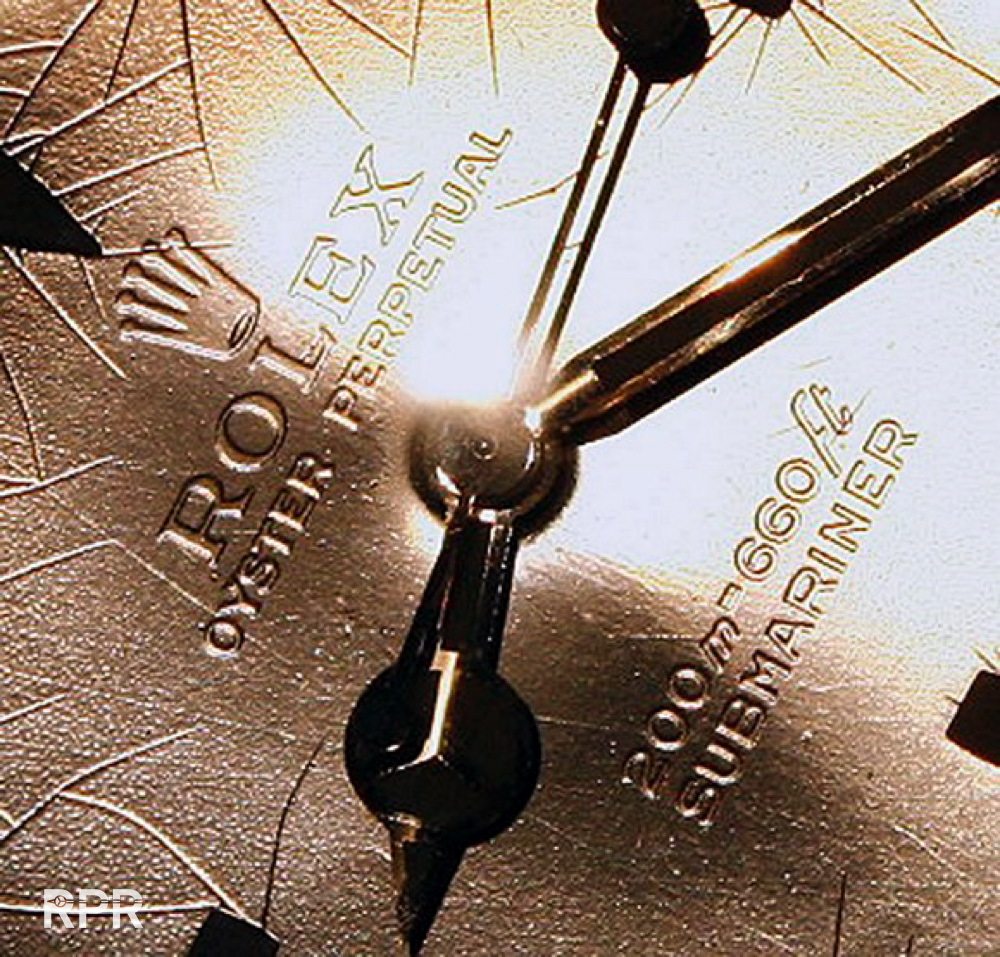
Modern watch collecting has become all about the condition of the dial. Some watch specialist say that about 80-90% of the value is in the dial nowadays. For outsiders this sounds silly or totally unlogic because a watch is made of lots of spare parts to become an iconic timepiece thats worth collecting. But nothing is more true nowadays, indeed collecting vintage Rolex is focussing on the condition of the dial. In specific about the dial patina. Once you studied my “Rolex Buyers Guide” you know modern watch collecting is about the ‘all over matching patina’. The loose watch parts need to have the same degree of aging, patina. The wear and tear has to be in balance!
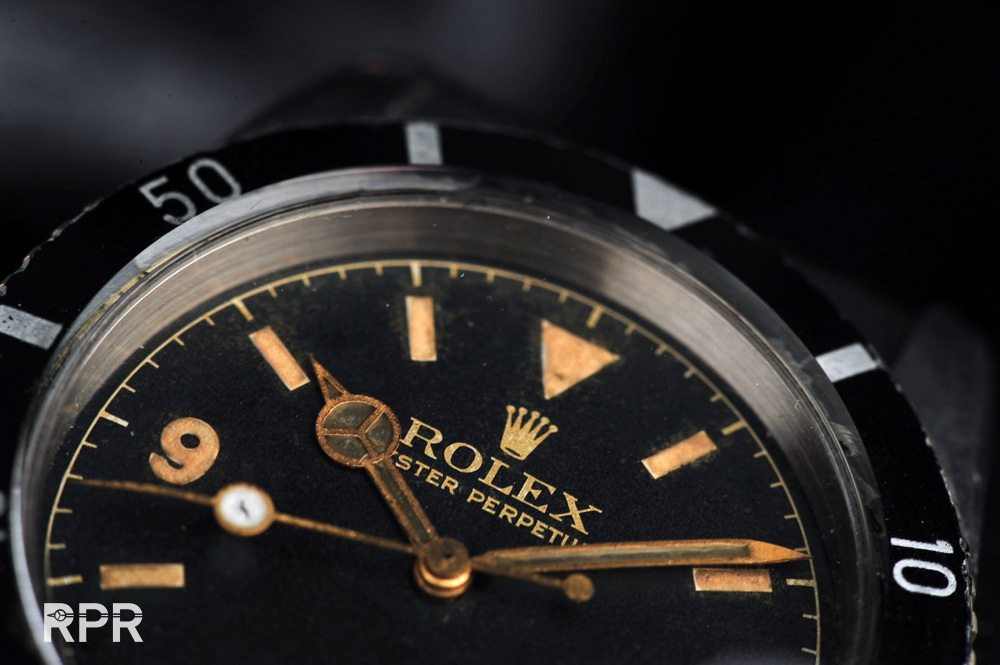
As the dial is the center of the watch and catching the eye of the beholder immediately, the dial was always important and needed to show off the brands identity. At the beginning of the 1930-ies when watches became in demand a manufacture didn’t stamp all the watches he made and delivered to his clients, the jeweler. Instead of signing the dial with his own name, he choose to sign it with the jewelers name, which was back then more known to the public then their own watch brand name. Quickly around and after the WW2 this changed and all watches had their brandname on the dial. Although a watch dial is quite inexpensive to produce, you see nowadays that a special dial can multiply the total price easily. Not only the handcrafted cloisonné dials are hugely sought after…
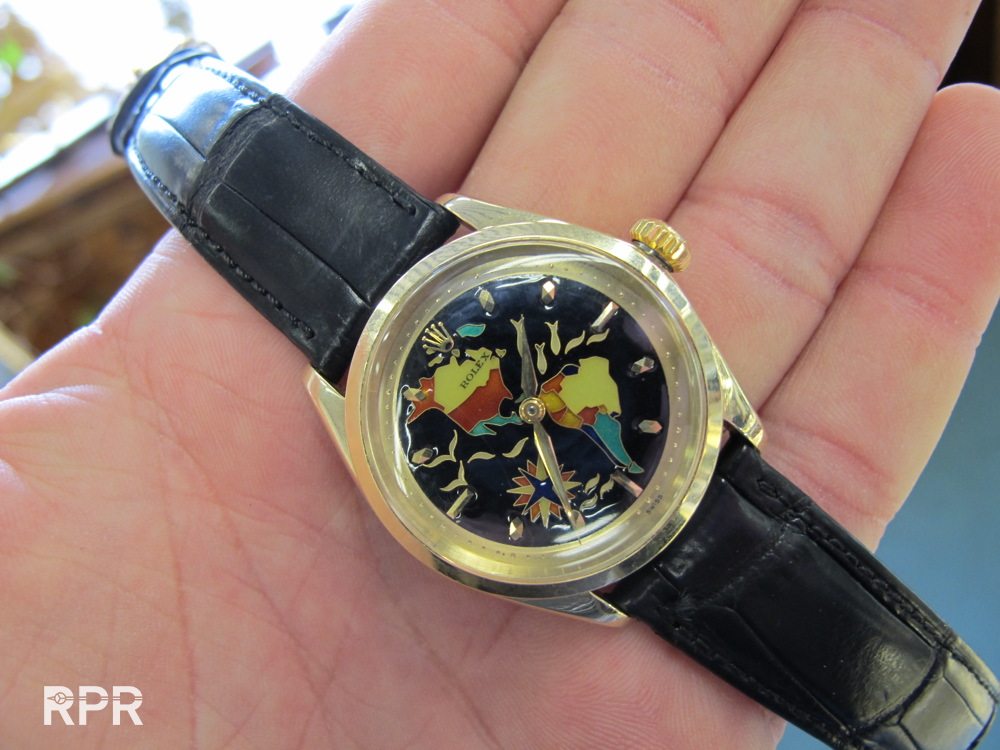
A piece of art are these extremely difficult to manufacture cloisonné dials the ‘stern’ company made for Rolex…
Also simple black dials of merely known white or silver dialed Rolex references are sought after and special. A simple black dial in a ref 2508 Rolex chrono can bring easily 10 times more then usual white / silver version you come across. Rarity is important for any form of collecting…
As collecting vintage Rolex always has some sort of ‘exception’ we see also the contraire of black dials being the ultimate find. Back in the days producing a dial was made by hand and in the beginning of a serie of dial printing, the dial maker Singer test printed the actual text and graphics on a white surface in black. Now it became clearly easy to spot any little mistakes still made by hand drawing lay out the craftsmen had designed. These so called ‘Albino’ prototype dials have been given by watchmaker of Rolex involved in the production. It’s like the birth of a new dial design. So far only a handful are known. Here’s a nicely patinated Ref 6610 Explorer…
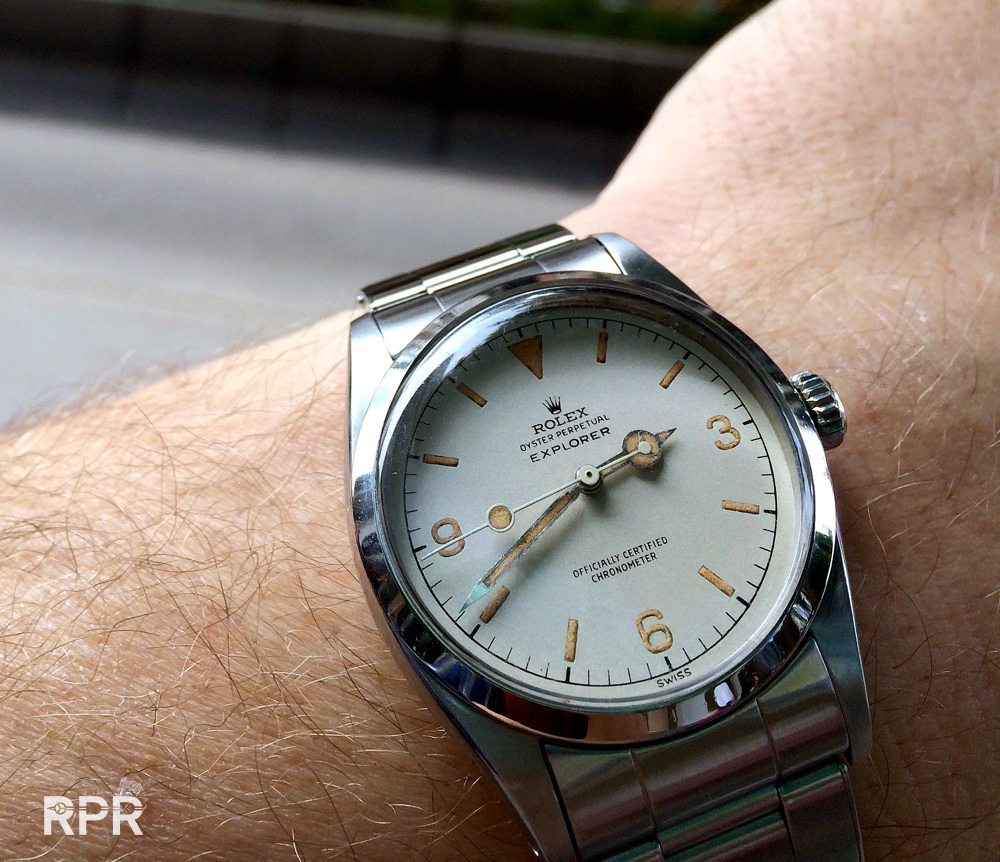
Or the following most important historical vintage Rolex, the DeepSea Special with white proto dial, read all about it here….
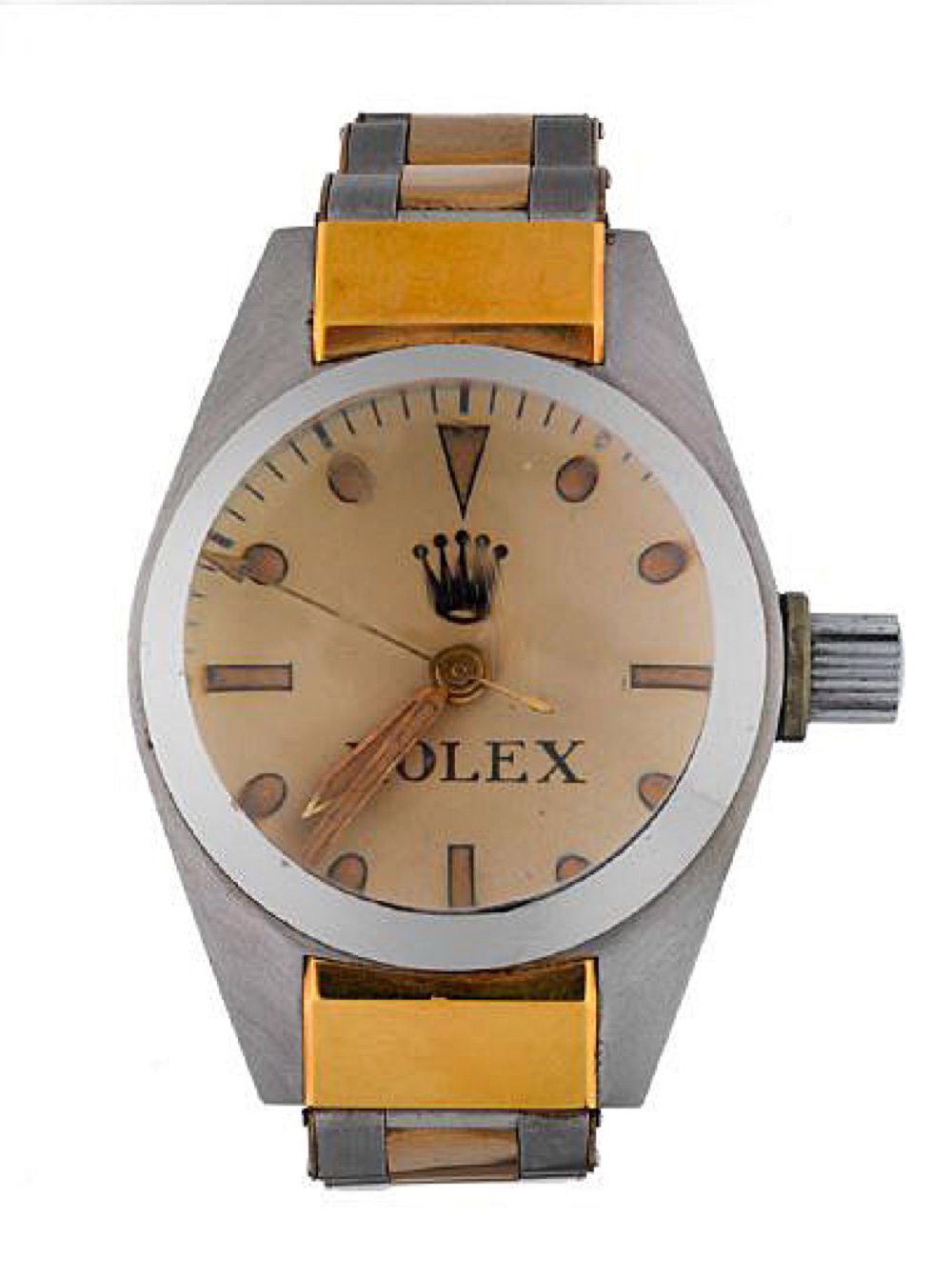
Somehow collecting watches has become like collecting stamps or paintings. All that matters is a pretty face. Collectors will still buy a vintage Rolex with a great dial in a worn down case as it’s become common knowledge that a dial in great condition is much more rare then a case in great condition. Nowadays restoration ateliers make your case like new after laser welding the scratches and dents. Even your lugs will be fat again having the necessary bevel polished on it. A dial with it’s original luminous is not possible to restore without leaving visible marks. Although I dislike the fact that the most watch value is in the dial, it also makes total sense. Those watches that are hardly been worn, have the greatest dial condition. The condition inside the watch during it’s life determines if the dial changes and if it’s not preserved perfectly it show little spots, dark and greenish luminous, broken lacquer, heavy patinated hands, moisture stains. Off course a certain type of dial needs to sit in the correct serial number & reference but still, finding a donor case is much easier then finding a perfect dial. This although a dial did costs only like €20-30,= they have become the accelerator of the collectors price today.
Now lets discuss the dissecting of a watch dial:
- Crown evolution
- Luminous
- Radioactivity
- Tools: Radiation detector/Geiger & UV Lamp
- Matching luminous
- Condition/moisture meter
- Cracked dial
- From glossy to matte
- Tropical dial
- Hands
- Indicators: depth, occ/cosc
- Various prints: oyster perpetual, magnetic, shock resisting
- Dealer stamps
- Special orders
The increasing importance of the dial
Never judge a person by their face, common advice when meeting people for the first time. Beauty comes from within, is another popular mantra you’ll hear often when trying to overcome a negative first impression.
Funny enough, when it comes to collecting watches, we seem to do exactly the opposite. There was a time in the 1980s, when complicated movements and techniques were determining the attractiveness of a watch, increasing demand and value amongst watch collectors. Although the dial was an important part, it was not a decisive factor in the purchasing process. Dials were often polished and reprinted as close to the original as possible. A fresh look was more important than 100% originality. Since that Antiquorum auctioned the spectacular “Mondani” vintage Rolex collection, the market changed dramatically. The 309 lots of rare Rolex sold for in total 11 million Swiss Franc, which where like 6.5 million US dollar. Nowadays the front cover lots would bring this amount…
The demand for vintage Rolex tool watches increased pushing prices to new heights. And with it came inevitably the ugly business of counterfeiting. Demand outweighed supply and all of a sudden your Daytona was worth three times. The dial started playing a vital part when searching for a particular model or type. Asia turned into a hub of fake dials and from Italy the Rinaldi dials hit the market. Quality fake dials with unconventional production methods like burying dials in the ground or baking them in an oven to try and get a matching patina appeared. With prices going through the roof, a bit of chemical magic when printing the dial was only a small investment compared to the high revenues in this clandestine business.

High quality FAKE vintage Rolex dials. Read all about it here on RPR…
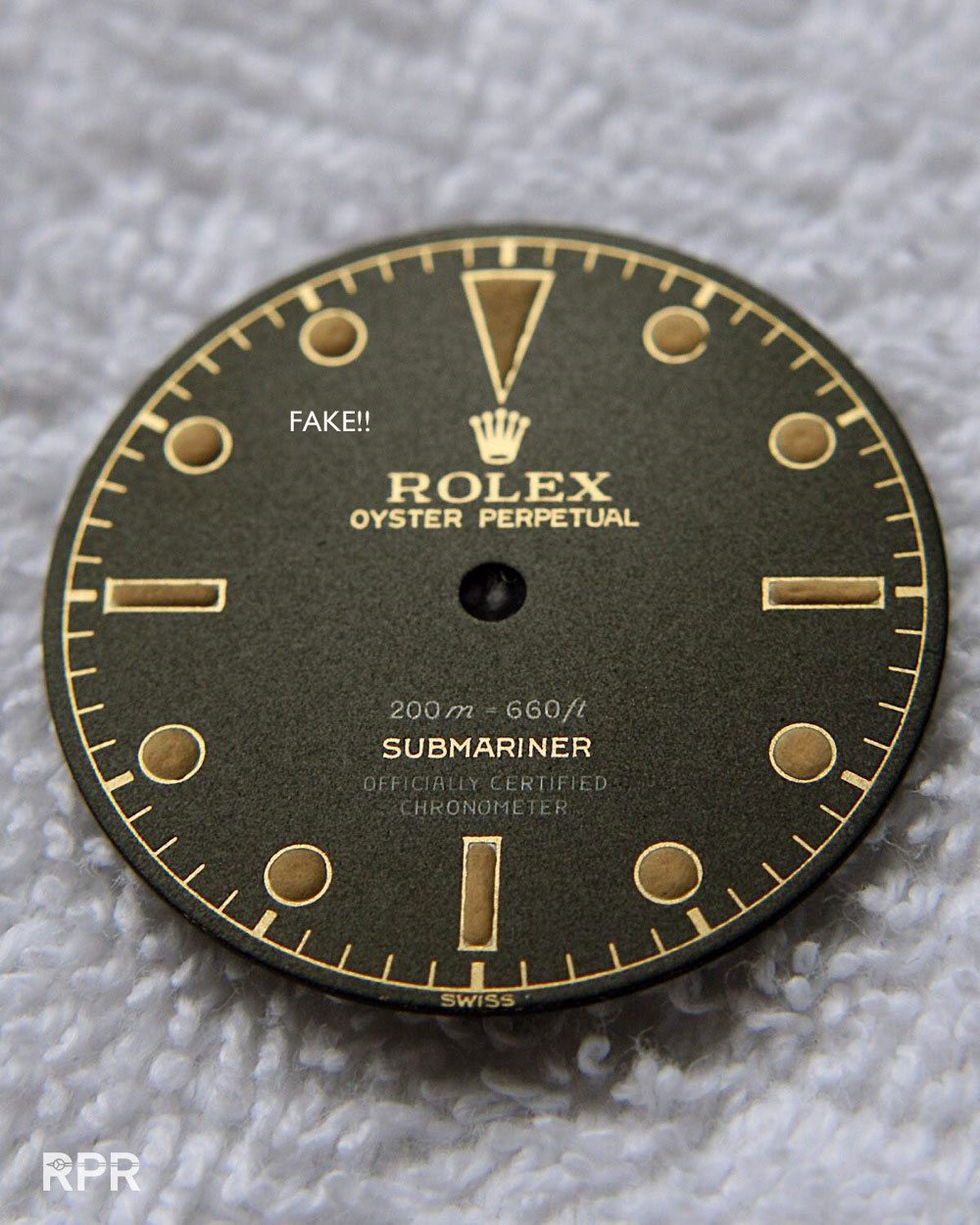
With the flood of fakes entering the market and the prices soaring at the brink of the millennium, originality became key, especially when it comes to the dial. Internet was both a blessing and a burden. Lots of fakes were offered via online marketplaces but at the same time vintage knowledge improved through online sharing on specialist watch fora. What’s that dot doing there, why is there this small line, why is Swiss mentioned, etc. With an increasing vintage collector’s community, the number of questions rose. You weren’t just buying a Submariner, you were buying a Submariner from the 1950s, with specific reference and features. 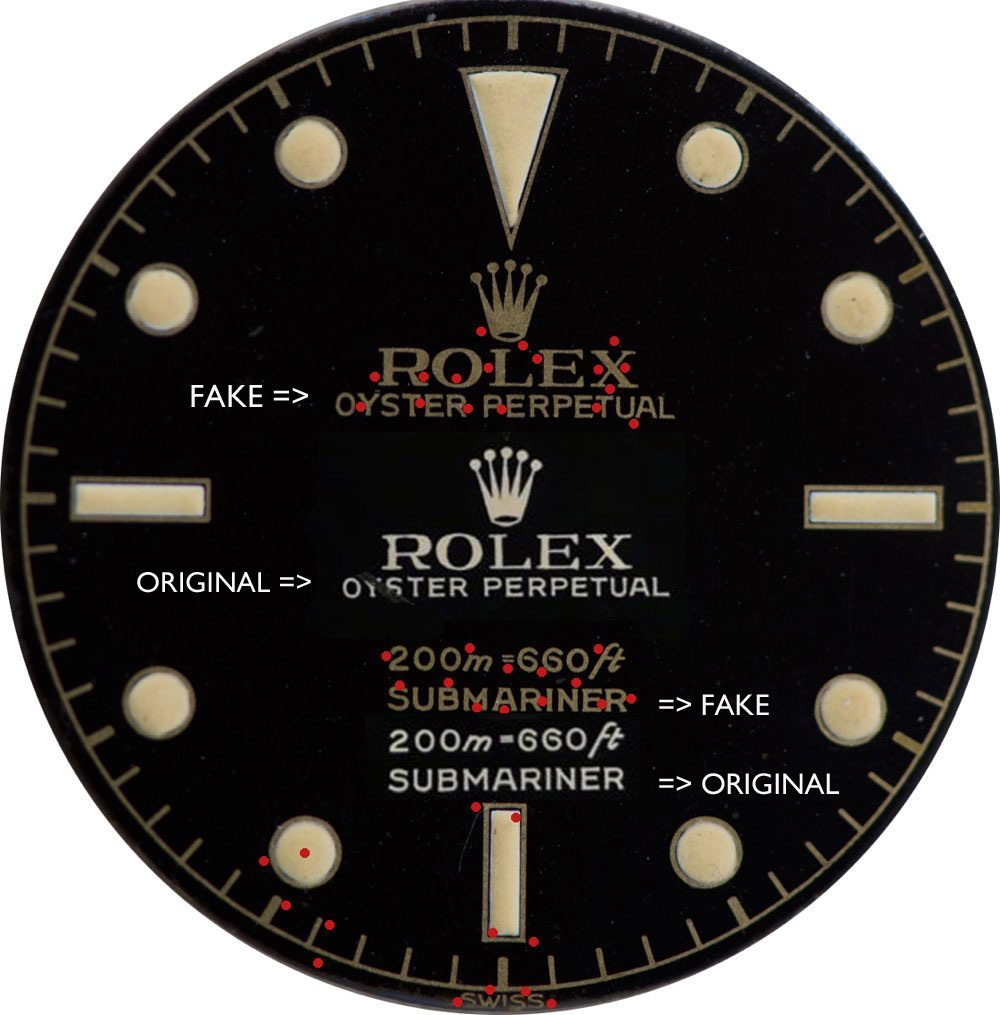
Comparing watches and dials via internet greatly improved the knowledge to distinguish original from tampered. But the lucrative counterfeiting industry has been very versatile and the level of detail so impressive, that it slowly starts to become impossible to trust your bare eyes when holding that sought-after vintage watch. There is always something about an original Rolex that fake ones lack and your challenge is to find it. The way the luminous has been added, the print of the dial containing a certain type of lead or radioactive material, etc., it’s all in the details. Check my “Evolution of Rolex Luminous”…
Radiation meter, magnifier and UV-meter prove more and more to be indispensable tools, when visiting fairs and auctions. Not just to detect fakes, but also to verify if a particular watch has been restored, sometimes even using periodically correct parts. Suppose you find a Daytona with one lume dot on the dial missing. Will you resell this as is or will you restore the watch and add a loom dot to try and get more money for the watch? Many will probably opt for the latter option.
There is just too much focus these days on the perfect dial. Who would have thought you can get € 150,000 for a Daytona Paul Newman dial alone these days! Of course it plays a vital part, but I like to think a dial is important because it has been part of a watch, which has been worn and is still in good condition. Not because the original dial has been kept separately somewhere safe and has been added to a vintage watch later on to make it periodically match. The result is often a dial that is in better condition than the rest of the watch. The watch including the barely visible spot at 18h00 but still in original condition should be valued higher than its periodically perfect assembled counterpart. Honest patina tells the true narrative of a watch.
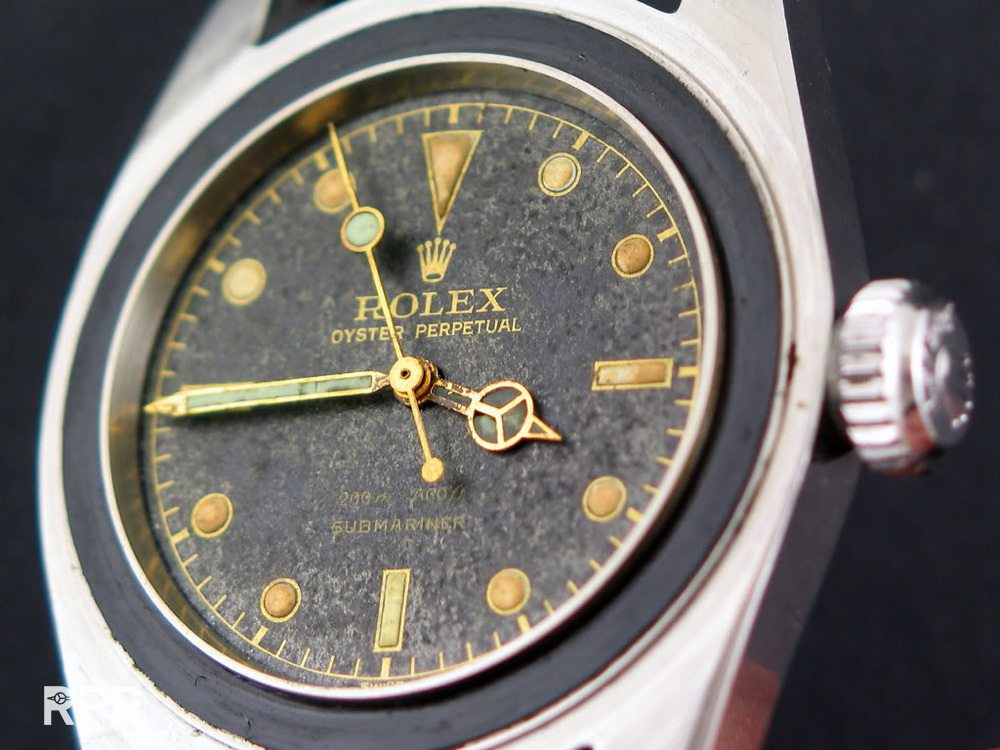
Here’s the story on what I call the ‘Desert Bond’, to illustrate my point of originality over periodically perfect composition afterwards.
A post by a guy called Alex on vintagerolexforum about a Rolex Ref. 6538 OCC triggered my attention. From the pictures I was sent, I could tell this watch has been used heavily but this Submariner Big Crown with 4 lines surely was a stunning beauty. Untouched by service and still exactly as Rolex has sold it back in 1958. The current owner was a fanatic sports diver and assured me he rinsed the watch thoroughly after every dive. The inside of the Oyster case proved to be in perfect shape after all these years of daily usage. Amazing! This is what passion for vintage Rolex is all about.
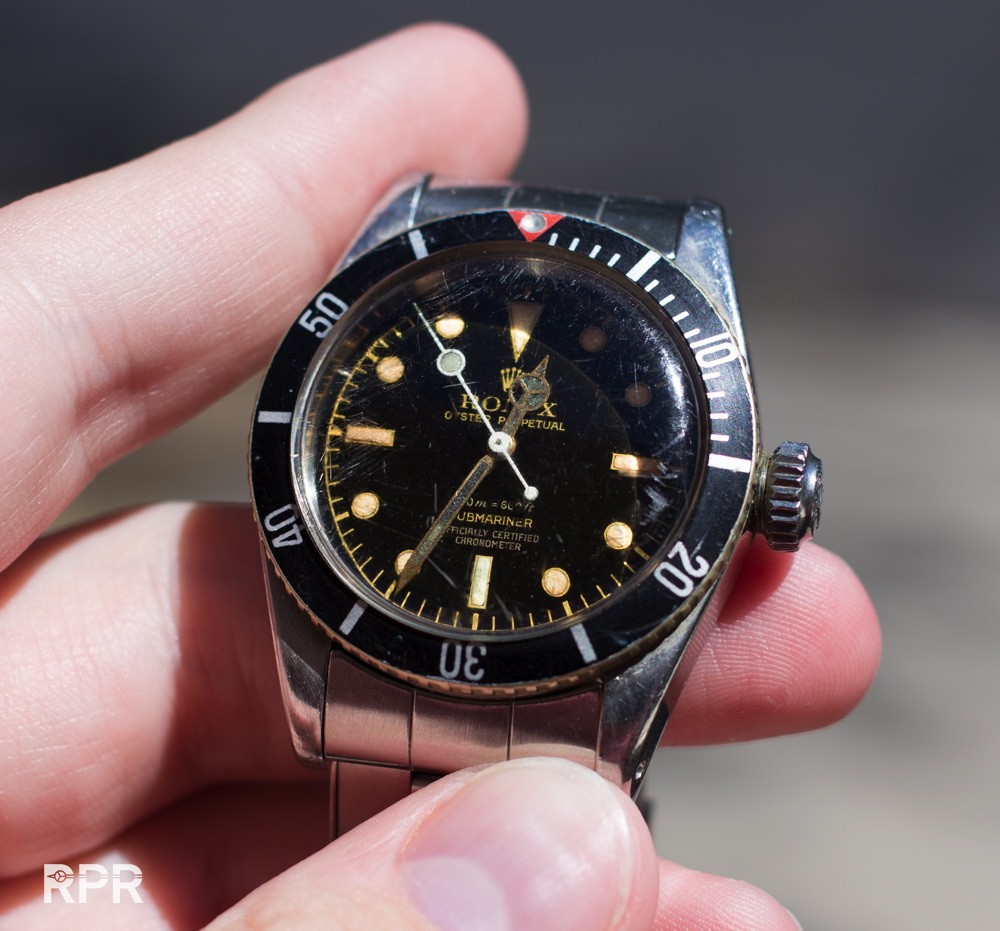
Above, at the moment I collected this marvelous James Bond Big Crown Ref 6538 – 4 line.. Below after I cleaned the crystal..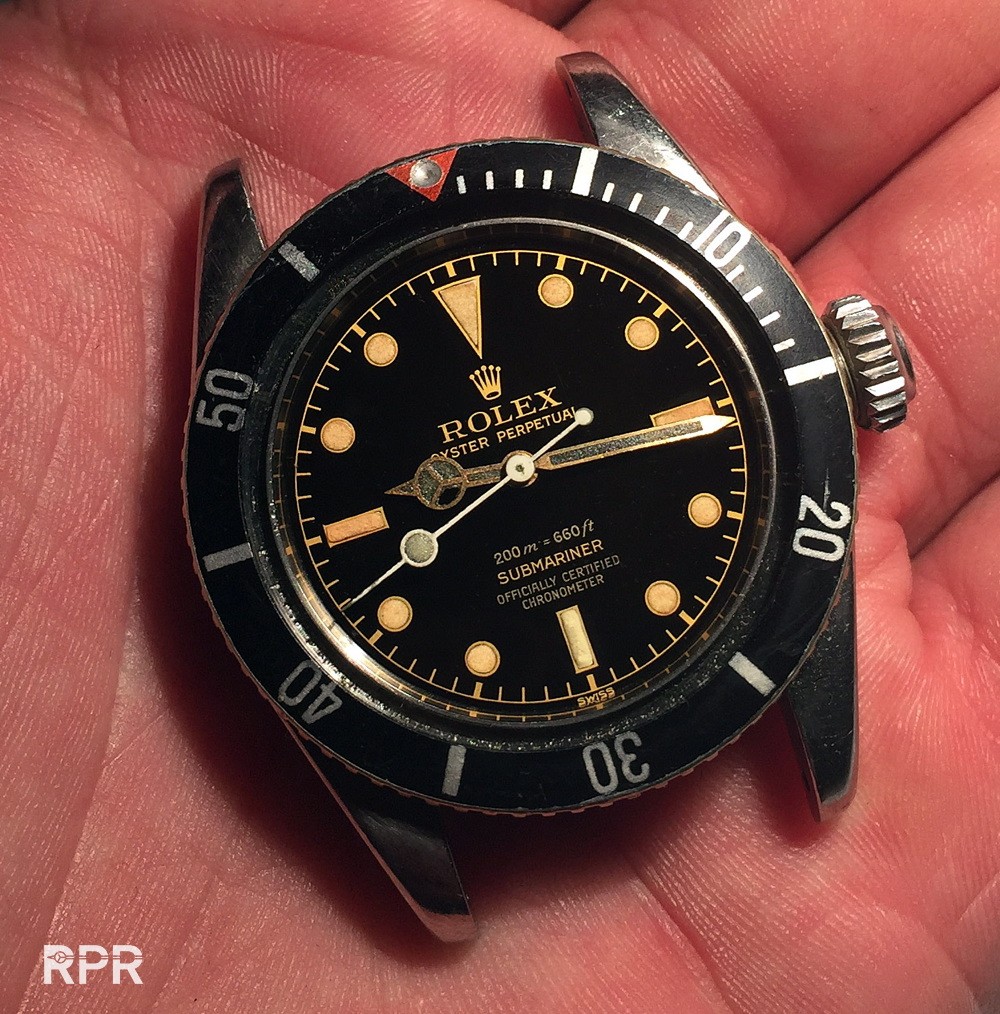
Here’s another fine Ref 6538 Big Crown examples, found with perfect handset…
Following find came directly from the first owner with all possible Rolex paperwork. This incredible tropical Rolex Big Crown ref 6538 looks amazing with it’s dark brown faded dial.
Imagine you would find a black stelline dial, black padellone dial or maybe a black Killy dial, each and every one would cost more then 1 million euro now…
Above and below magical black star gilt dials….. 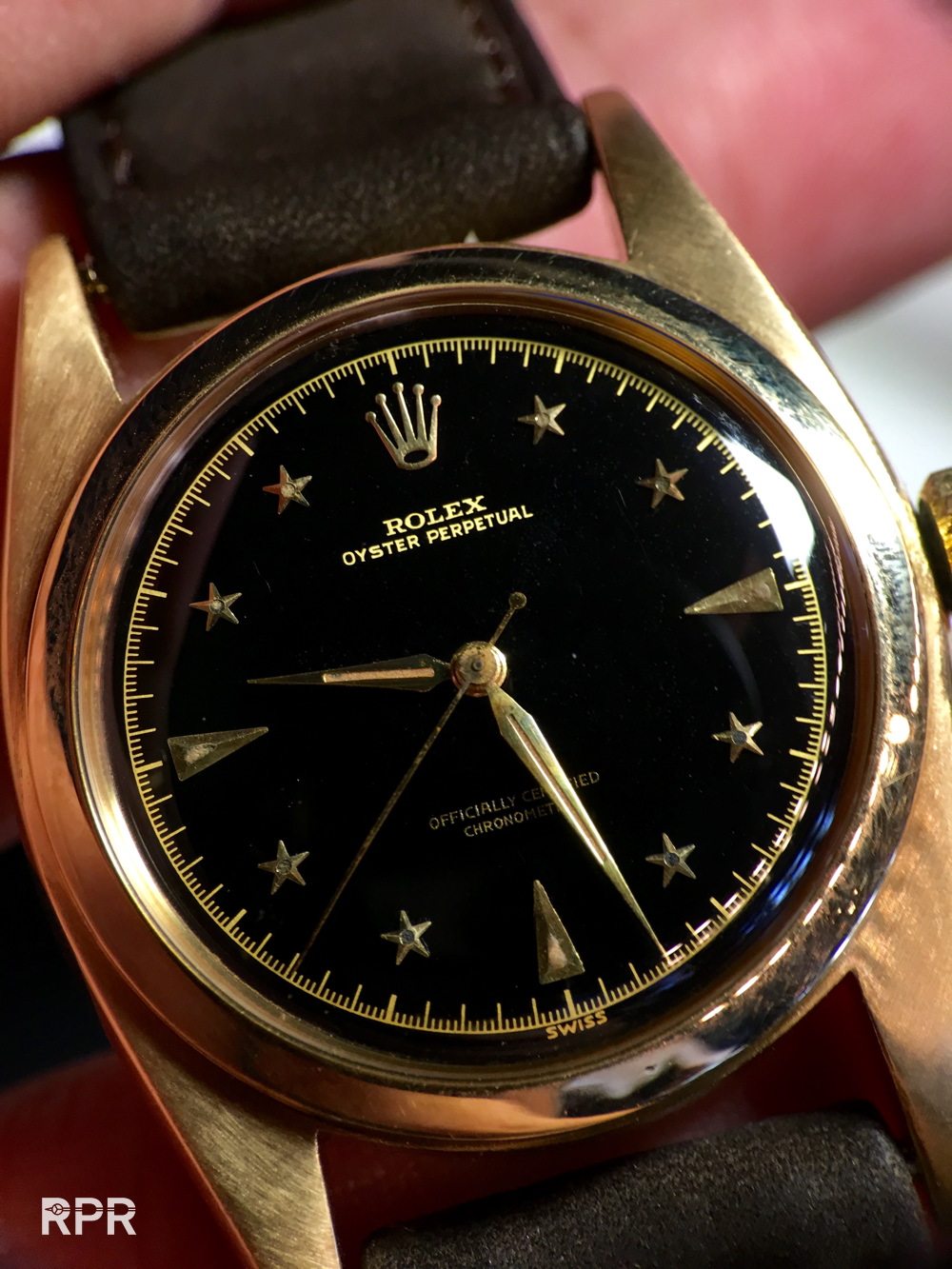
First vintage Rolex that sold for 1 million euro, the Black Oyster Paul Newman alias Oyster Sotto, RCO…
Singer, the dial maker.
We have already seen that the details make all the difference in detecting the original Rolex. And there are lots of details to look out for, the dial in particular. Many watch companies in the early days used to be more an assembly company than a proper manufacture. Rolex made its own watch cases and with the takeover of Aegner, the same could be said about the movements later on. The dial and the hands however were manufactured by external suppliers. Beyeler, Stern (from the Stern family which were overwhelmed by the quartz invasion in the 1970s and became owner of Patek Philippe), Lemmerig and Singer.
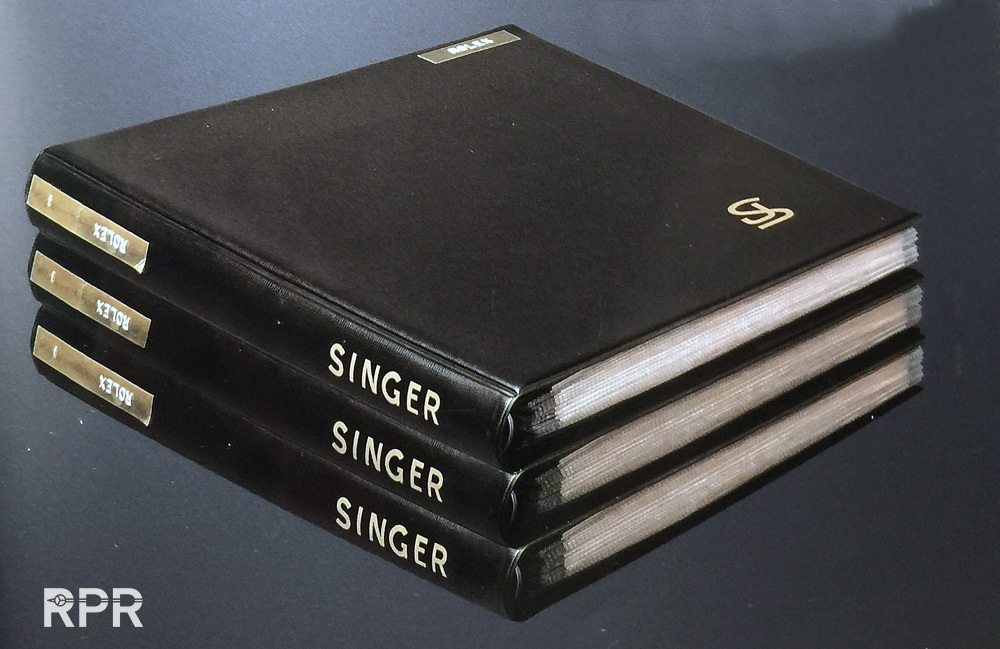
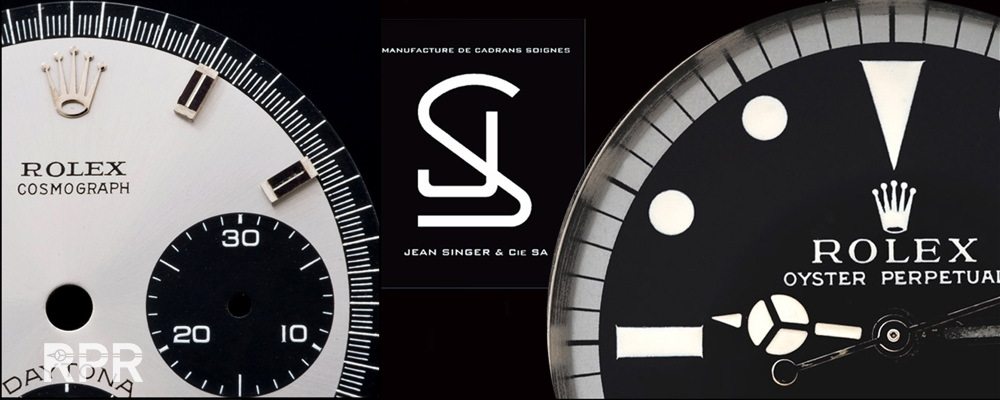
Singer has been without a doubt the largest and most important dial-maker of the 20th century. The century old family business located in Chaux-de-Fonds is one of Switzerland’s last independent dial-makers. This independency made them create dials for just about every serious brand in the business. A few years ago, somebody stumbled upon a Singer Dial maker catalogue from 1968 with a vast collection of prototypes for the DateJust, Submariner and Daytona. These prototypes and designs were presented to Rolex, Omega, Universal and other brands as input for choosing a new dial.
Above, a unique blueish “Cosmograph” prototype dial and the notorious “Yachtmaster” proto dial both fitted in period correct matching cases. Below a gold Singer “Chronograph” prototype dial…
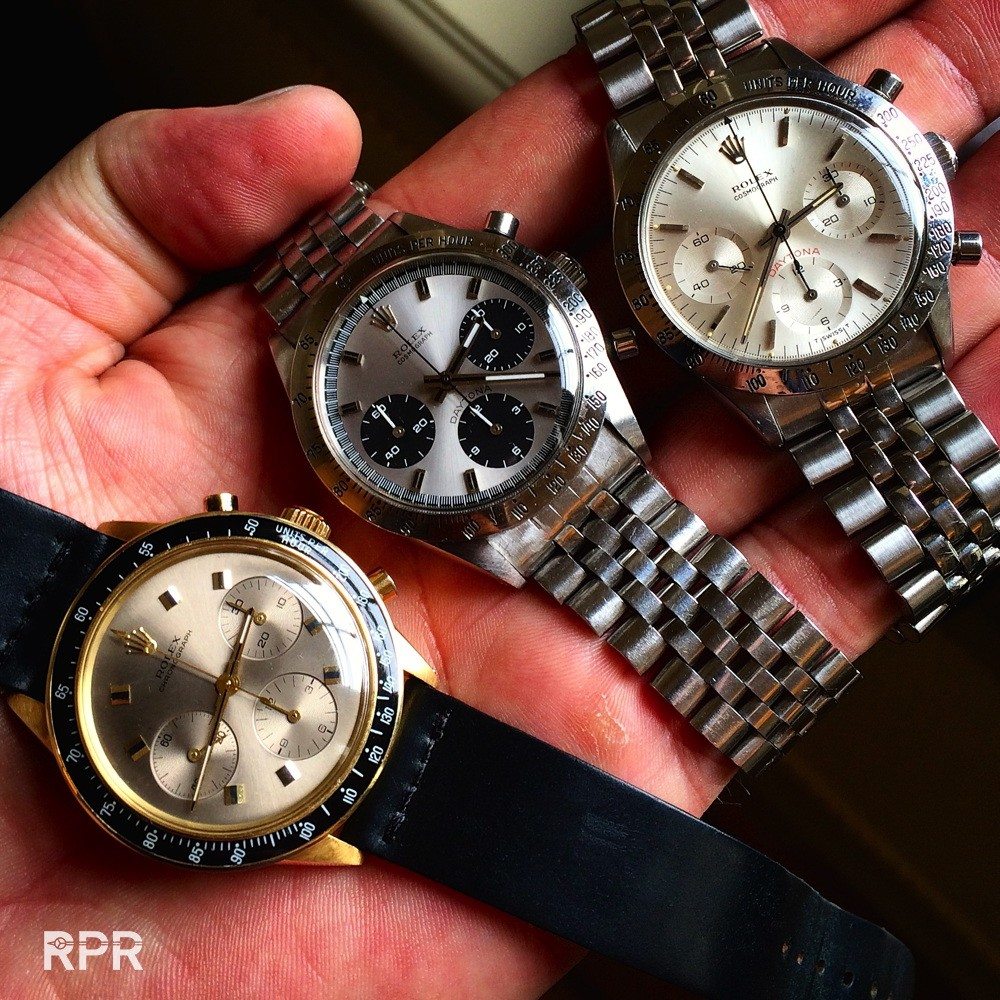
These prototypes are rare and sold at extremely high prices. The question remains if many of these Rolex prototypes actually belong to Rolex. In the early days, similar dials were shipped to several brands and only from the Rolex or Omega mark you could tell the difference. Branding was definitely not as important is it is today. Unfortunately, the Rolex archives are still off limits and my guess is it will be hard for Rolex to show on record all the dial watch combinations that were delivered. They probably have records of serial and reference number destinations, but lack the photo database Patek Philipp for example has built up on dials that were fitted on their watches. 
Being the preferred supplier of dials for quite a few watch brands, Singer, or rather the creative department at Singer, has been very influential in the development of the wristwatch. Not only for Rolex, but also for Omega. Monte Carlo and Tudor, to name a few. If Omega went to the moon, Rolex most likely knocked on Singer’s door asking them to come up with something new to avoid a drop in sales and unhappy dealers. Designing a new dial was a cheaper way of creating a complete new watch anyhow.
You clearly notice the ‘prototype’ design that Singer proposed Rolex for the new ‘Yachtmaster’…
But also Omega got this dial design proposed….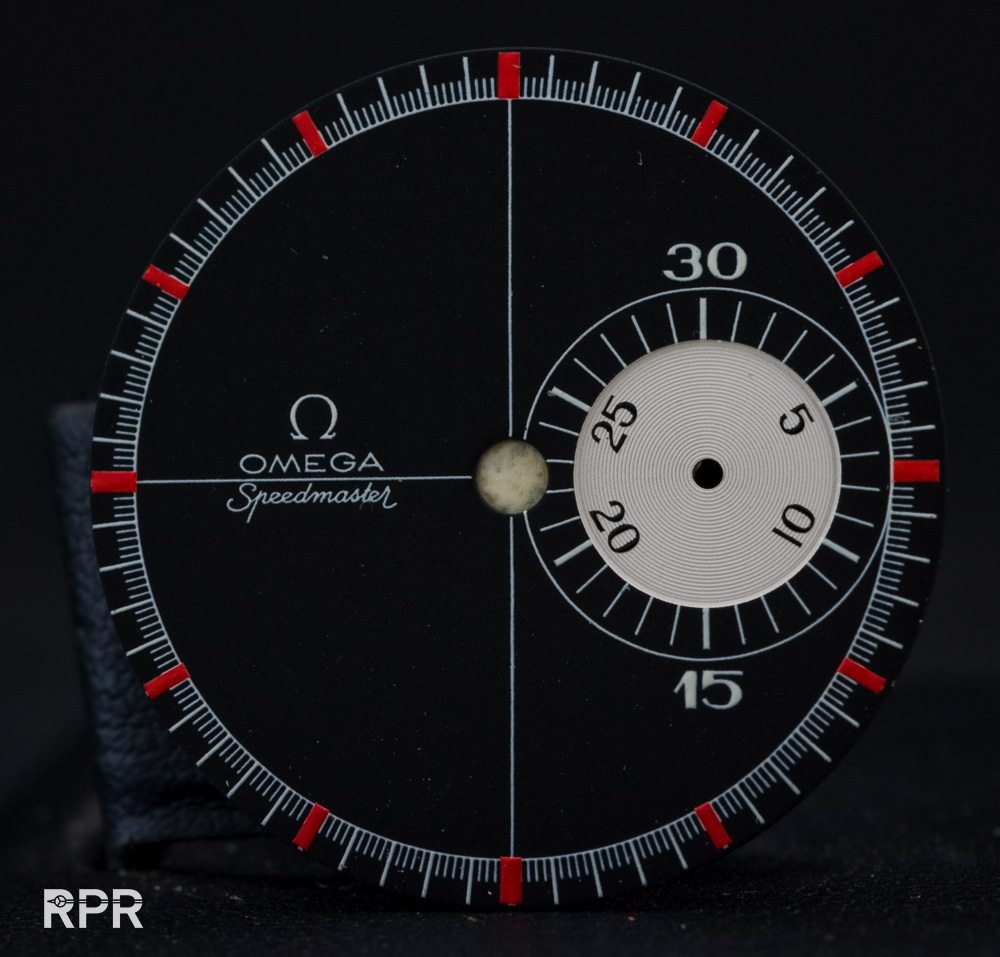
Here you see the actual page from the Singer catalogue where this dial was placed to present Omega future possibilities..
Overview dials
Analysing watch dials before the 1950s is relatively easy as there weren’t that many models. Before World War II, English was not yet leading as dial language, so you would see both French and English printed examples. With the Oyster case and automatic movement both patented, came the first iconic models.
Unfinished & rejected Rolex dials…
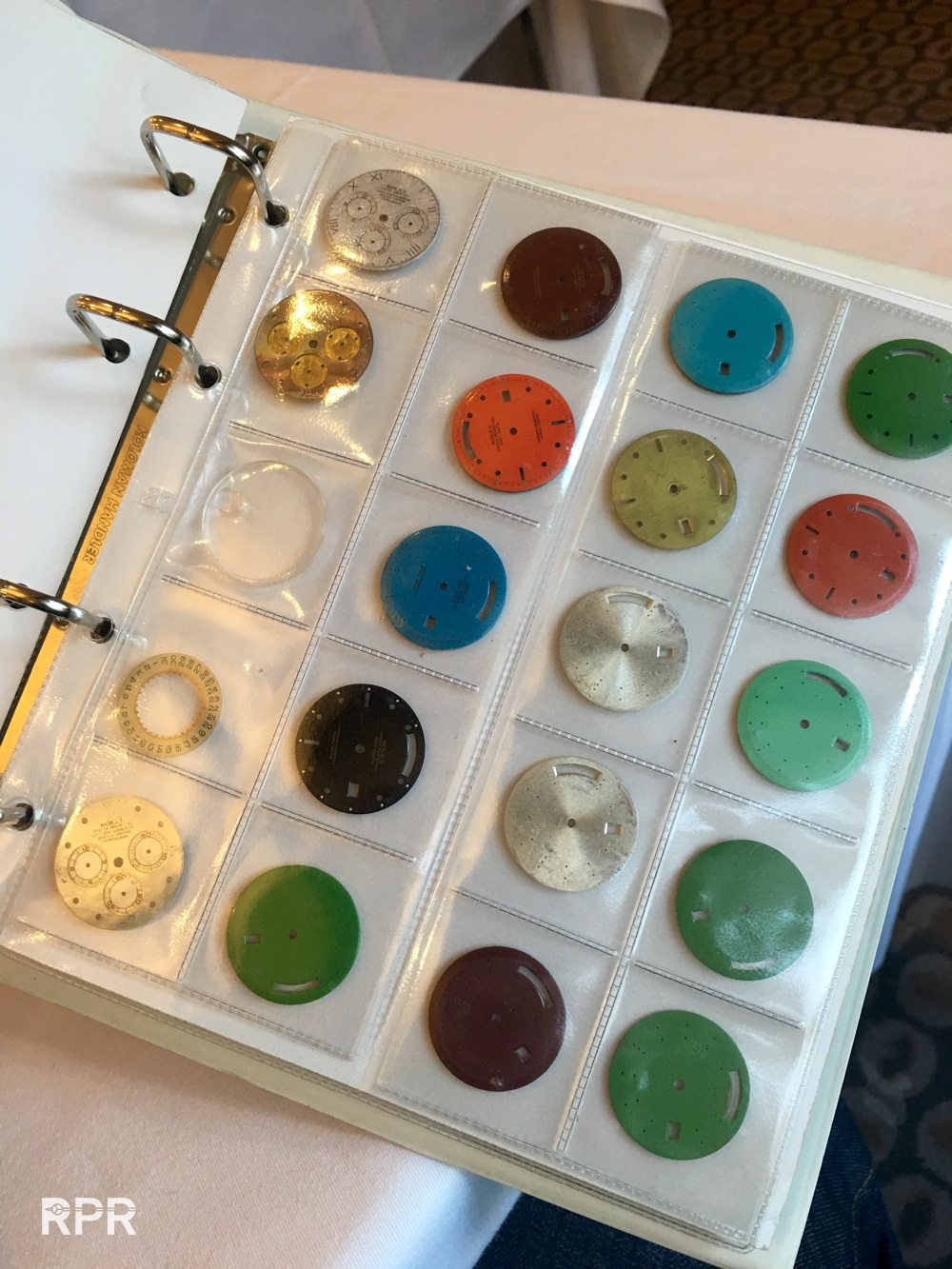
Chronographs
At the brink of World War II, Rolex introduced the first chronograph wit 30-minute mark and 12-hour totaliser. Below a rare big size Rolex Chronograph ref 2508 with stunning black dial…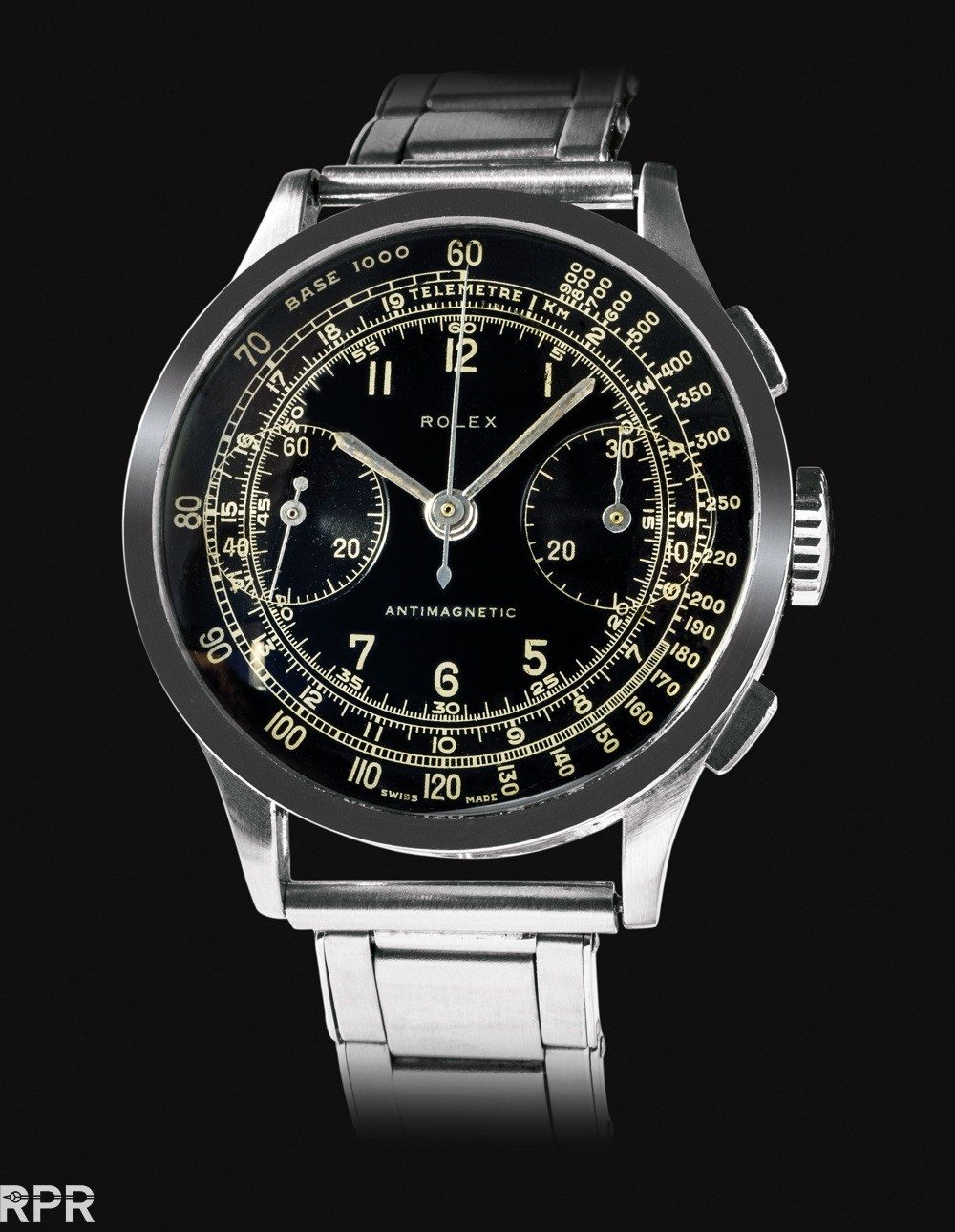
Antimagnetic
Besides a functional feature, the term antimagnetic was used as sales trigger in the first half of the 19th century, much like water resistant. Experiments with antimagnetic watches go back as far as the mid-19th century, with Vacheron-Constantin as prime pioneers. It wasn’t until 1929, that Tissot assembled the first antimagnetic wristwatch.
The balance wheel inside a watch turns 86,000 times per day and accuracy can be affected if the watch comes close to magnetic fields. These fields were not so abundant as today, with countless mobile devices or even an innocent looking refrigerator magnet. Antimagnetic was predominantly a chronograph feature, where accuracy was even more vital. Perhaps it was also an aesthetic reason to add the antimagnetic print, as the dial space above 18h00 was rather empty.
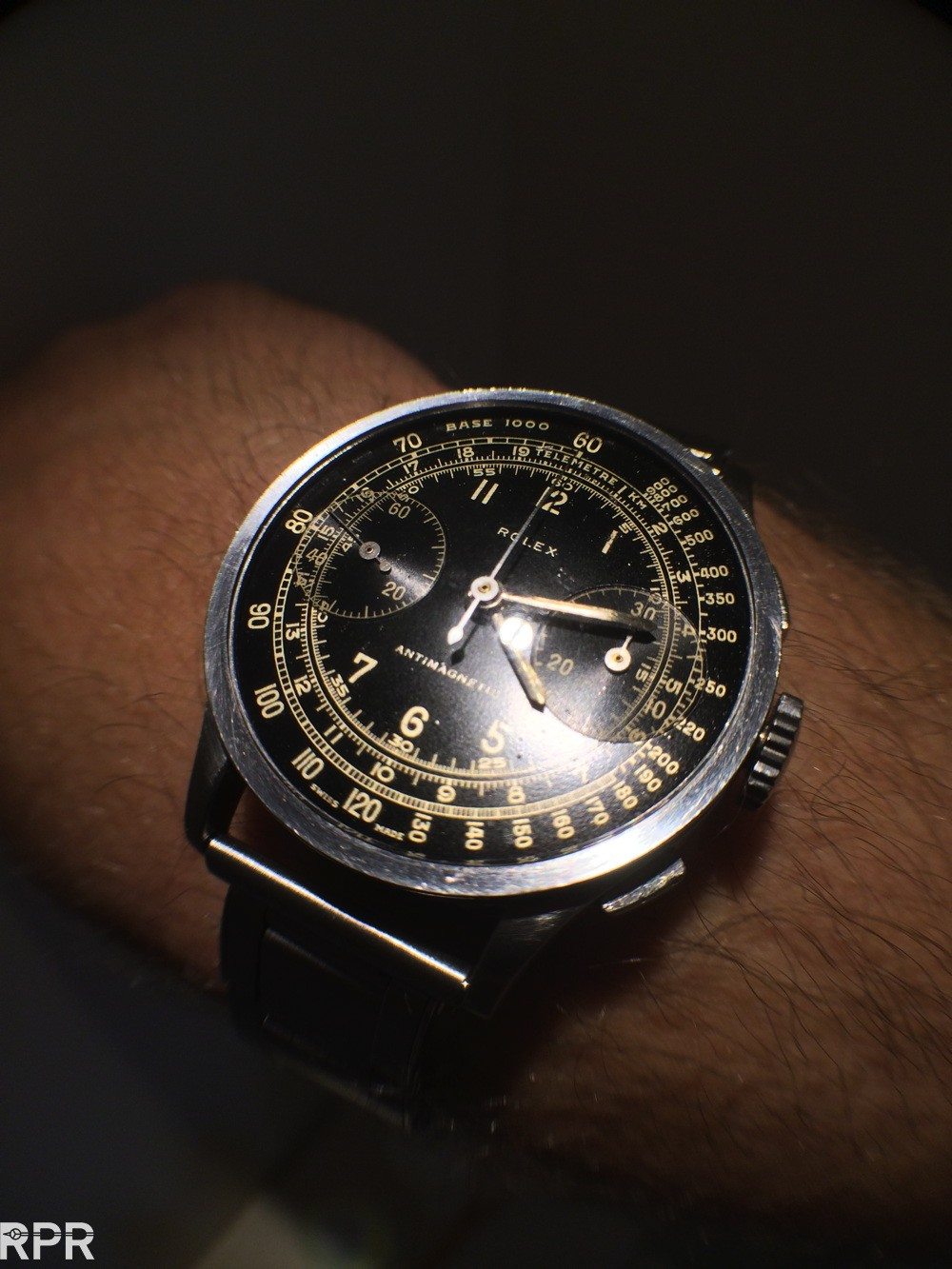
Here another black dialed ref 2508 but this time with olive shaped pushers instead of the rectangale ones. Not the simple Rolex writing on the dial on both examples.
Here below is a regular much more common white dialed, much less in demand then the rare black version above…
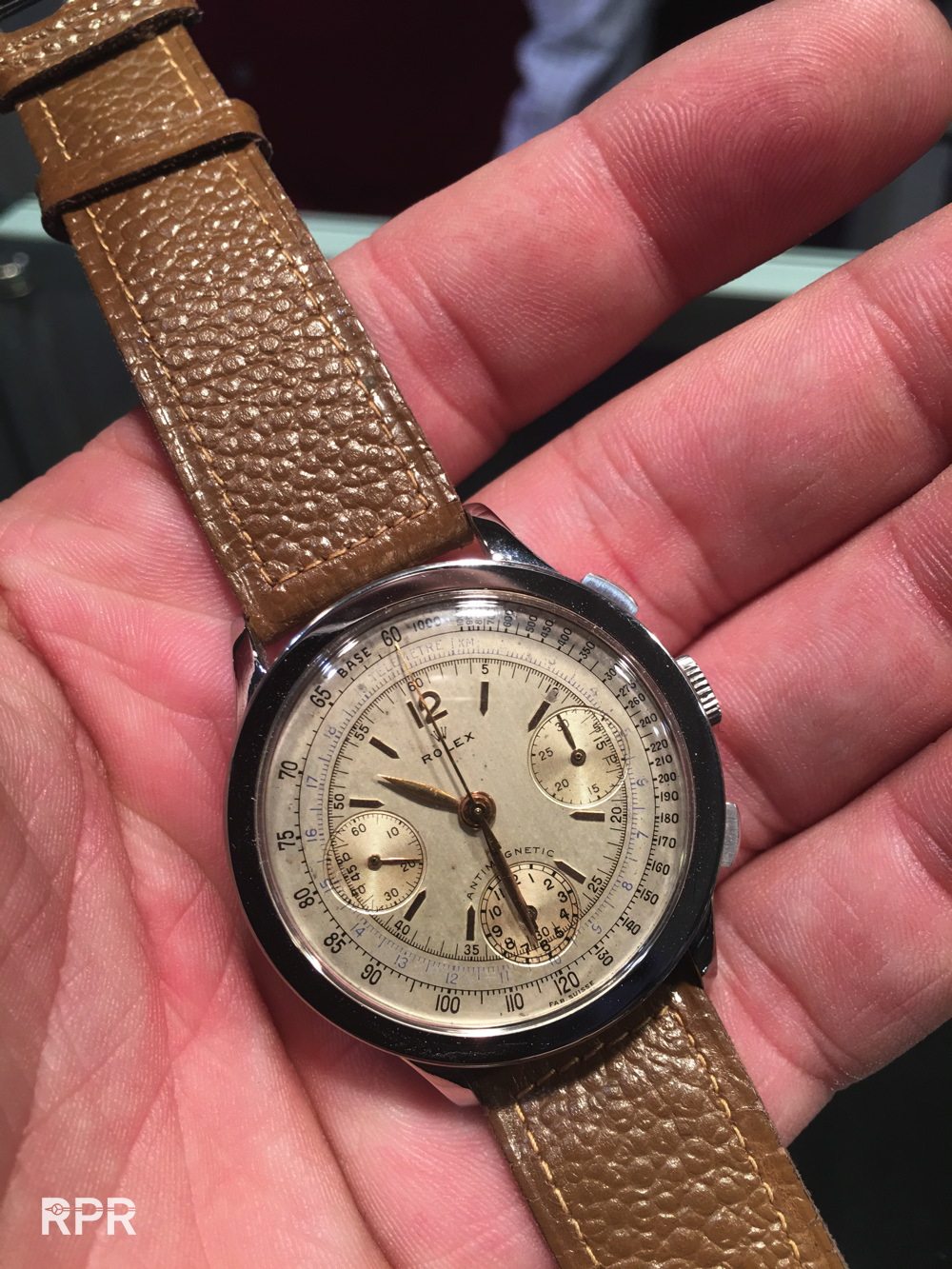
The marvelous Rolex chronograph Rattrapante Ref 4113 with fetched more then 2 million last year. Note the french wording of ‘antimagnetique’ there where english wording are ‘antimagnetic’.

Yet another Rolex chrono with ‘straight’ logo ref 3484. In general I need to add that plenty of ‘fake’ Rolex chrono’s are floating around with a straight logo added on just another anonymous swiss chrono. As always, the devil is in the detail so be very careful!
And a very crisp and rare pink gold big size Ref 3335 with yet again the straight Rolex logo…

And almost the exact same Rolex is this stainless steel Ref 3330 with pink dial and also straight Rolex logo. The difference between the 3330 & 3335 is the way the lugs are shaped. The 3330 has traditional shaped there where the 3335 is angular. 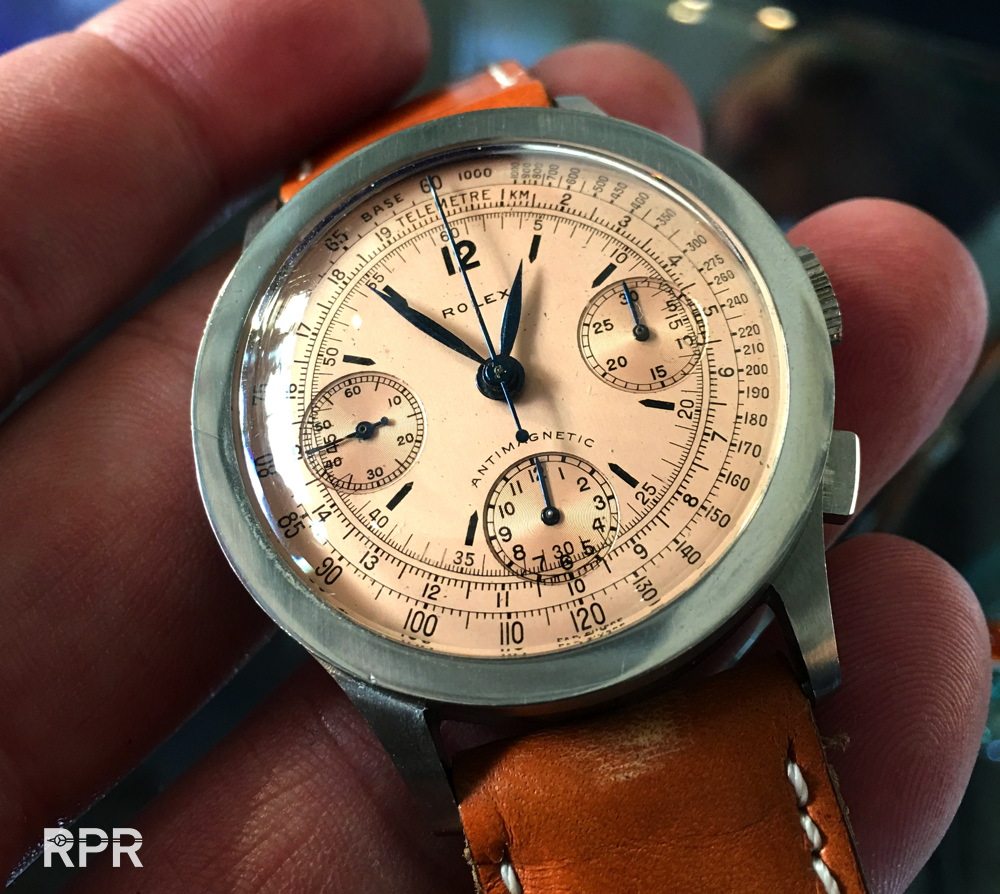
Much more fancy where the Rolex logo on the monobloc Ref 3525’s….
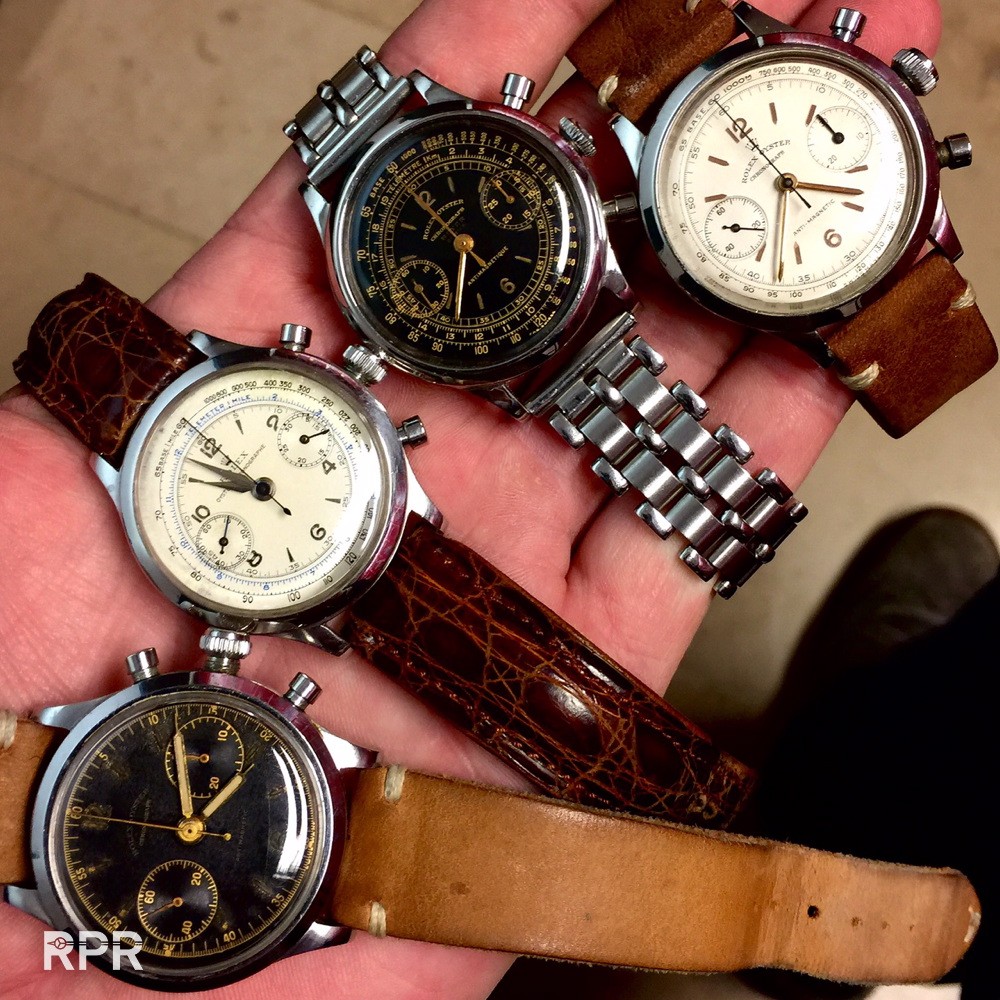
Although very first version also did have the straight Rolex logo….
Below Ref 3525 monobloc is also heaving the “Beyer” signing. A well known Rolex dealer from Zurich who sold many POW ( prisoner of war) during the WWII…
Almost mint examples of the 3525 with very fresh gold and a heavy patinated gold case that turned almost black on one side..

Curved logo on a pink dial with applied index and numerals, telemeter scala both signed ‘swiss made’ and ‘fabrique suisse’..
In 1947, the waterproof chronograph with 12-hour totaliser and triple date was introduced. The Killy DatoCompax…
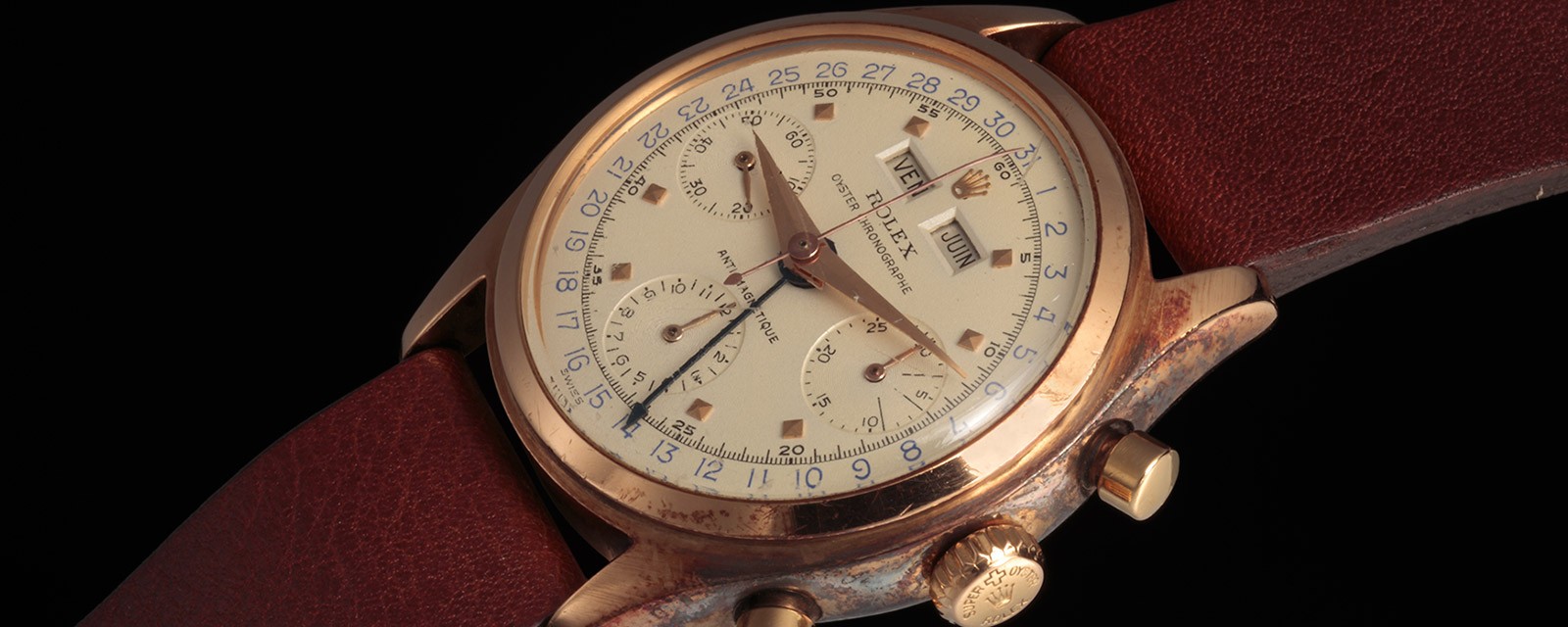
Above in NOS pinkgold and below in stainless steel with rare steel engraved index and steel handset ref 6036…
Complicated watches
Perhaps unknown by many, Rolex toyed with the idea of making a complicated watch, compared to the rather simple movements produced so far. The steel Split-Seconds Chronograph ref. 4113 was briefly made in 1942 and only 12 examples were produced. This rare and oversized model (44 mm, unique for those days), also known as Rattrapante Chronograph, became the most expensive Rolex ever sold, breaking the $ 2.5 Million mark at an auction.
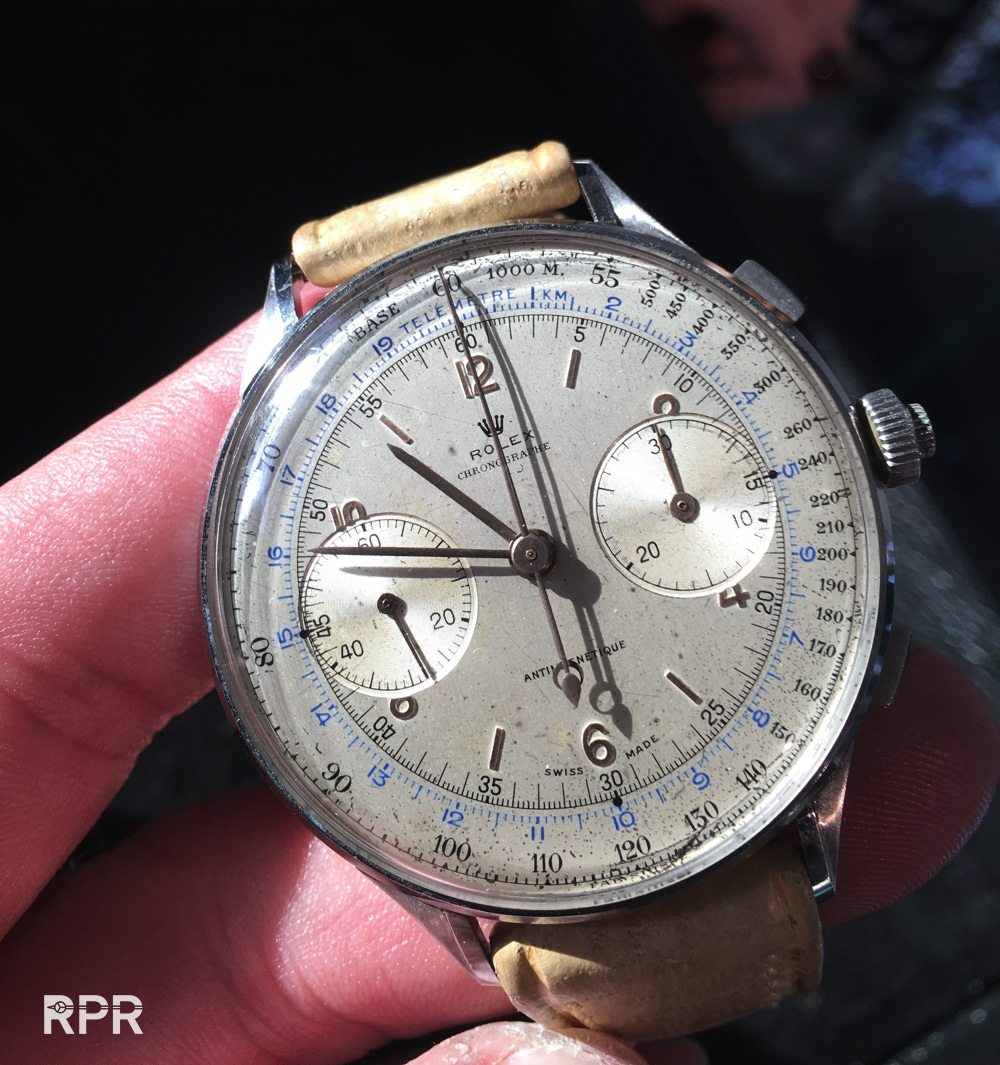
Every Ref 4113 had a different dial design. Remember that back in the days a dial was not very expensive to produce, therefor with highly complicated examples the owners could choose the dial lay out.
Another complicated watch was the reference 8171, better known as Padellone. It was released in 1949 with a triple moonphase, blue date ring and the crown was not water resistant. The snap back case was manufactured by the same company that supplied Patek Philippe. With 38mm not as big as the Split-Seconds, but still an hefty size considering the era is was made. About 1,000 examples have been produced, which is very little knowing that Rolex produced over 80,000 watches in 1950. This is a highly sought-after watch by many collectors.
2 different toned dial surfaces. The right 8171 is much lighter then the left 6062.
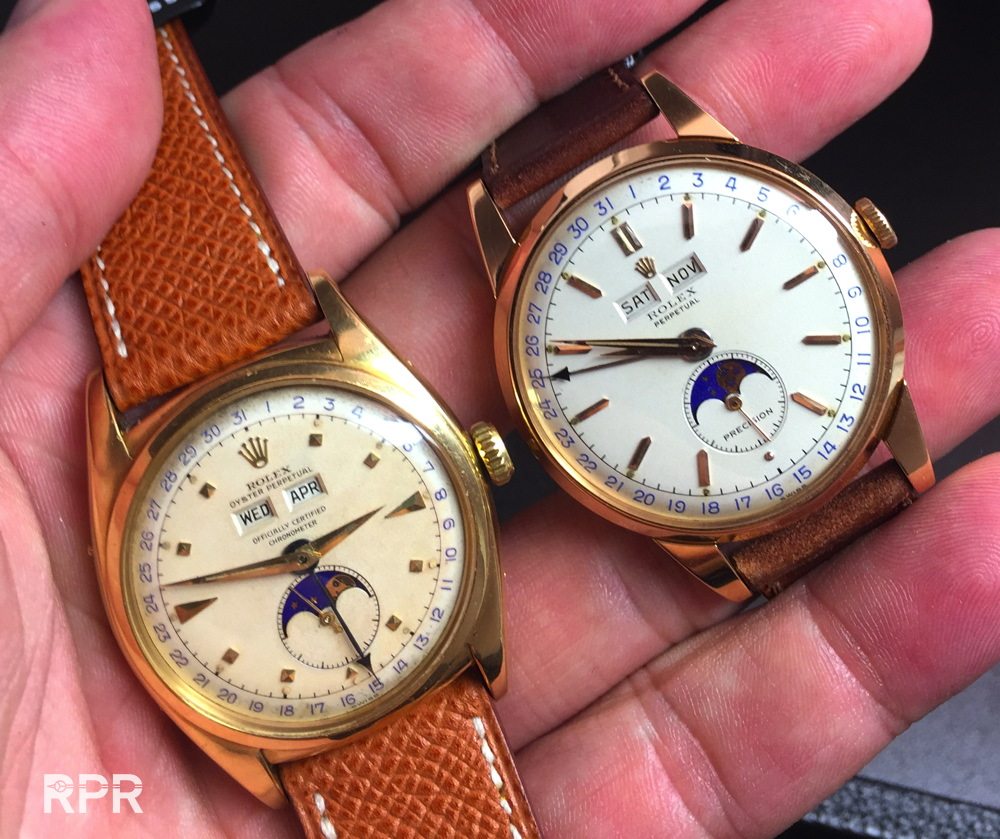
The white surface of these complicated Rolex where called grenée. It’s looks to be porous and very sensitive for moisture…

Yet another close up that shows you how rare it is to find a perfect grenée dial. Up close you see the radium dots are ‘bleeding’ and leaving a little spot around the dot. You also see a little spot next to the middle, mostly done by the watchmaker when he took the hands of the dial. A lot of rare dials have been damaged by careless watchmakers…
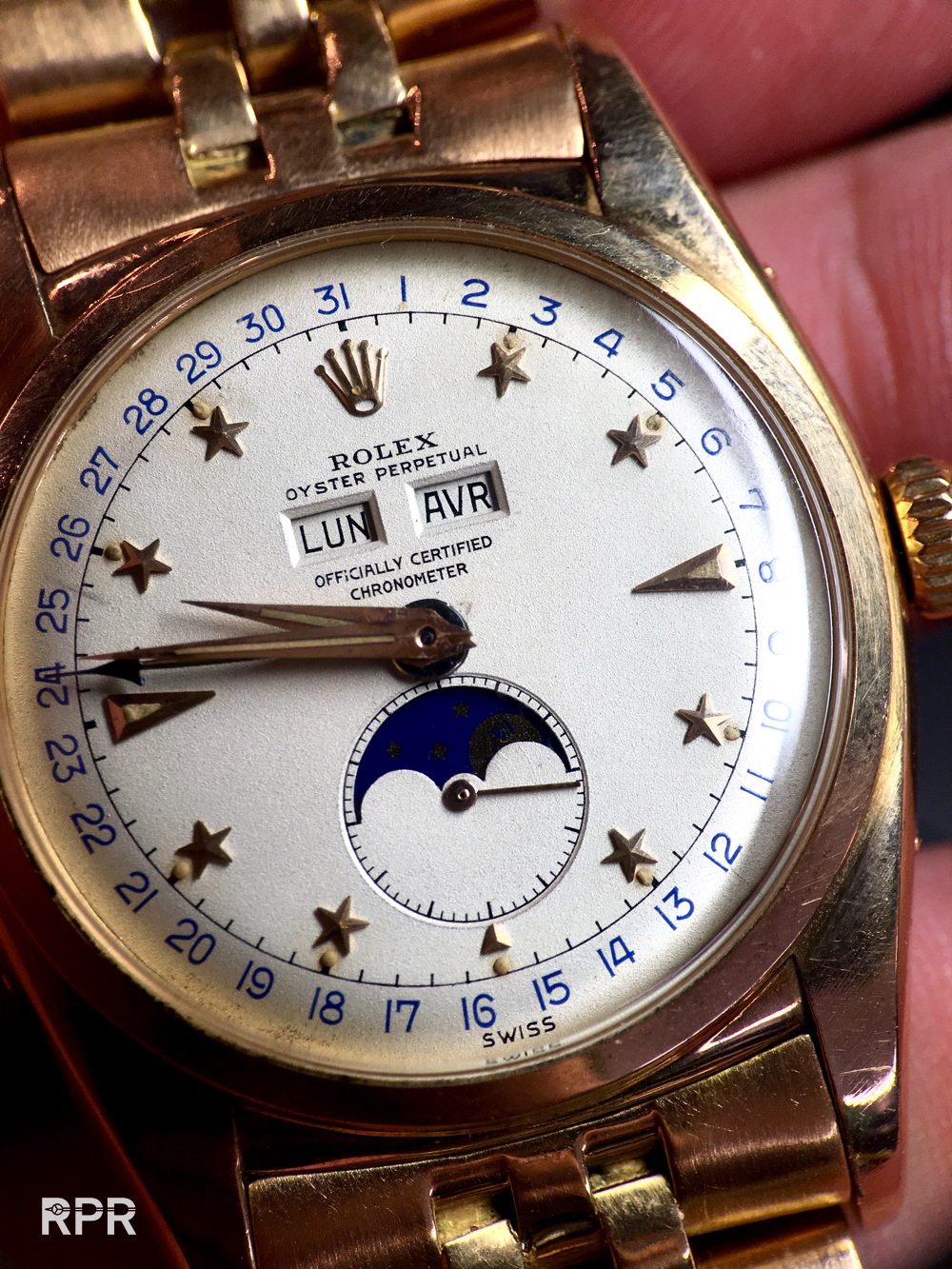
What you see is an almost 100 % perfect gold Paul Newman. Except the broken lume dot at 11 o’clock the real pity is that the 3 o’clock lume dot got damaged. We often see this happening when a watchmaker doesn’t put back the movement in the case carefully, he breaks the lume at 3 and often at 9 o’clock. Some watches are known before they for instance go to auction. Earlier pictures show then that the broken lume happened during the examination of the dial and declines the total value dramatically.
Below Paul Newman is having all lume dots perfectly in tact. One would say that the ‘tiffany & co’ print is wrong as it’s added so sloppy but then this was often the case when Tiffany added their name by them selves. If Rolex, or lets say Singer had added the name, this would never happened. The lume on the hands look a bit tired, greenish dark compared to the dial..
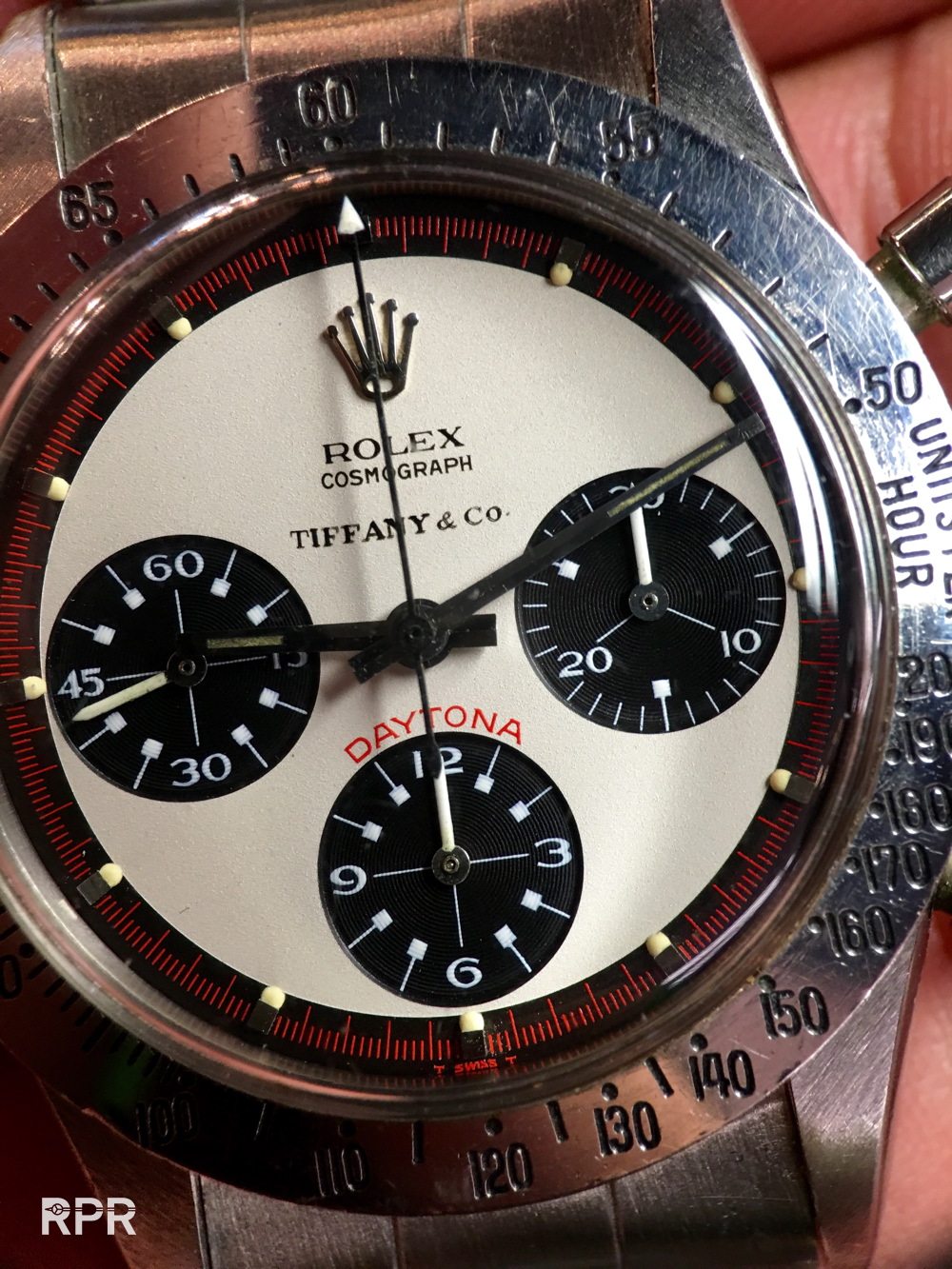
Datejust
Appearing first in 1945, the dial of the Datejust was revolutionary due to the first automatic date mechanism in a wristwatch, that showed odd days in black and even days in red. Below you see Sherpa Tenzing’s Rolex Datejust given by Hans Wilsdorf after the conquer of the Mt.Everest.
The date window was located at 15h00 and the watch was fitted with a central second hand. Below the rarely seen first generation Datejust dials where having the ‘honeycomb’ base engraved middle.
Up close the black waffle dialed Ref 6305, note the print is done in gold and in silver…
Another rare Datejust Ref 6605, found from it’s original Military owner who bought it
From the 1950s onwards, things start to get complicated concerning dials. For instance, every model had its own coronet. More watches were produced and each model had its own designer(s).
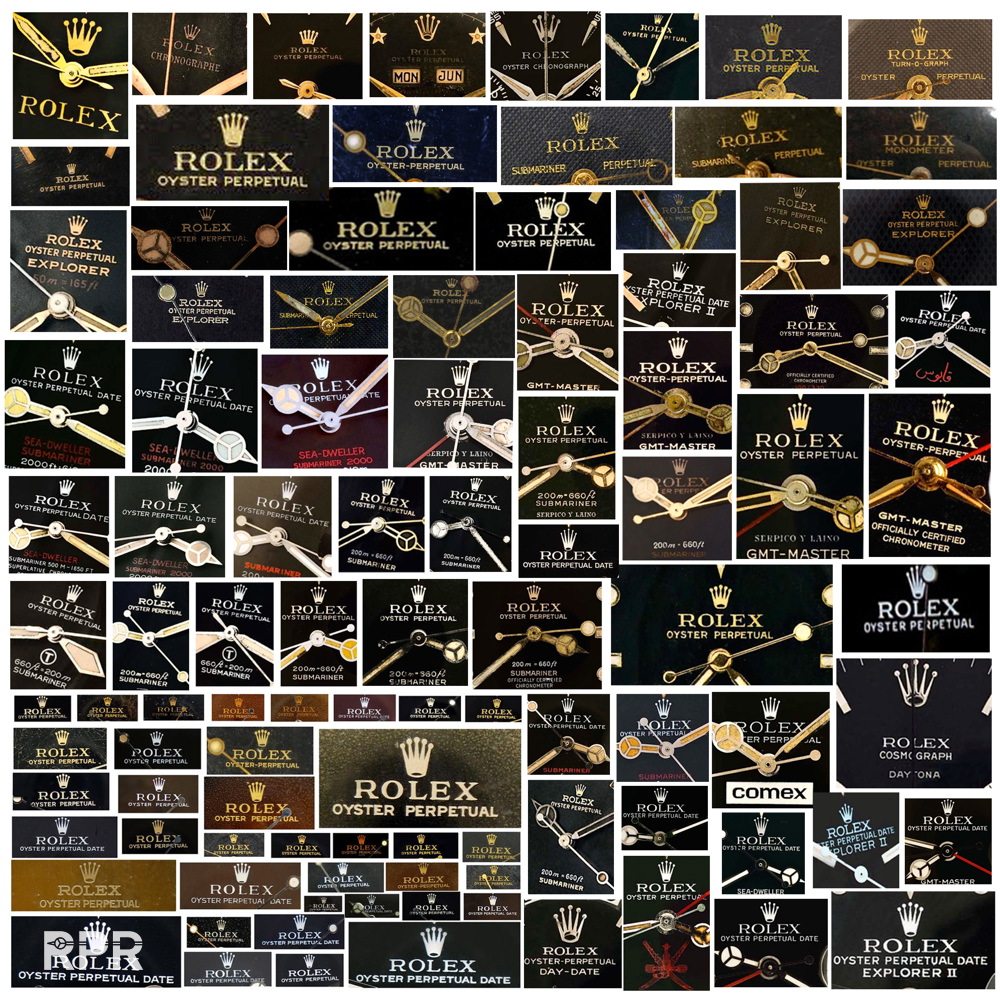
What to look for in a dial?
To try and help you get a grip on the sheer amount of dial variations out there and be able to distinguish original from tampered, you will find the most important features in separate paragraphs. Of course, as stated before, the most important aspect to look for when eying a vintage watch, is the matching all over patina. That is your first hint if something has been done to the watch to cover up its authenticity and originality.
Luminous
One of the first things you need to check on a vintage Rolex is the luminous, naturally provided it’s a luminous dial watch. This can tell you quite a bit on the history of the watch, including if it has been serviced. Rolex used several materials of luminous on hands, dial and bezel over the years and due to the fact that luminous would deteriorate over time, all parts containing luminous would be replaced during service. Not particularly desirable for vintage collectors, so having the luminous match the reference and production era is crucial when looking for a collectable vintage Rolex.
This “Stelline” Ref 6062 dial is having all new luminous added on the index and also on the hands…
Here’s an chronological overview of the luminous used by Rolex over the years.
| < 1953 | Early days of Radium luminous on pocket watches, early Oyster cases, and Bubblebacks.
Radium was radioactive but little was known about its danger. Radium had self-luminous properties but deterioration happened quickly due to its radioactive substances. |
| 1953 – 1956 | Introduction of Submariner Turn-o-Graph, Explorer and GMT Master as part of the tool watch concept, all with Radium luminous |
| 1957 – 1960 | Luminous with lower radiation. Dial printing changed from one to two coloured print with enhancement of the lacquer to a more glossy finish |
| 1960 – 1963 | Pre-transitional period, adding an exclamation mark to the dial and further radiation lowering due to international regulations. |
| 1963 – 1964 | Transitional underline with Rolex switching from Radium to the less radioactive Tritium, that was laminated on the ‘Swiss’ signed dials |
| 1964 – 1967 | New generation Tritium luminous on glossy dials. Signing ‘Swiss’’ changed to ‘Swiss – T<25’ & ‘T-Swiss-T’ |
| 1967 – 1983 | Introduction matte dial with Tritium luminous with various referring luminous signings like ‘T-Swiss-T<25’ or σ T-Swiss-T σ |
| 1983 – 1997 | Final period of Tritium luminous with return of the glossy dial and the luminous added to white golden frame |
| 1998 – 2000 | Switch to Luminova luminous, a new glow-in-the-dark pigment invented by Japanese Nemoto & Co Ltd and granted US patent in 1995. From 1998 onwards, Nemoto supplied the Swiss watch industry with Luminova |
| 2000 – 2008 | Super-Luminova, a slightly improved version of Luminova. Lasts the lifetime of a watch and is used by almost all major watch brands |
| 2008 – … | Introduced first on the SeaDweller, the Rolex patented Cromalight glows blue light and shines much longer in the dark than Super-Luminova. It is now the standard luminous on all new Rolex models. |
Radioactivity
As you can see, the earlier models all have a luminous made of Radium. Little was known about radioactivity in those days and workers applying the material suffered devastating consequences. The best known example are the Radium Girls. These were female factory workers who painted Radium on watch dials at the US Radium factory. Sadly, they were kept in the dark about the danger of working with Radium. The Radium Girls case caught a lot of media attention in the US and triggered the right for workers to sue their company for labour abuse.
Radium continued to be used as part of self-luminescent paint in the US into the 1960s, albeit radioactivity levels in watches seem to lower gradually towards the end. In the meantime the US military replaced Radium with Strontium 90, a by-product from a deliberately produced nuclear reaction and therefore radioactive as well.
Panic broke at Rolex in 1959, when the Atomic Energy Commission got involved and questioned the GMT Master 6542, claiming too much Strontium 90 in the Bakelite bezel. Rolex had to recall all 605 GMT Masters to replace the bezel and quickly started damage control campaigns to save their impeccable image.
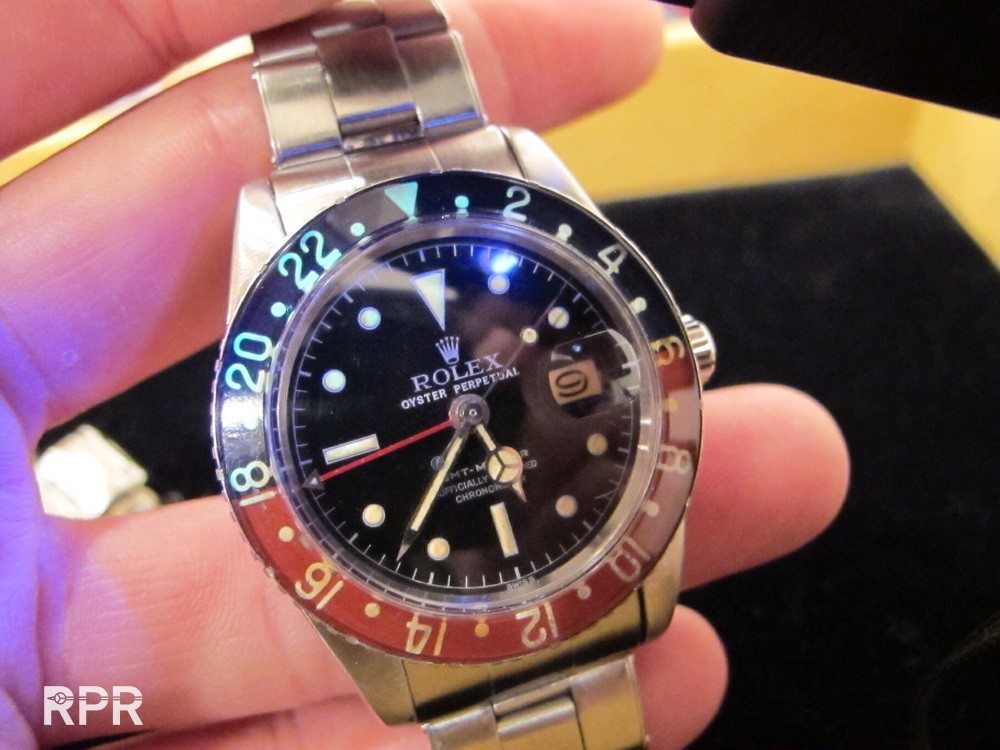
On top the ad that asks GMT owners to send their watches back to Rolex U.S. and below a receipt of testing the bezel accordantly.
GMT Ref 6542 radium bakelite high Sv readings on a geiger meter….
But the warning apparently came too late for some owners, like naval lieutenant commander Willard Mound, who brought Rolex to court in a five Million US Dollar suit in August 1961. He claimed he, his wife and his five children all suffered physical damage from the radioactive Strontium that had leaked out of the GMT Master he bought in Hong Kong in 1958.
This scare of radioactive watches made Tritium the successor of Strontium as luminous material. According to RC Tritec, supplier of Radium and Tritium to the Swiss watch industry, the switch from Radium to Tritium was in 1962. Rolex replaced Tritium by Luminova from 1998 onwards.
Health note:
Radiation intensity diminishes with time and often the term half-life is used in this context. Half-life is the time after which the radioactive intensity is reduced by half. For Tritium this is 12 years, for Radium it is 1600 years! Even though the original luminous might not glow anymore in the dark, this does not mean there’s no radium radiation. The radium has ‘eaten’ all the zinc sulphide, responsible for the glow when reacting with radium. Therefore, radium watches could still be extremely radioactive but if not inhaled or for some reason swallowed when breaking the watch, it should not be too harmful if not worn regularly.
Radiation detector/Geiger
You might wonder at this point why this elaborate introduction of chemicals. It is interesting stuff if you consider that if the original luminous parts of pre 1960s models are still present on a watch, you can measure it with a radiation detector or Geiger counter. The activity might vary, depending on the size of the hands and the dial as well as the radioactive concentration in the paint. But, nonetheless, it can be a valuable measurement in determining the originality of the luminous and subsequently the complete watch.
Due to international regulations, the change from radium to tritium for luminous watches demanded radioactive emission of less than 25 mCi (the abbreviation for millicurie, a unit of measuring radioactivity). This change is also visible above 1800 on the dial.
Dials with only ‘Swiss’ print contained radium luminous and could have more than 25 mCi emission.
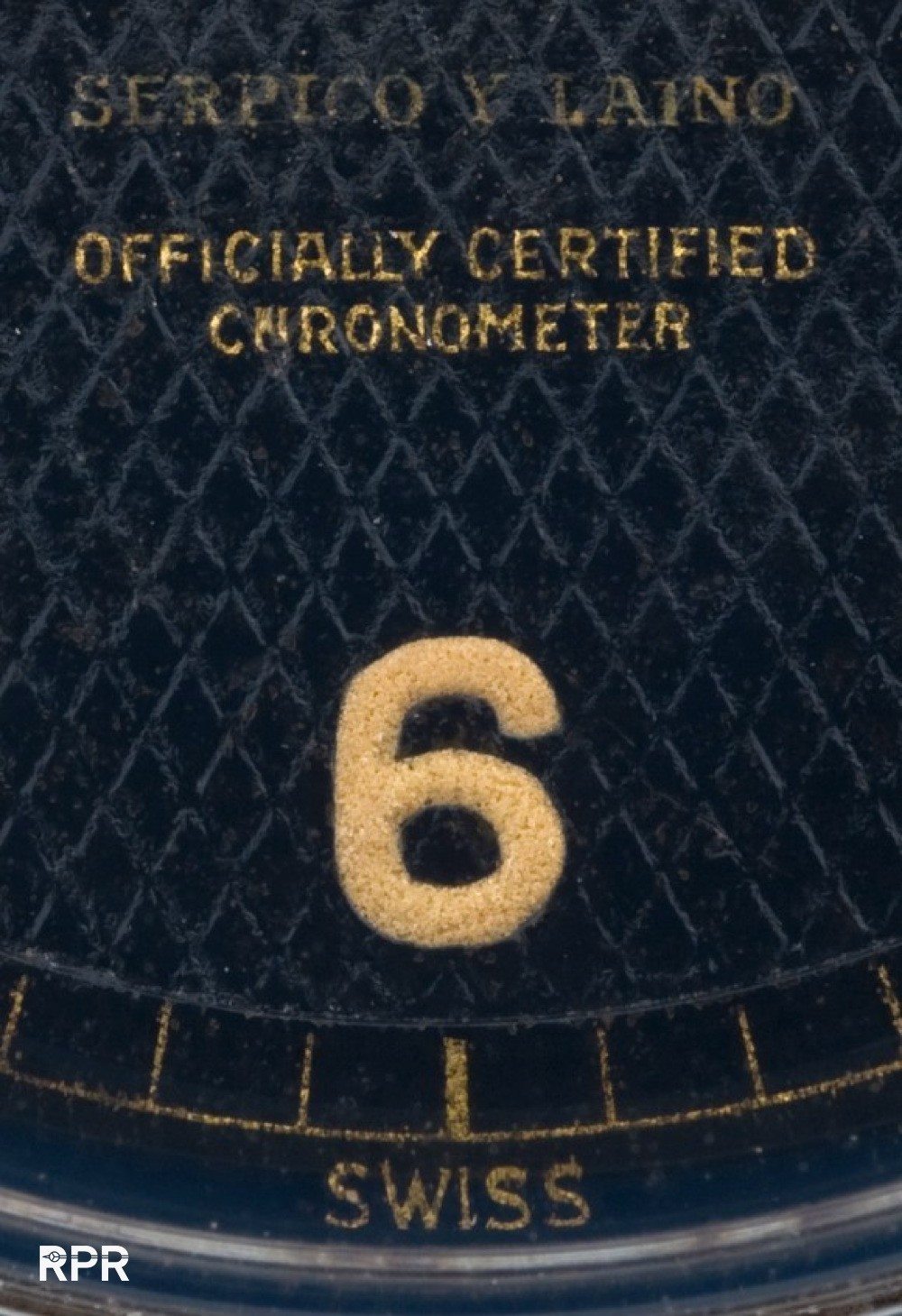
Above and below “Swiss” only signing on the outside of the minute track….
These dials are quite rare because they were never serviced. Any watch containing radium that was handed in for service would always be returned with a new service dial without radium. Below you see a normal radium swiss dial on a rare Ref 6200 which got a “T” added telling us the luminous is tritium…
Rolex worked closely with the Swiss firm Merz + Benteli in Bienne, as key supplier of luminescent material for their watches in those hectic days. The major blow of the GMT call back in the US and the tightened regulations with regards to use of radioactive luminous, Rolex already adapted to the Atomic Energy Commission (ACE) radiation regulations as of 1960. As a transitional measurement until 1963, I strongly believe Rolex added a luminous dot under the 6 marker. This became known as exclamation mark, and was put on dials with ‘Swiss’ print, distinguishing the old stock dials with newly adjusted lower radium radiation from the already issued dials with higher radiation. Was the batch with exclamation mark signing meant for the US market? It will probably stay a mystery as to why exactly an exclamation mark suddenly appeared for a brief period on the dial. There are also 1962 4-line Submariners without an exclamation mark and you will probably only know for sure, if you use a proper Geiger and investigate all watches including original hands and glass. I like to think the exclamation mark was the forerunner for the dials containing an underline, marking the transition from Radium to tritium.
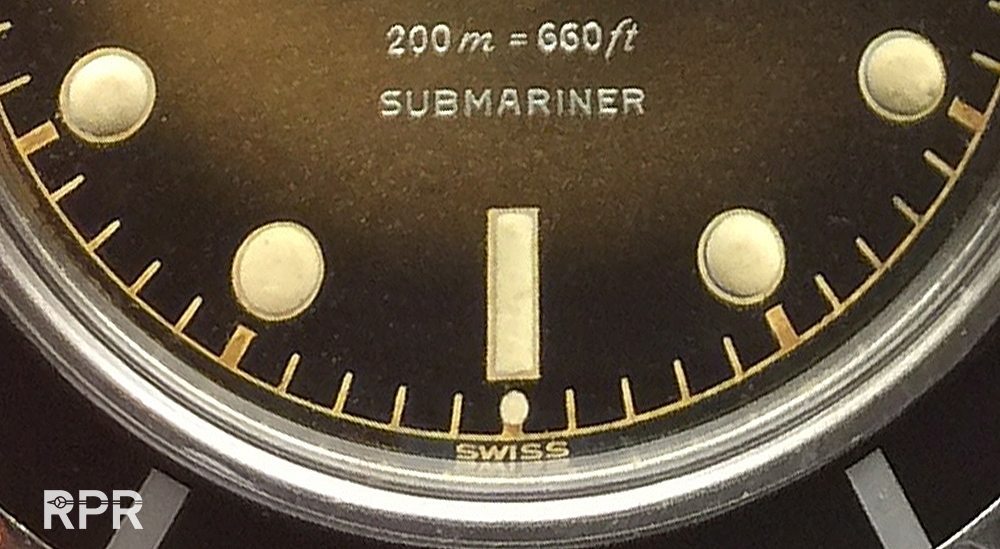
Dial supplier Singer was not willing to discard old dials and Rolex, infamous for its economical reputation, agreed to use the old stock first. It is difficult to pinpoint the exact period but In the brief timeframe from 1963-1964, Rolex added a small hashmark, better known as underline as a transitional marker, with tritium laminated on dials with ‘Swiss’ print. This underline was usually placed at 18h00, but there are also examples with the underline beneath the logo, a sort of ‘upper underline’. Perhaps the print became too crowded near 18h00, hence the small line near the top of the dial. The white coloured underline was added on top of the final lacquer layer afterwards. Typically, only the early models have a dial with underline. I have measured many dials all over the world with an exclamation mark using a Geiger meter and they all displayed a lower dose of radiation than one would expect with radium.
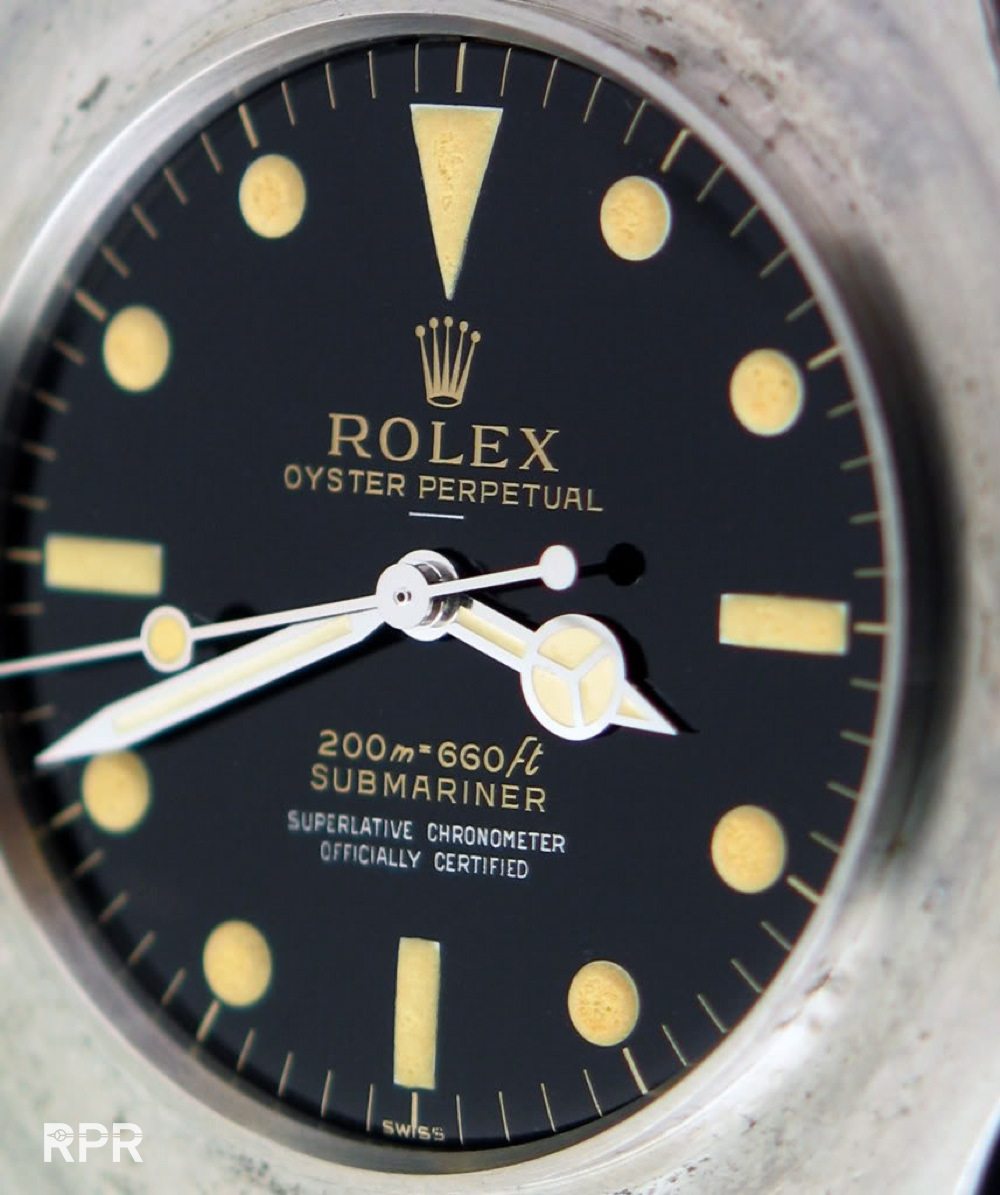
Another transitional underline, where the underline is pushing the SCOC text more downwards. Note the white swiss added on top of the minuet track at 6 o’clock…
2 x rare underline dials. One on the left is a Ref 6538 Big Crown and the right a Ref 6234…. 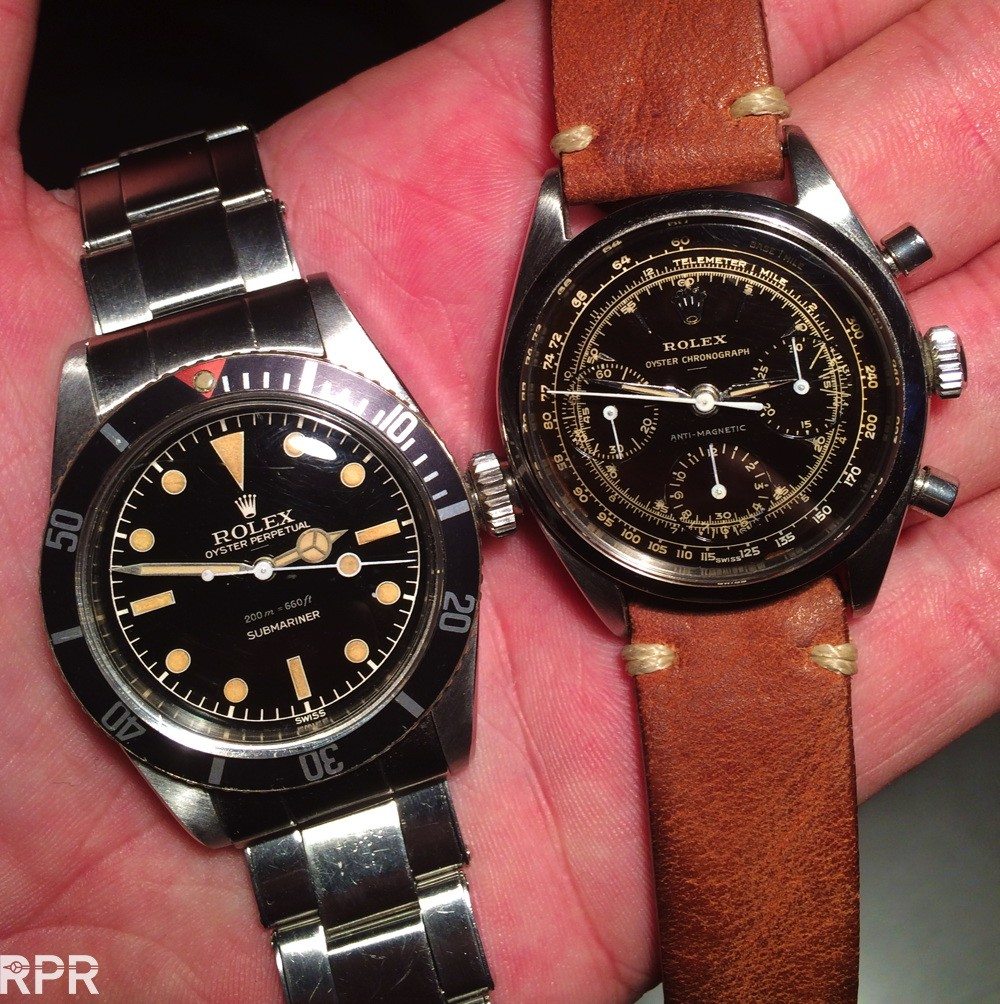
The material and finish of underline dials differs from the dials with an exclamation mark. The latter has a neat print, great finish and proper cappuccino luminous. The underline dials often look like acne, ugly finish with lesser quality luminous with a greenish hue.
It is very hard to find a great underline dial, as not many watches were issued in this configuration. These models are much sought-after due to the unusual print, even though it is often not of the highest quality.
Swiss
As I have mentioned before, due to stricter regulations on radioactivity, Rolex made adjustments to the dial reflecting the decrease in Radium and usage of Tritium instead as luminous material. First an exclamation mark, later followed by an underline on the dial marked the transitional period of radioactive dial components. All these dials carried the word Swiss printed at 18h00.
Swiss = Radium luminous
Swiss + exclamation mark = lower Radium luminous
Swiss + underline = Tritium luminous
During this brief transitional period, roughly between 1960-1964, dials carried different prints of the word Swiss, both in location as well as colour of the print. In the beginning with golden Swiss print, later followed by a white Swiss print.
Then there is also the double Swiss print. As with the underline characteristic, this extremely rare phenomenon can only be seen on early models. The Swiss print has been added twice to the dial, one barely visible at the bottom of the dial in silver and the superjacent legible one in white. Certainly an interesting period, as these dials are quite rare to find.
Above the ‘golden’ SWISS added an top of the already printed minute track. Below a white SWISS added alter.
The first time I encountered an example of the white Swiss print was in Mondani’s book on the Submariner model. It was nowhere mentioned in the text, but it carried a picture of a Ref 5513 with Serpico y Laino print and the white Swiss print at 18h00. To make it more confusing, at the time I also owned a Ref 5513 with underline, carrying a gilt Swiss print on top of the minute print, in below picture on the left…
The unique ‘spidering’ the lacquered surface has one each gilt Rolex dial…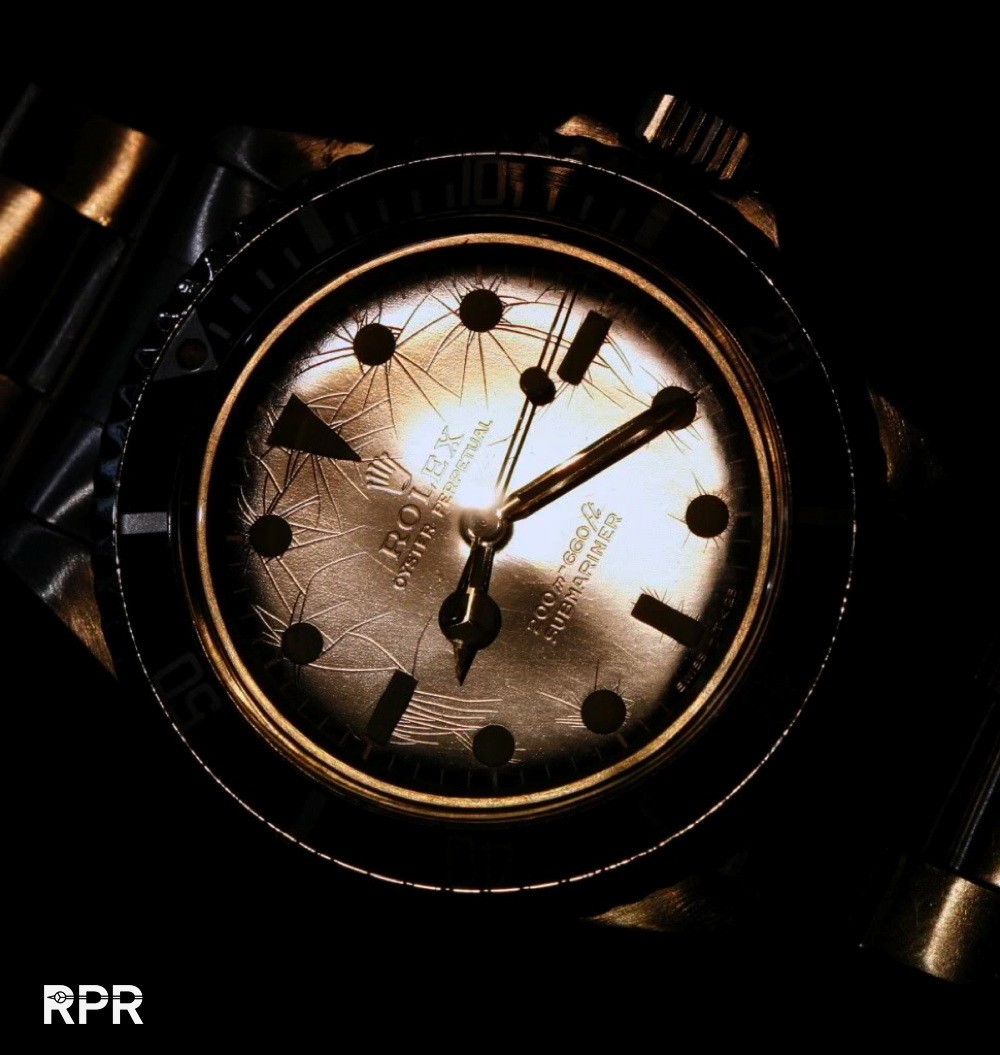 By the time Rolex introduced the glossy dial in 1964, the switch from radium to tritium had been completed. To highlight the change, the ‘Swiss’ print was replaced by ‘Swiss T-25’ to point that radiation was less than 25 millicurie (mCi). At the same time, the addition ‘T Swiss T’ was printed on dials, signifying radioactivity of less than 7,5 mCi.
By the time Rolex introduced the glossy dial in 1964, the switch from radium to tritium had been completed. To highlight the change, the ‘Swiss’ print was replaced by ‘Swiss T-25’ to point that radiation was less than 25 millicurie (mCi). At the same time, the addition ‘T Swiss T’ was printed on dials, signifying radioactivity of less than 7,5 mCi.
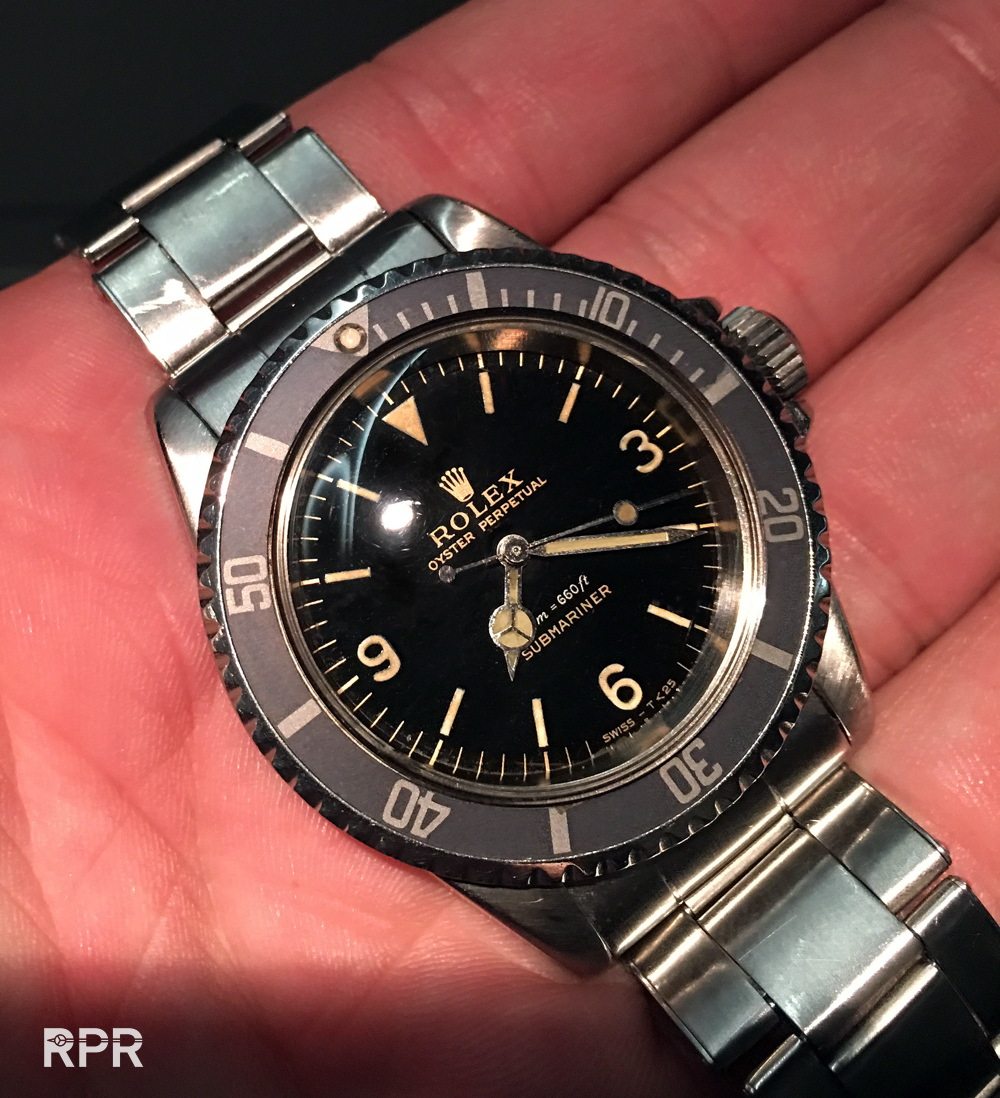
Here’s where your Geiger counter really comes in handy. A regular commercial model costs € 150-200 and is an indispensable tool if you are interested in pre-1964 models. Use a Geiger to measure and interpret radioactive radium or tritium emission on vintage Rolex watches with luminous dials. This will tell you what happened to the watch if you compare it to its overall condition.
To illustrate, here are an example. This Big Crown is having a 4.58 mSv radiation. Almost 20 times higher then tritium radiation. 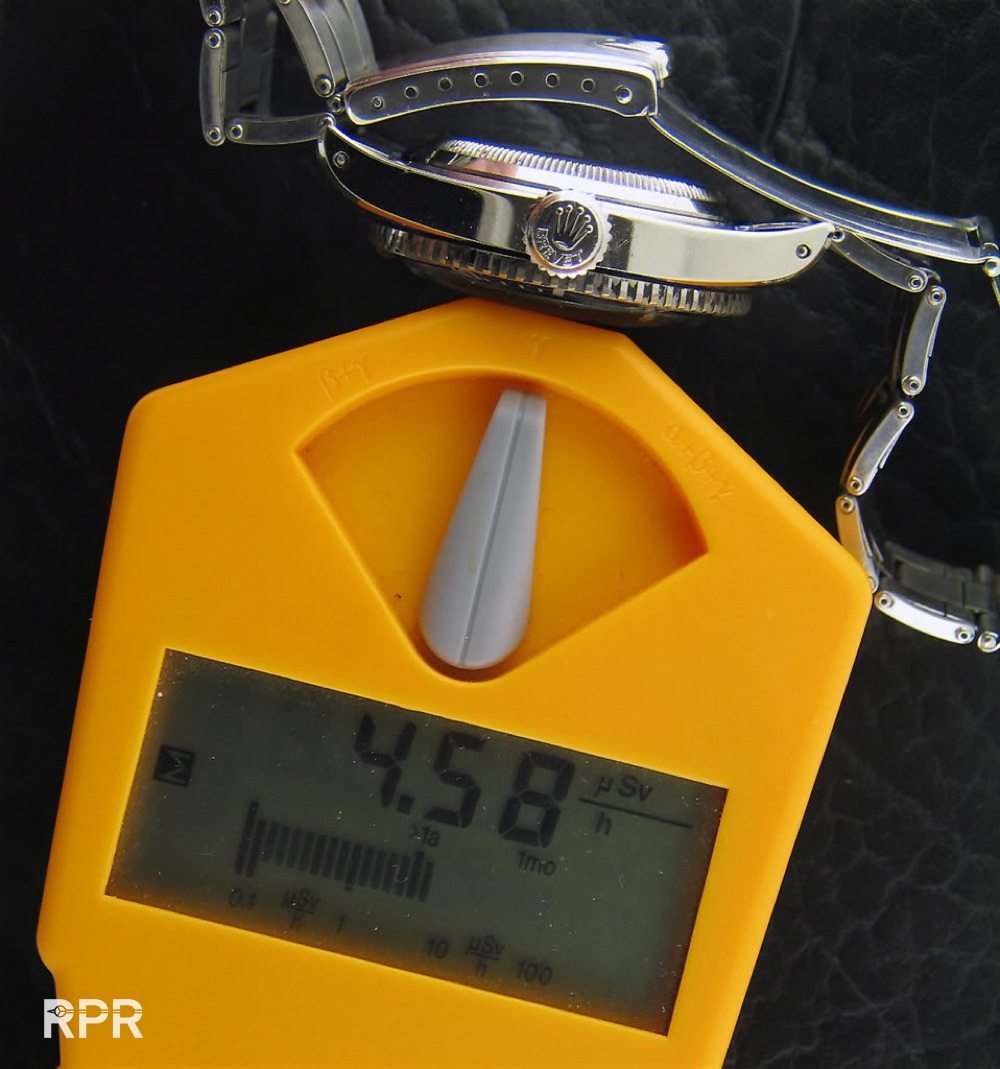
Below you see the swiss radium Stelline is hardly having any radiation… For a swiss dialed Rolex that means there’s no radium luminous left on the dial as otherwise the geiger would go mad and show a high result, like above of almost 5 MsV and not 0.20MsV, which is even less then tritium 0.25 MsV that became standard from 1964 onwards.
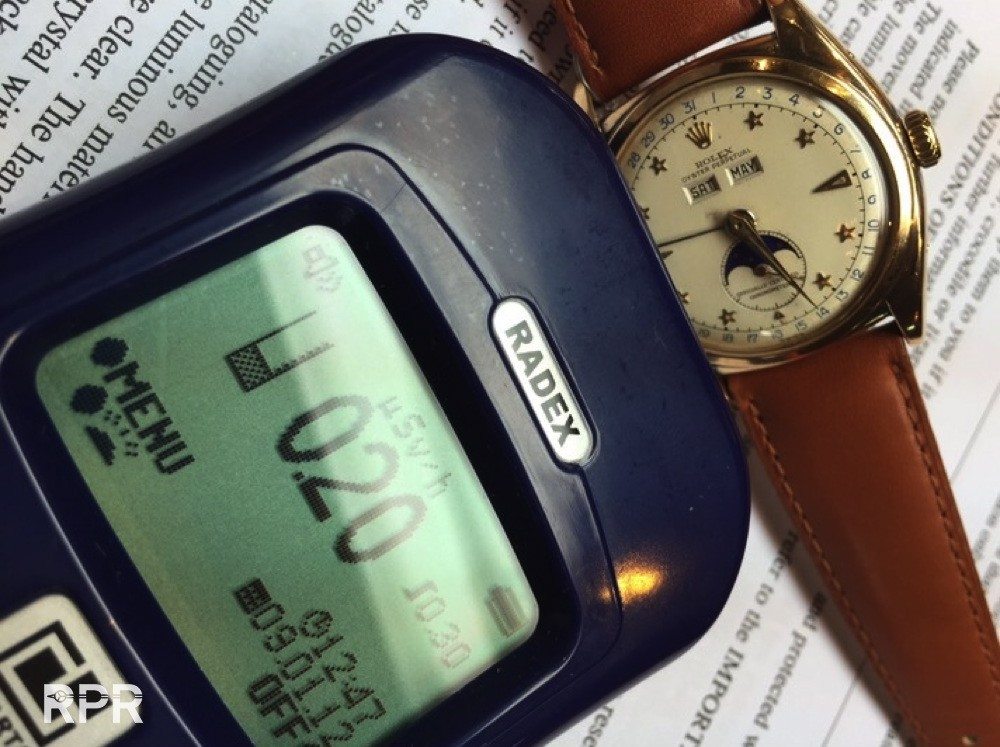
Yet another missing radium on the dial. Although the lume dots seems to look nice on this white honeycomb Tog ref 6202 dial, to was not born their when it left the Rolex factory in 1953. Instead an ‘dial restorer’ took off the radium lume and added new, non radioactive, luminous dots…
Note on measuring:
A Geiger counter measures in micro sievert (μSv), the dose of radiation absorbed by your body per hour. This is designed to be a good understanding of the health risks of being exposed to radiation – and what a “healthy” dose might be. The standard measurement is in sievert – 1 sievert is about 5.5% chance of developing cancer as a result of the exposure, and continuous exposure to this dose is likely to lead to radiation poisoning and death. One Sievert is the maximum allowed radiation exposure for NASA astronauts over their career. In conversion, one micro sievert (μSv) equals 0.000001 sievert (Sv). To put things in perspective, the global average background radiation humans are exposed to is 0.27 μSv, a banana’s radiation is 0.098 μSv.
Sievert is not the same as millicurie (mCi), the measurement of activity. Activity is how radioactive something is – how much it is decaying in a given period of time – it is measured nowadays in Becquereles (Bq).
UV lamp
Another handy tool for measuring radium and tritium is an UV lamp. The ultraviolet radiation causes the radium or tritium to glow. The impact of the ultraviolet lamp will let the glow continue to shine for several minutes. Below the UV light is making a reaction with the already greenish 6 o’clock marker we see on early sports Rolex..
Yet another example from lighting up original luminous. This time it’s tritium an a 1972 Rolex Daytona Oyster Paul Newman..

And here an example that shows you damaged luminous dots and non luminous hands…
Matching luminous
As I mentioned at the beginning of this chapter, what were are looking for is matching luminous of dial and hands. They both should be in the same colour, fluffy and without damage. Collectors always try to find the impossible, here are some examples of Daytona’s dials still having all their little luminous dots next the markers.
Perfectly in balance..
The puffy luminous is still intact on this Milgauss Ref 1019…
Even a hardcore used Military Rolex can have matching luminous. The big advantage of collecting vintage Rolex is the fact that the cases where waterproof oysters, hardly any moisture could enter the inside…
A tool watch pur sang is the Rolex Comex which has been heavily used by deep sea divers. Still great examples have perfect lume!
Fresh barn find as people like to call an all original untouched discovery..
Now lets have a better look. For this I opened the fron by removing the bezel and the crystal and there it is, the naked dial…
Up close and naked, a glossy gilt Rolex small crown Submariner dial with radium lume. Note the greenish 6 o’clock marker. 
Next is a naked Paul Newman MK1 dial in perfect all over matching condition…
The next Paul Newman looks nice and certainly is. Nevertheless the value is lower because all lume dots have been renewed during a earlier service. The proportion of the dots are incorrect and sloppy..
Another feature worth checking is the correct colour of the luminous. On pre-1964 watches with radium the colour is more ‘cappuccino’, on watches with tritium the colour is lighter, more yellowish cream.
compared to original tritium luminous, which is much lighter then the previous radium luminous…
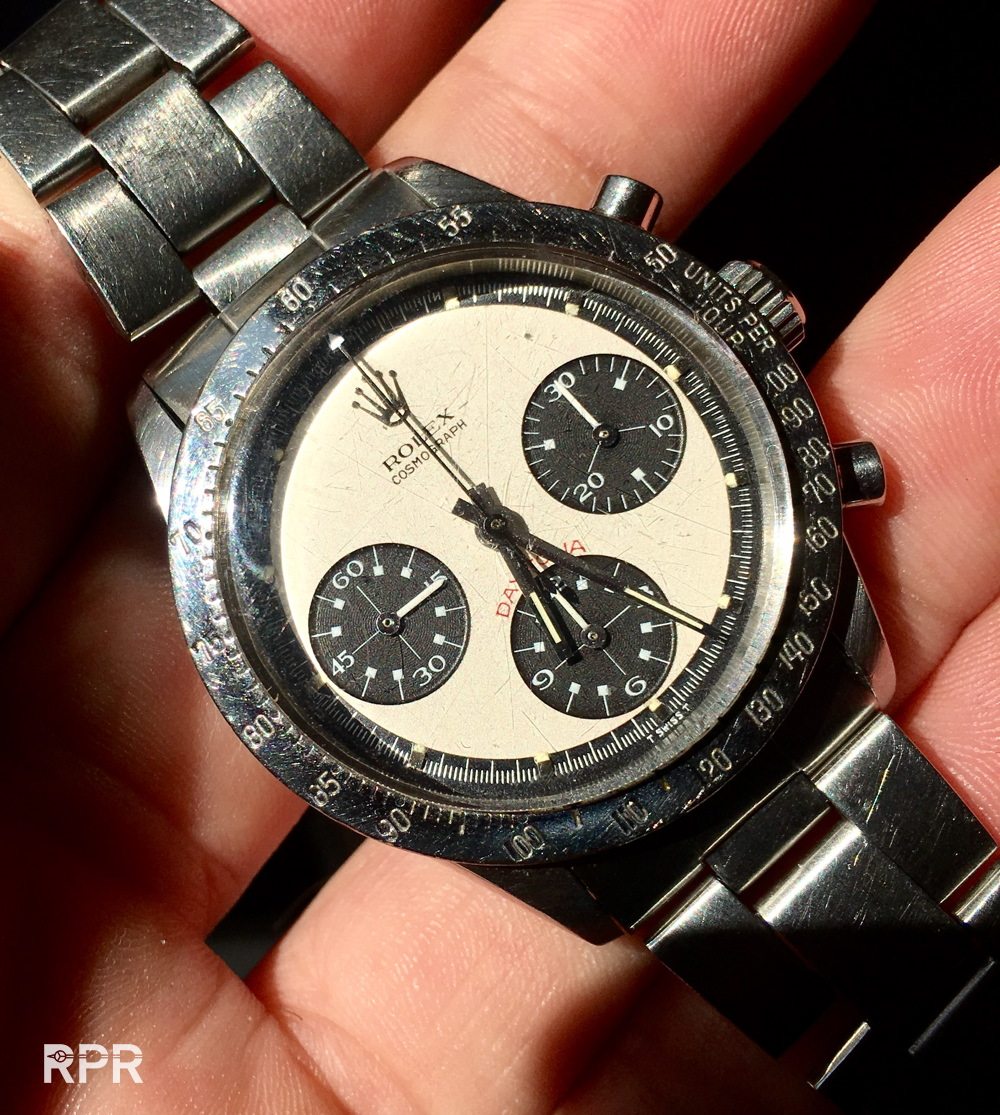
Over the years, the luminous on many watches has been replaced during service, due to various reasons. The watch was damaged by water, radium had ‘eaten’ the luminescent paint, destroying the glow in the dark feature or the glowing effect of the paint with tritium was gone as its activity halves after twelve years. Once new luminous was added, it becomes clear that the all over patina is not matching anymore. The luminous looks newer than the rest of the patina, the colour of the hands is different than the markers or the expected radiation is much less than expected. All signs that something happened to the watch.
Here are some examples of matching and non-matching luminous. Below clearly the hands don’t match the dial…
This rare Solo Daytona is not really having matching hands with the luminous on the dial. Probably changed during a service..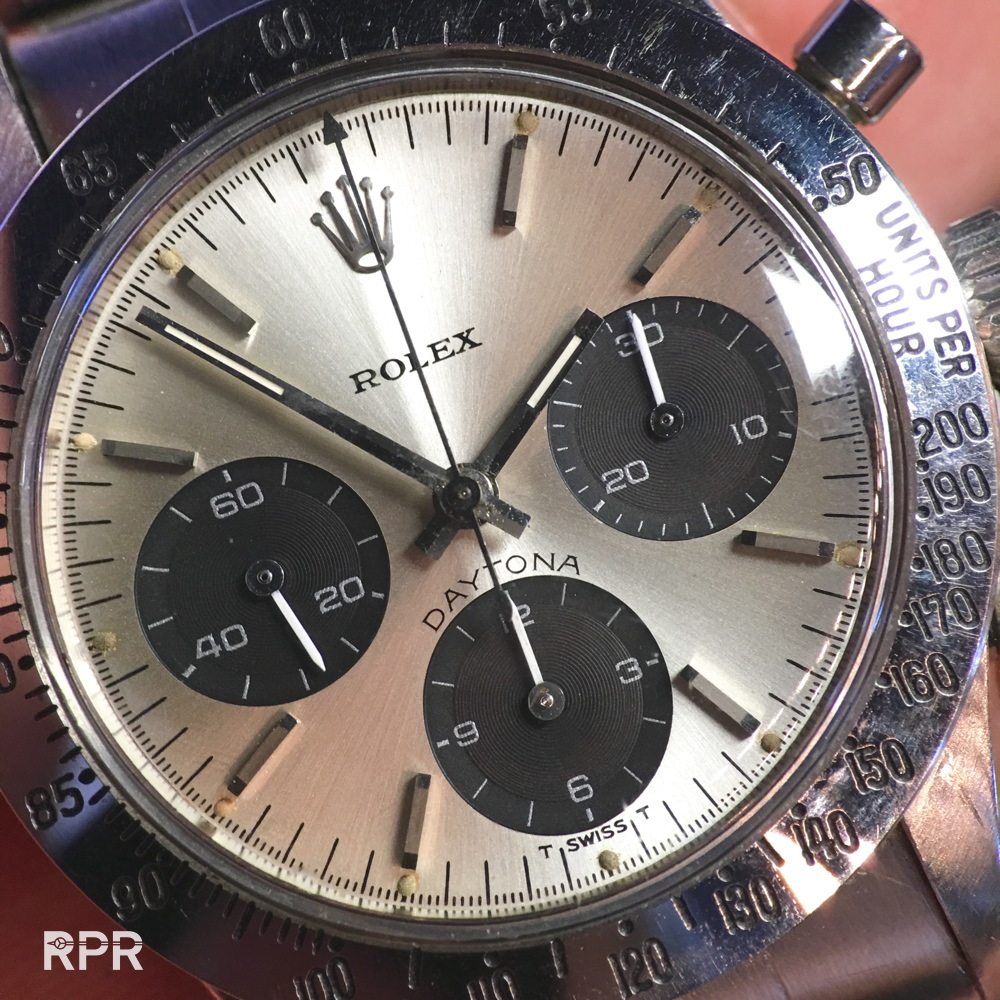
This barn find is having matching all over patina… besides the lume is the same, you see the watch has equally used parts.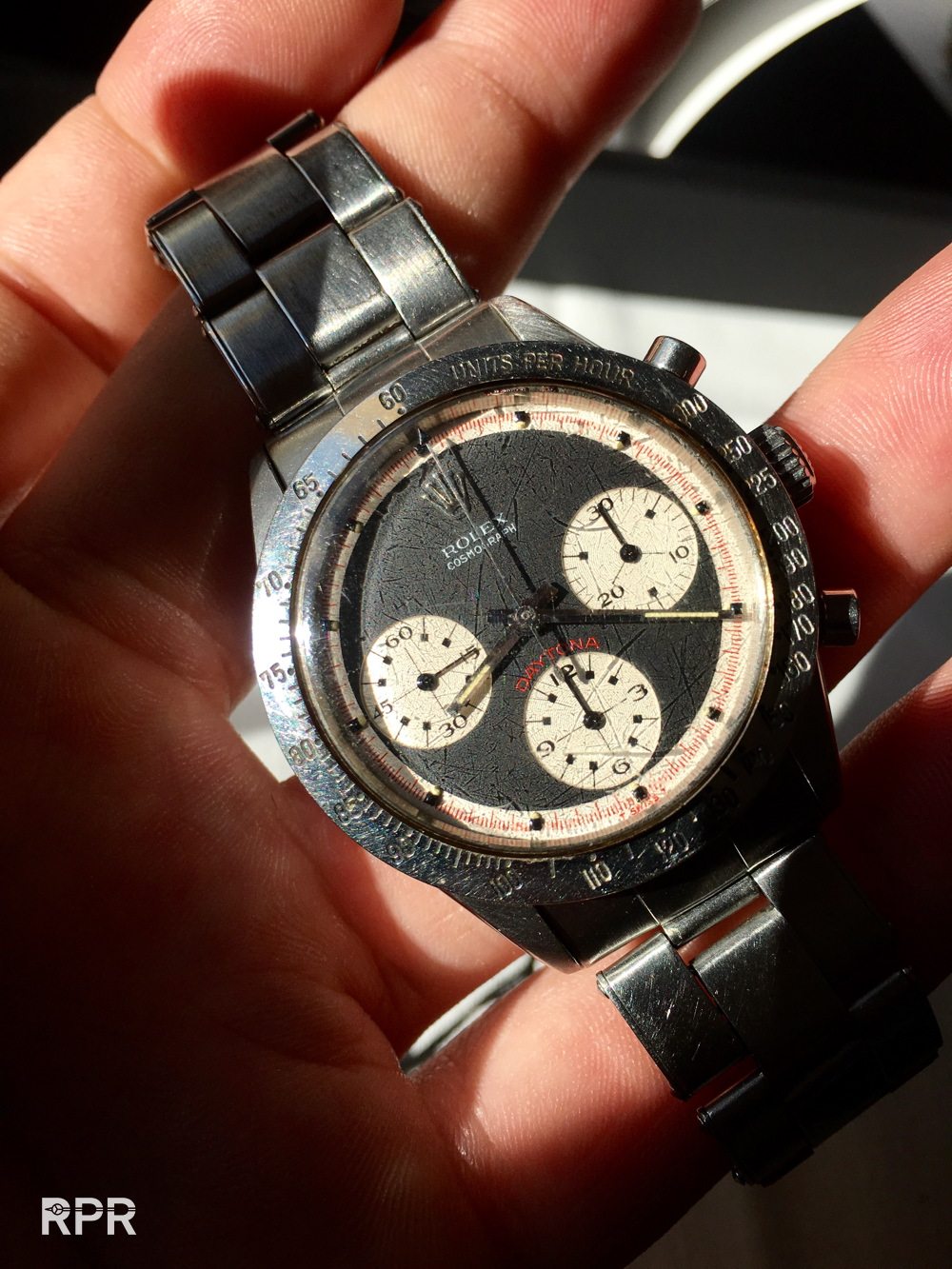
The hands have a darker tone then the dial and look to clean… 
Condition Meter
Very important when looking at luminous: use a magnifier and zoom in. Although any Rolex was meant to be waterproof since the Oyster case, humidity can still enter a watch though damaged glass or winding crown, harming the front of the watch but also the movement. Therefore, besides serving as radiation source, luminous also acts as a sort of condition meter to gauge the possible damage through condensation that occurred inside a vintage Rolex.
The great picture Pucci Papaleo made from the totally destroyed Daytona dial made it look like another planet. Below the moisture has ‘eaten’ the edge of the dial and also left some serious holes through the paint and lacquer…
Water damage because of condensation in watches with radium will change the luminous colour greenish….
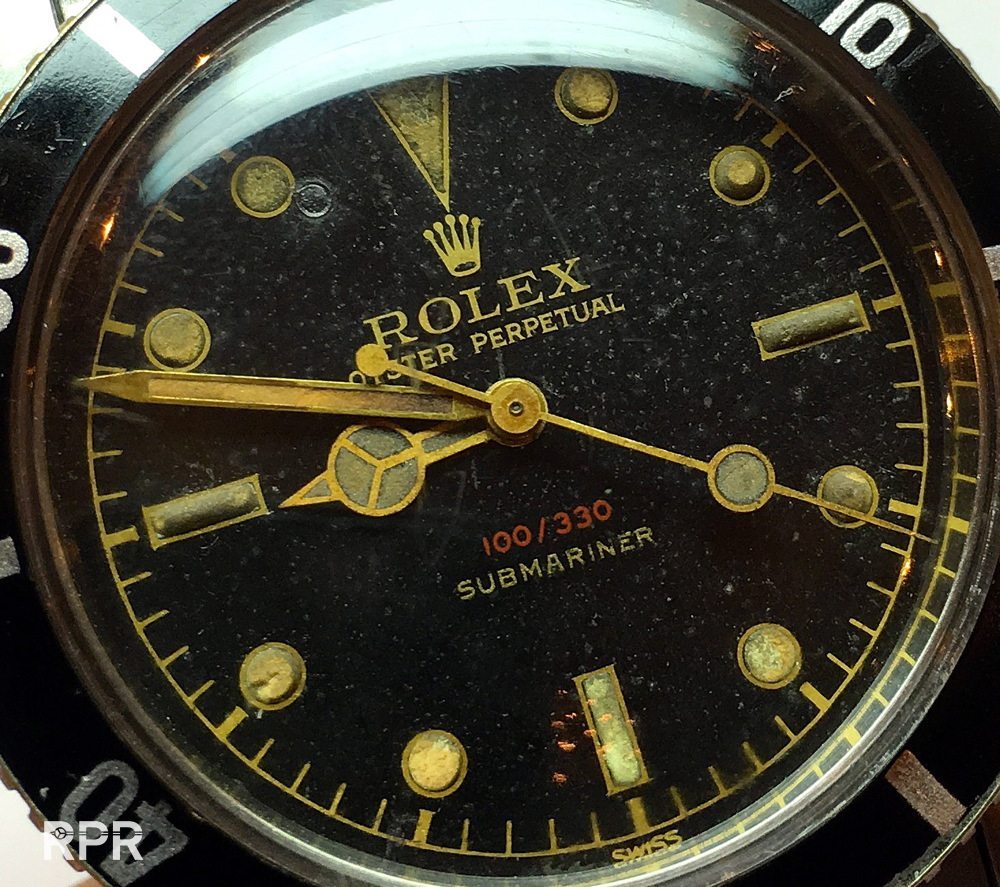
Precision movement, chronometer tested, waterproof and shielded against dust and a unique waterproof winding crown were the unique selling points during 1930s until 1950s, making models like the Daydate and Datejust extremely popular. From the 1950s onwards, Rolex had to come up with something new to raise turnover, instead of just focussing on technical improvements for the Daydate and Datejust. Rolex started creating watches for different purposes and audiences, marking the birth of the tool – sports watch concept. For the vast majority of Rolex collectors, this era is by far the most interesting with the introduction of the Turn-O-Graph, Explorer, Submariner and later on the legendary Big Crown.
One of the characteristics of these early sports watches is the one colour dial with a lacquer finish that lacks the shiny effect you see on later examples. Dust from luminous that was damaged by radium would leave small stains on the dial, especially around the markers with the radium paint. Here’s an example of such an early tainted Submariner ref. 6200. Note the transparent paste on the hands that was added to make the phosphorescent paint stick.
Besides the paste to make the luminous stick, Rolex added the phosphorescent paint on a white coloured surrounds. This was a meticulous job and so well done that you will never see paint outside the surrounds of the markers, if done by Rolex. A dial with the luminous larger than the surrounds it has been added to, is most likely a job done during service to replace the luminous. The Geiger counter cannot always provide 100% proof if a luminous has been replaced, because clever specialists use old radium to redo the luminous. Therefore, always take a very close look at how the luminous was added to the dial.
Above you see the lume has lost it’s volume. The top layer has been scratched off most probably because it was having some dark stains. Then the glossy dial surface was cleaned making the surface matt. Obviously the steel hands don’t match either. Below an all honest not so perfect early sports Rolex. This Ref 6538 is also like the double red GMT above from 1956. You see the aggressive radium stains left eating the previous glossy lacquer eating away. Nevertheless the lume dots are in tact and it’s still has it’s original patina.
Cracked dial
Later models were fitted with glossy dials. The patina of the dials provides an unique feature, that is not easy visible. You will have to tilt the watch so the dial catches light in a certain angle, before the crack become visible. What exactly causes these cracks is hard to tell. My guess is, these dials have been stored in a dry place for a long time and with usage the surface started cracking, resulting in this rather bizarre dial pattern.

Gilt
Gilt is gold. Any dial with gold lettering can be called a gilt dial. At least, that is the simple answer. As with most details when it comes to Rolex, there is some debate on what makes a dial true gilt. A gilt dial contains a galvanically applied layer which truly refines the dial. There is much behind the scenes chemistry going on, but what it comes down to is that a black layer is coated to the dial using a galvanic process. This coating covers everything, except the golden lettering which is printed in reverse under the coating to make it really stand out. A transparent varnish on top of the galvanic layer protects the dial against corrosion and aging and gives the dial the typical glossy finish. Any silver additions like underline or depth meters are printed on top of the varnish.
This rather complex and time consuming process of creating a dial makes a glossy black dial with gilt lettering the only true gilt dial. Therefore, a matte dial with gilt is just that, a matte dial with gilt.
From this 2D perspective the following dial looks to be perfect. Incredible rare but something is missing… The depth!
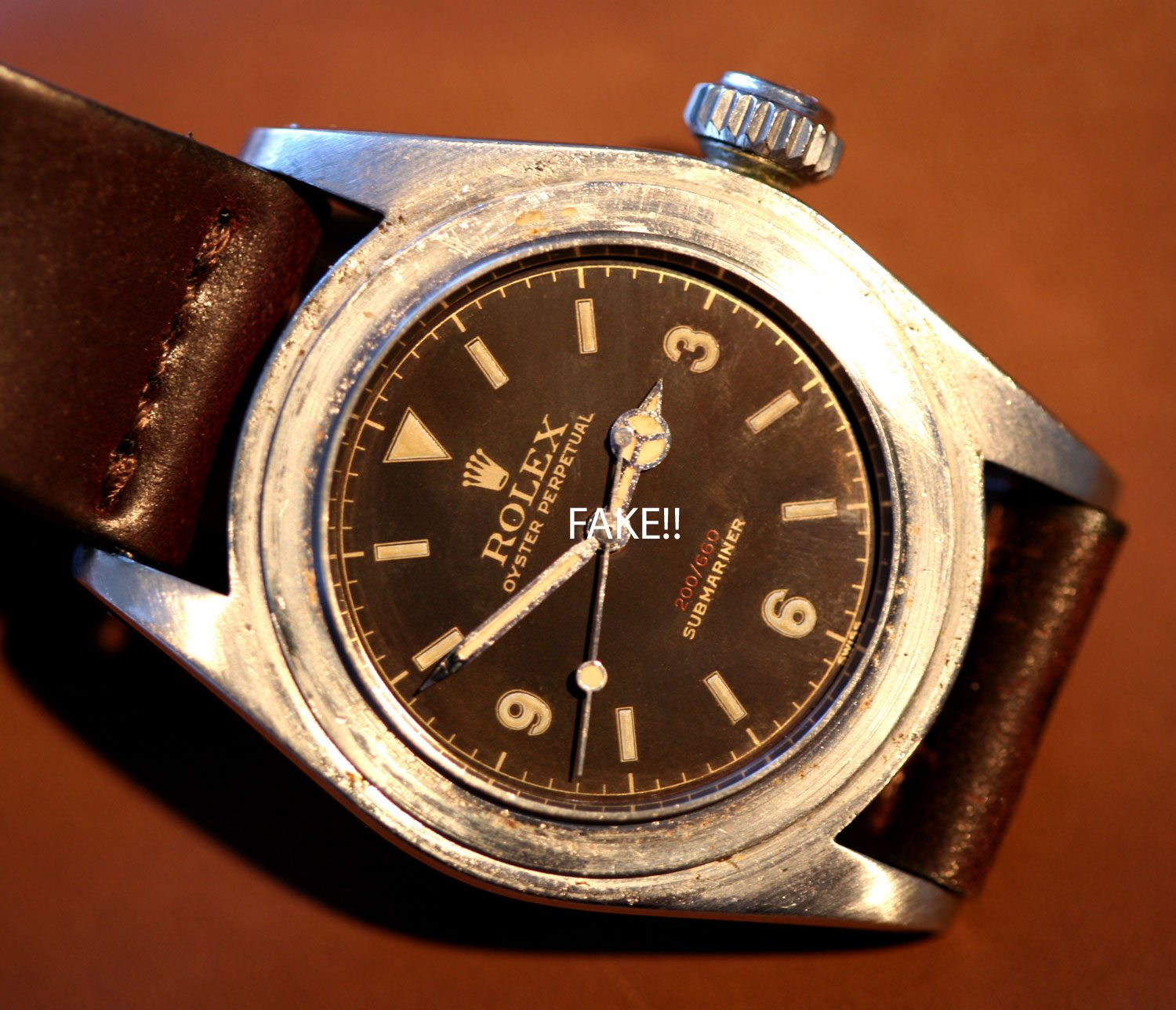
Galvanic dials show you a certain depth in the print, something these new fake dials don’t have. Besides that, everybody who has handled a gilt dial knows that the glossy lacquered surface is having some small spiders, which this dial is missing as well… 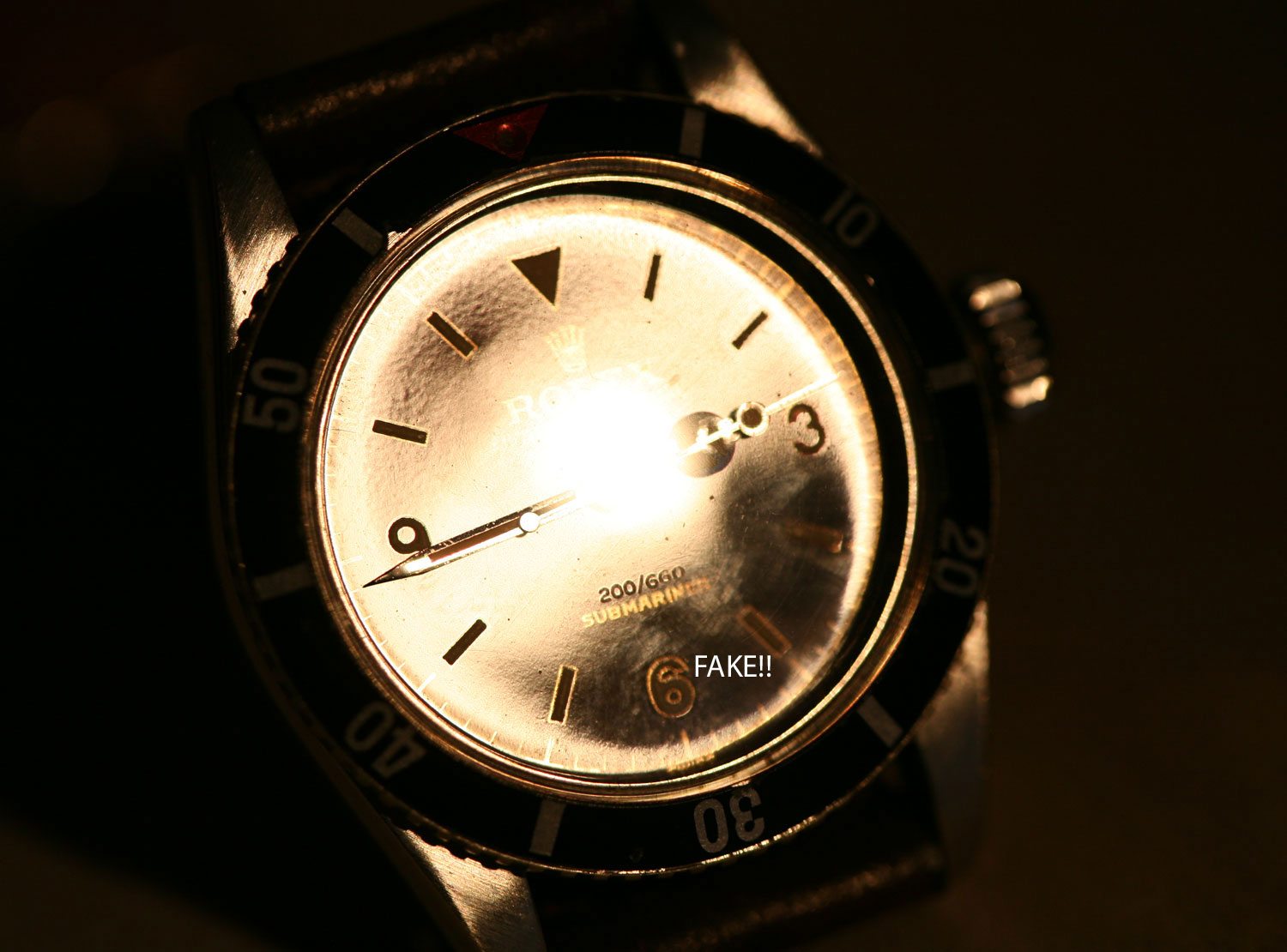
Note the little lines in the lacquer around the radium lume dots of an all original Rolex Big Crown…
Or the radium leaves some stains on the dial…
But the most important feature is the fact that gilt dials have been printed in phases. You see in below examples clearly that the common text: Submariner and 200M = 660 FT is printed below the finished lacquer, there where the additional chronometer SCOC text was printed on top of the finished dial surface. This depth is an important feature of the gilt dials.
From glossy to matte
Around 1964/1965, the looks of the dial changed drastically. Gold was no longer fashionable on dials and the shiny black dial with golden print and minute track disappeared slowly and by the end of 1967 no shiny dials were issued anymore for any model. The matte dial with white print was the new star and its design made the dial actually appear larger. Fashion, cheaper to produce because of higher volumes or was Rolex triggered by user feedback on legibility? Perhaps the supplier changed the dial because by legislation certain paint components were forbidden due to toxic substances, as ‘John Fatboy ’ stumbled upon through his extensive research. Probably, all of the above, but the fact is this shift in design marked one of the greatest periods in dial evolution.
In the bright sun you see the matt dial on the left with white print next to the glossy dial with gold print setting a new era.
Tropical
Any dial that is affected by fading colours is called tropical these days. It would be better to distinguish between true tropical dials and near tropical dials. What makes a dial truly tropical? First of all, it is a dial that has been well preserved inside the case, most likely an Oyster case. The presence of humidity inside the watch, combined with the presence of UV light and a certain storage temperature caused a chemical reaction of the paint underneath the varnish.
It does not happen to all watches under given circumstances. You don’t see tropical dials before 1953, followed by two periods in which tropical dials occurred: From 1958 – 1962
Yet another 1958 tropical Big Crown Submariner which has even become more brown then the above example…
Here we see a rare Military Ref 5510 tropical Big Crown with rarely seen 3-6-9 dial…
Above a 1958 tropical Big Crown Ref 5510 Military with fixed bars having perfect luminous, below a brown Ref 6200 Big Crown.
Below a 1962 tropical Ref 5512 Submariner with exclamation mark.

A 1964 underline swiss tropical Ref 6234 dial…

Gilt Submariner Ref 5513 from 1964 which is having an interesting discoloring…
End 1960s to beginning 1970s, here an MK2 tropical Sea Dweller Ref 1665 mk2 thin case…
Or a single red meter first that became tropical…
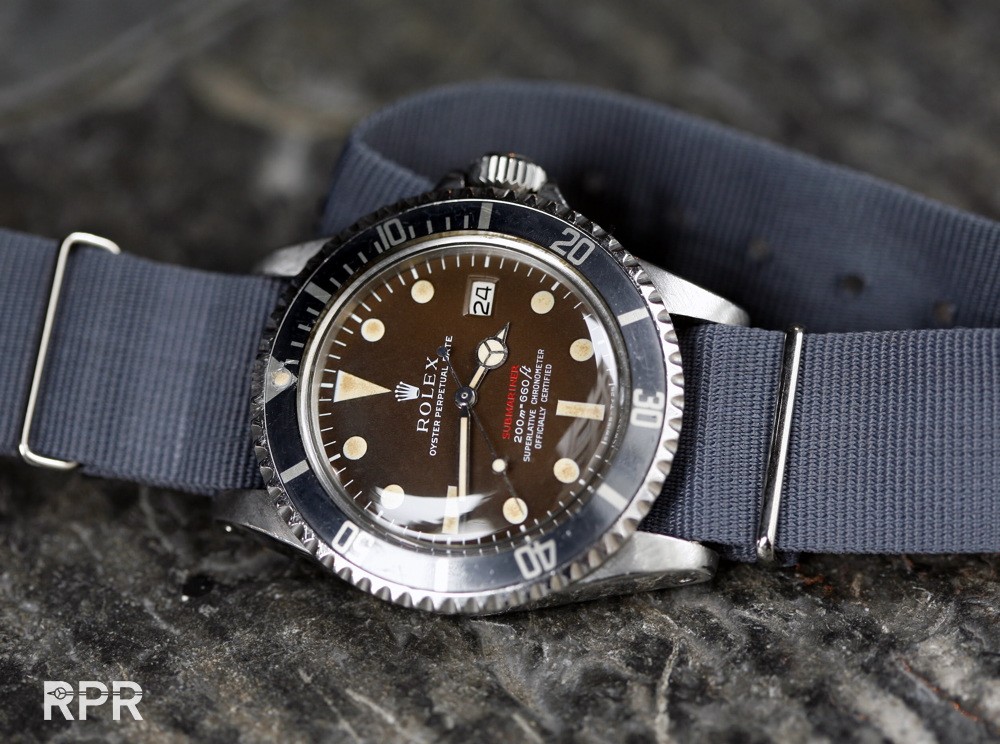
Up close of another 2.29x.xxx serial Red Sub that became tropical brown…
From the end of the 60-ies is this Ref 6263 with tropical brown sub dials…
A perfect example of a well conserved Paul Newman with brown sub-dials!..
With the shift from glossy to matte dials with different print, the tropical effect disappeared permanently. Only certain references with specific serial numbers can have a tropical dial. For example, Seadwellers with serial numbers 1,900,000-2,000,000 (1968/1969/1970), or Submariners, Explorers and GMT Master from the same period, all fitted with dials from the same supplier.
The next Oyster Paul Newman with light brown minute track achieved almost € 1 million during last Phillips Watch Sale… 
Another examples of an Oyster Paul Newman with brown minute track
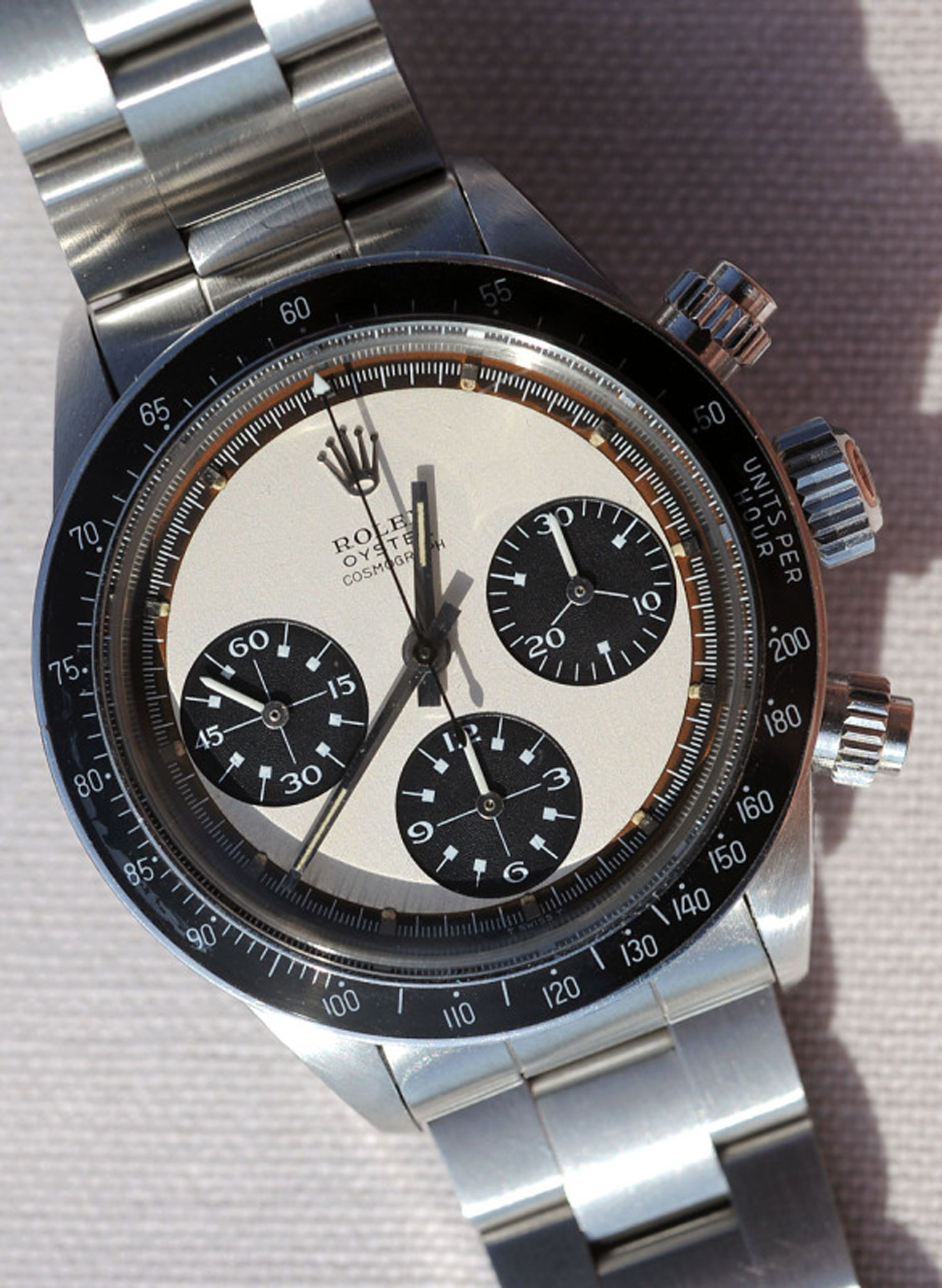
So far the most expensive tropical Rolex, the RCO with fetched more then 2 million during the same Phillips auction in Geneva.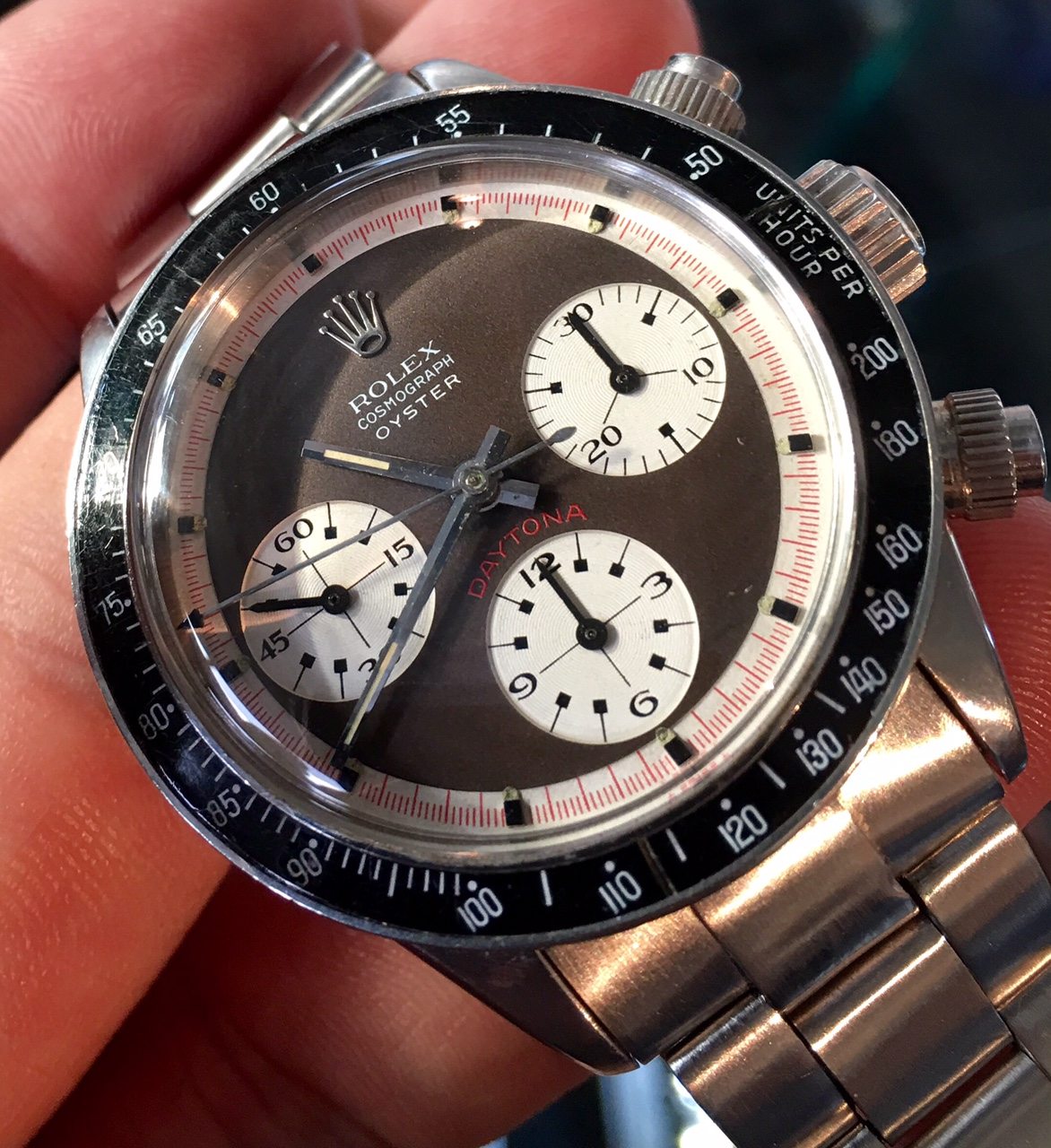
Clearly, the following tropical from 1958 below has been assembled. The hands do not match the dial, the hands should have been golden instead of steel being from 1958, minute hand second hand are too short. Case looks really polished. The color of the luminous doesn’t match at all. The dots are ‘scrubbed’ loosing their volume.
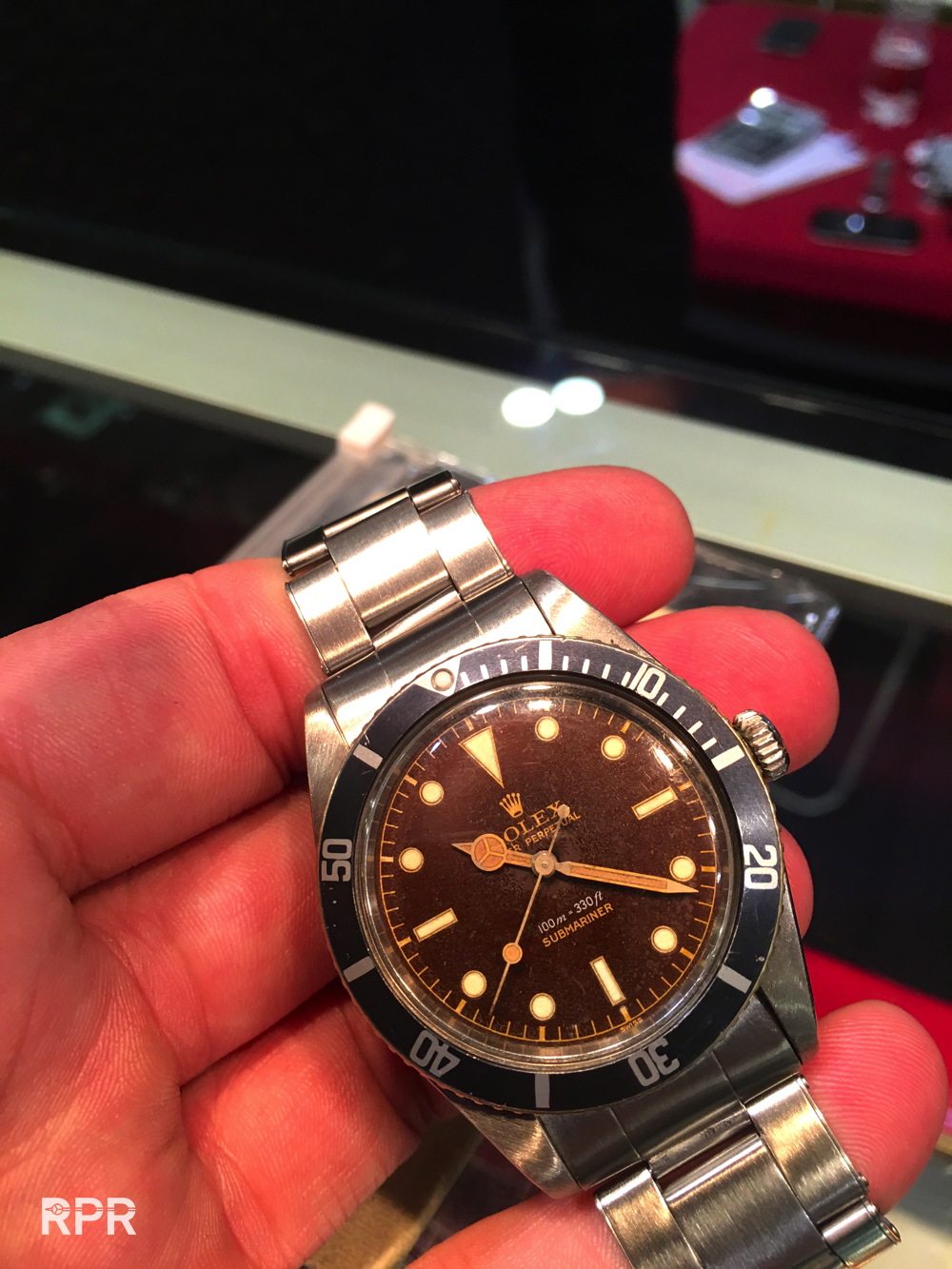
The following ‘tropical’ is honestly not a real tropical but more a damaged dial. Why? because all the luminous dots have been renewed. Besides that you clearly see the water stain on the dial. Often the market uses the word tropical wrongly. A correct tropical has perfect original lume dots and a dial that changed due to heavy UV light and long dark storage. The problem is if a dial has had a moisture problem and water condense entered the case in due time the dial changes color as well, often leaving stains as you see in below example. One needs to be very careful buying a tropical if the luminous is not original anymore. The luminous material is also called the “condition meter” or ” moisture meter” from what happened inside the case during its life.
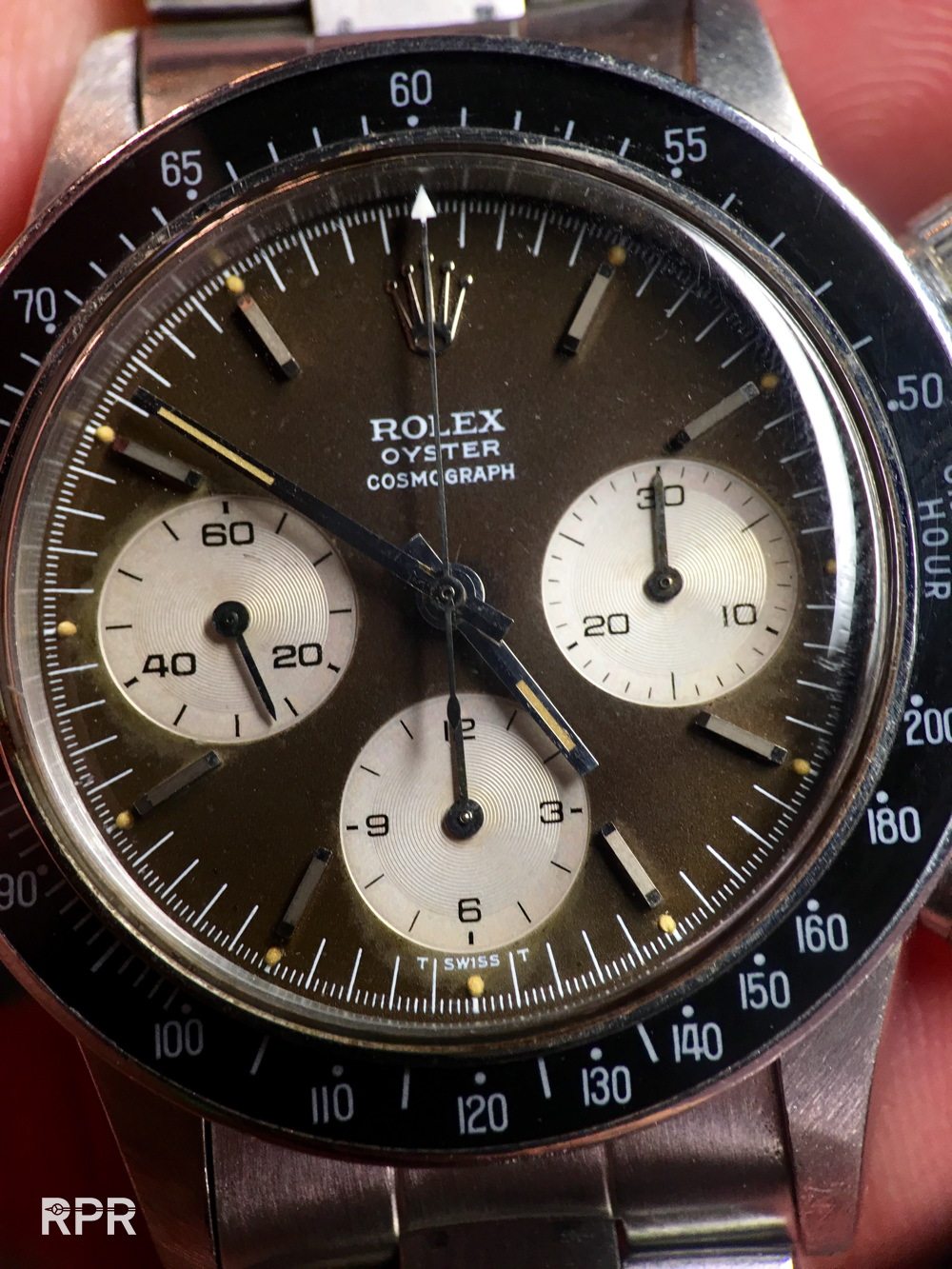
Conclusion: This watch has been prepared for auction to reach a high estimate, which didn’t work out as collectors are well aware what to look for before they spend big money on a tropical submariner.
Above you see a MK2, which often fade and become tropical brown, next to a updated later mk3, which never fade to brown. As always with collecting vintage Rolex, there are many exceptions. Find below a DRSD MK2 which stayed totally black!
How the process of a dial becoming tropical actually works is still unknown. There has been much debate over (re)appearing tropical phenomenon and the general consensus is:
- Abundance of UV light from sunlight.
- Varnish still in good condition.
- Stored in the dark, e.g. vault, for a considerable period of time. No owner of a tropical watch ever stated the dial coloured brown from wearing it.
The discolouring would be accelerated if the watch had water damage and the varnish had broken. With a true tropical, the luminous is still intact and not damaged by water. As we have seen previously, the damaged luminous was often replaced taking away the characteristic cappuccino look. It could also be, only part of the luminous has been removed, to get rid of the small black condensation dots. Again, the key to spot a correct tropical is to check the radiation and closely look if the luminous is still fresh and puffy.
With above and below you’ll note that the luminous is all intact and puffy and matching with the hands.. 
The price for a near tropical, in other words not a true tropical, are still quite high. Of course, it remains a beautiful watch but why pay € 40-50,000 for a dial that has brown color but the all over patina is not matching? It would seem better to pay double the amount to get you an all original tropical.
Dial indicators
Rolex print
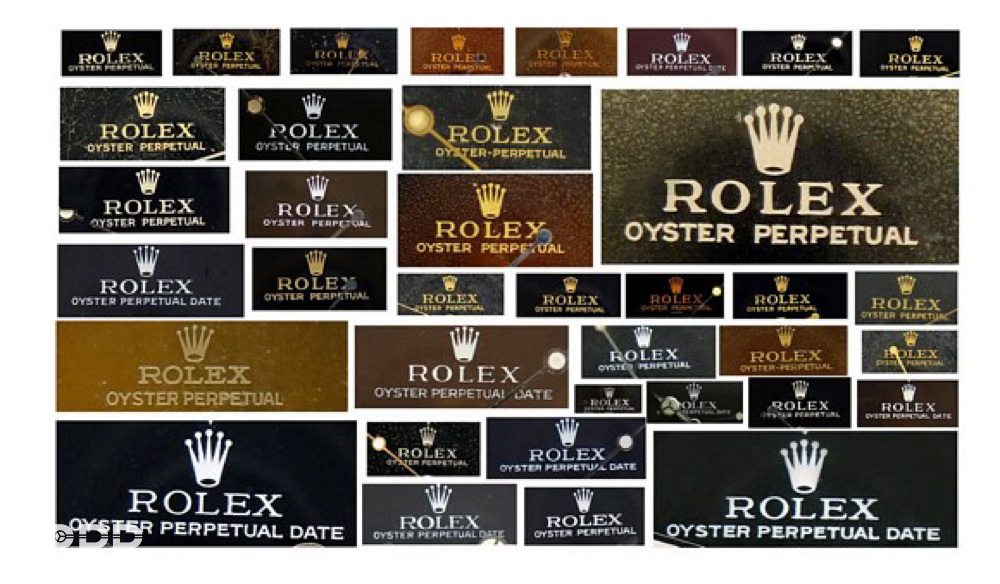
Every new Rolex reads Oyster Perpetual on the dial. Both indicators symbolize the core of Rolex success of waterproofness and self-winding mechanism and as such can be considered part of the Rolex logo. Naturally, this wasn’t always the case. The early dials carry only the Rolex name print, the crown was added at a later stage, followed by Oyster and finally Perpetual. Beware that many watches have been issued blank, mainly because dial suppliers had several watch brands in their customer portfolio. Therefore, it is crucial to check of the Rolex print has been added below the lacquer layer instead of added later on.
You see the ‘Submariner’ text above is more like embossed into the dial (galvanic dial print technique) there where the white depth rate is print don top of the finished dial. The dial maker was using the same dials that where partly printed already for the small and the big crown, except the depth rate, this got added to 100m = 330ft for the small crown or as above, 200m=660ft also for the first Ref 5512’s. Again, you see the usual print embossed there where the dealer name Serpico Y Laino is added on top of the finished dial..
Rolex put more emphasis on chronometer and precision with other watches. The latter indicator applied to watches that were not chronometer tested. You will find this term mainly on steel Rolex, as golden watches often were chronometers.
OCC/COSC
The COSC is the official Swiss chronometer testing institute. Each officially certified COSC chronometer is unique, and identified by a serial number engraved on its movement and a certification number given by the COSC. The acquired COSC certification was mentioned in two lines on the dial as Officially Certified Chronometer. From around 1960 onward, this text was replaced with Superlative Chronometer Officially Certified.
And here some later SCOC = Superlative Chronometer Official Certified
Dealer stamp
It was not unusual for dealers to have their stock of Rolex watches personalized with their own dealer name. Bubblebacks in particular are famous for it. There are three major dealers, whose names can often be found on vintage dials: Tiffany & Co, Serpico y Laino, Joyería Riviera and Linz from Texas, U.S.
Tiffany & Co was founded in the first half of the 19th century and now world famous jeweller. There is not much recorded history available, but dials with Tiffany & Co print probably go back to as far as the 1950s and can be found on practically every sports model out there.
Above the Ref 6263 that’s coming up for sale at Phillips. Below a selection of Tiffany & Co from Pucci Papaleo…
Then this so far unique Tiffany & Co Submariner Big Crown came for sale at Christie’s NY. The whole top printing was newly done so instead of the usual Rolex print we see this new Tiffany print. The only known text is the depth rate of 200m = 660 ft…
The succes of vintage Rolex also has a dark side. For years many the “Tiffany & Co” stamp got added to a dial to make it more sellable and valuable. Find below an GMT ref 1675 before it got a fake Tiffany & Co stamp added to the dial….
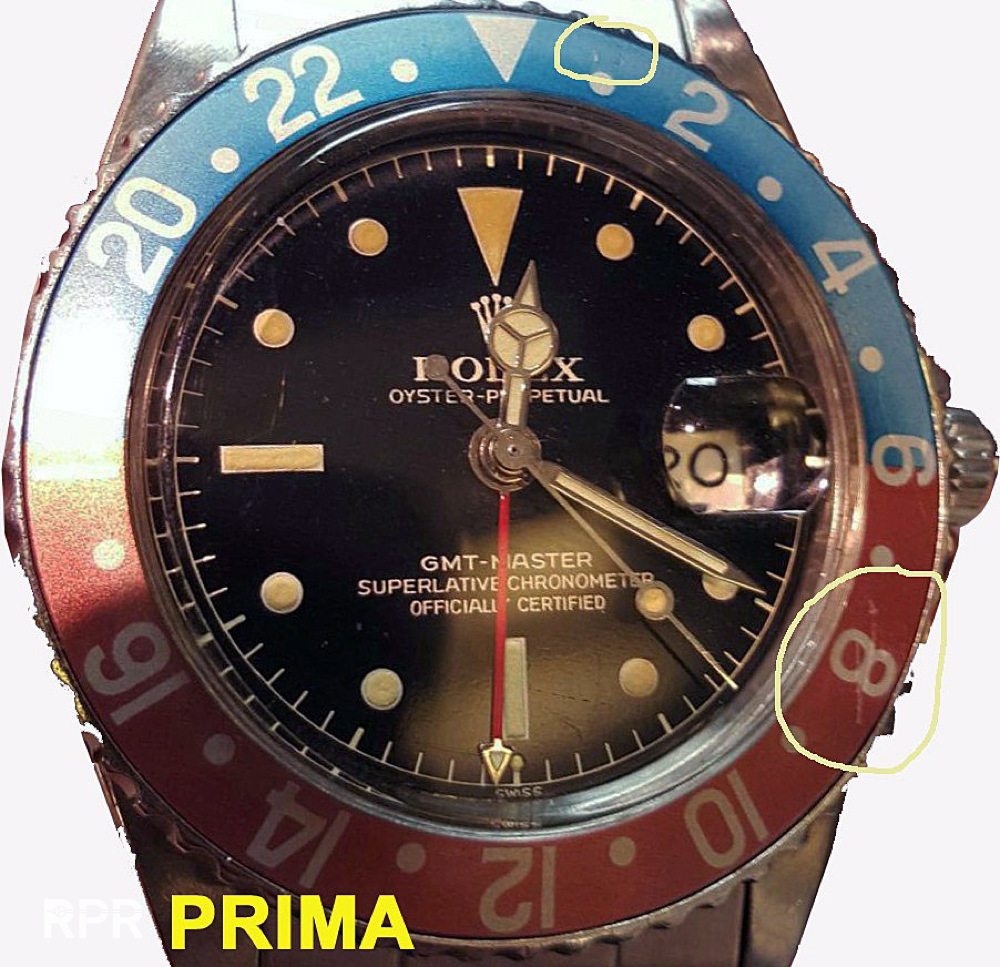
And afterwards included the fake Tiffany & Co print. Apparently the forgers became so lazy they didn’t swap the bezel of to cover up the donor watch. Happily there are always collectors watching and comparing in the market and mention them on a special Rolex forum. Here you can read the article on italian O&P…
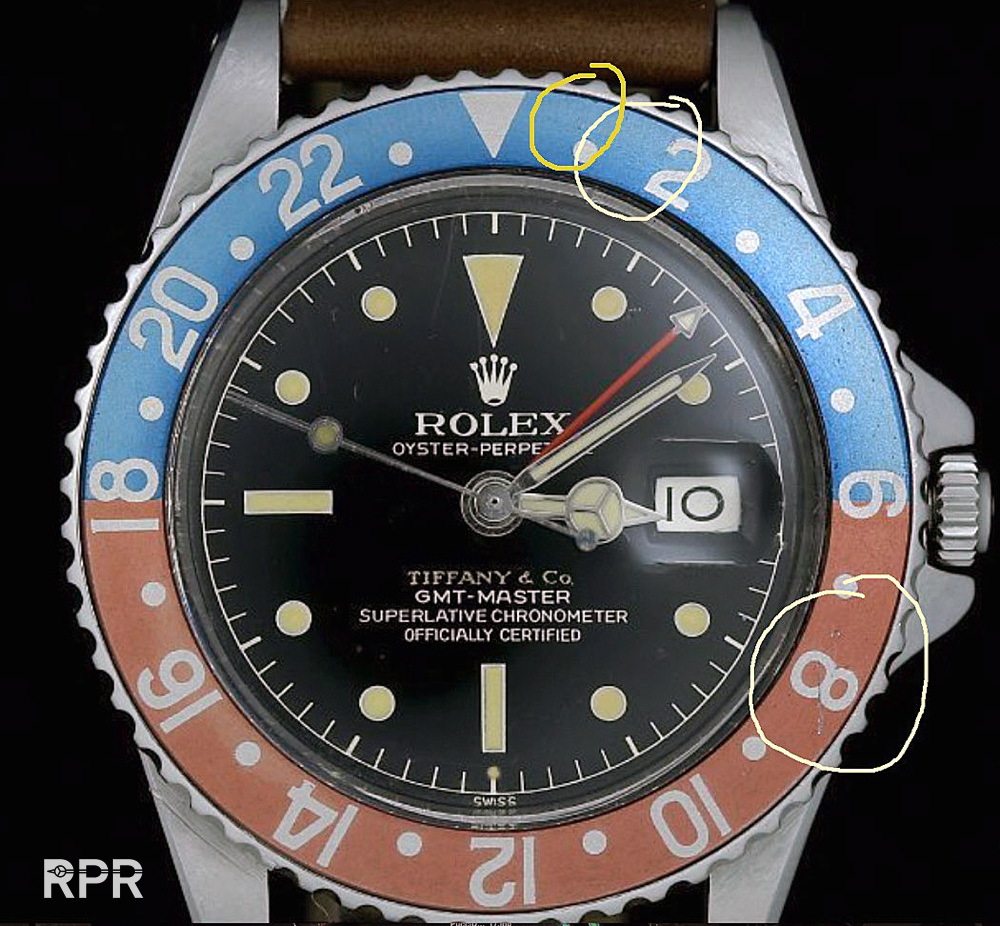
Another one…before the dial was clean, no Tiffany & Co. The 2 x red arrows show a unique pitting this dial has…
Now check the next picture, same 2 pitting at the edge of the dial, marked by the 2 arrows but now with Tiffany & Co.

Vicente Laino and Leopoldo Serpico, two Italians in Venezuela. Serpico ran a small watch shop called Joyería Serpico, where Laino joined him to practice his goldsmith skills. They sealed a deal with Rolex to become the sole authorized dealer of their watches in Venezuela, marking the birth of Serpico y Laino. The shop became famous for selling the best European manufacture watches in South America until it closed in 1966. Many watches originated between 1925 and 1966, carry the ‘Serpico y Laino’ printed on the dial or the initials ‘SYL’ stamped in the case back. Read the SYL story on RPR here….

Here below you find an original versus fake Serpico Y Laino printing on the dial…
The third dealer worth mentioning is Joyería Riviera from Cuba, nicknamed the Tiffany’s of Havana. Founded in 1923, they became Rolex authorized dealer for Cuba. Watch dials were printed with their name during the 1940s and 1950s, The revolution in 1960 made the family close shop and move to Puerto Rico. Read all about this Rolex dealer on RPR….
Above a very rare Rolex Pulsation Chrono signed Joyeria Riviera and below a elegant steel Bubbleback with signed black dial.
Last but not least, the Texan dealer Linz. Back in the days this U.S. rolex dealer was the biggest seller of new Rolex watches and on some examples he added his name. Very typical logo with the N printed backwards. So far not many examples have been found, we know of 2 examples of Paul Newman, one in white which is being offered by Phillips and one in black in private collection.
Special Order Dials
Further more Rolex has created some special order dials, mainly for the middle east. Like the UAE dials and the Oman & Qaboos dials that got fitted in a special signed Rolex case. I will add some more example. You can check out the detailed report about the Rolex Oman in depth story over here…
To start with an almost unnatural color of patina which is at a NOS (New Old Stock) Sea Dweller Qaboos which was never worn and stored in a dark place…
Never ever used Rolex Qaboos Cosmograph, sold and signed on the case back by Asprey of Bondstreet in London..
UAE Daytona & Qaboos Cosmograph are both using a totally different print cliché..
Last but not the least 😉 Here an discovery of a special dial made for Pan Am. In close up you notice the Rolex & Oyster printing is just like the Qaboos & Oman printing all the way up, making room for the special logo. In this case it’s the blue Pan Am logo…
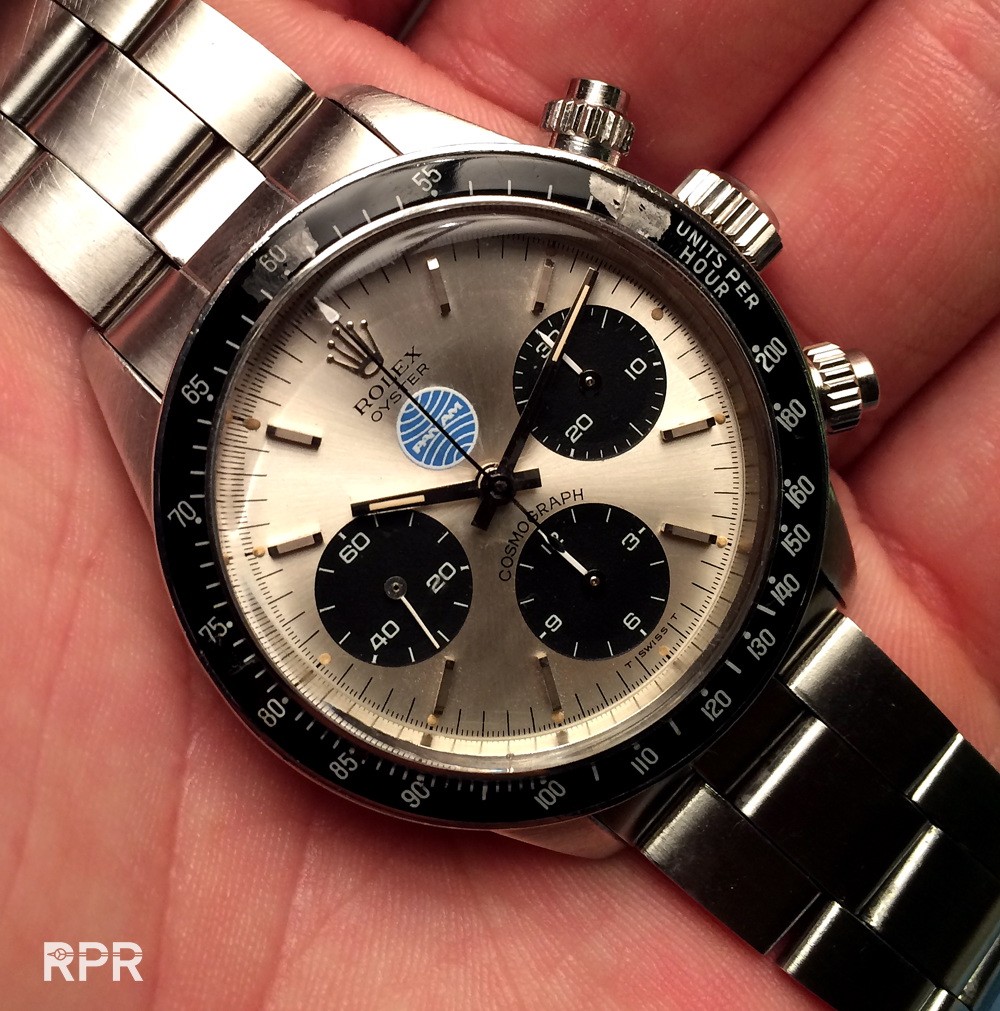
Read all about the Pan Am Daytona here on RPR….
Conclusion
The vintage world of Rolex is an very complex one. If you’re not aware about all different possibilities you will certainly have to reread this article over and over again. The little secrets a dial tells you is extraordinary. From examining the dial up close you can tell what happened inside a watch, even if this is 50-60-70 years ago. The dial has indeed become the centerpiece of modern collecting. Everything around the dial should match the condition of the dial and hands. Only then it’s worth collecting. With this I don’t mean to say that only the rarest and best possible condition you have to buy, not at all! As long as all the loose parts match perfectly together you’ve a great vintage Rolex. If this is a 1016 explorer I, a 1680 red sub or a day date, it doesn’t matter. Buy the best possible condition your budget allows you to. As long as you’ve teach your eyes to spot imperfections and focus on matching originality of all the watch parts, you’re safe. Believe me, future collecting will be al about correct and honest patina!
I do hope you’ve enjoyed my article. If you still have any questions, don’t hesitate to contact me….
Enjoy wearing your vintage Rolex!
Cheers, Philipp Stahl


